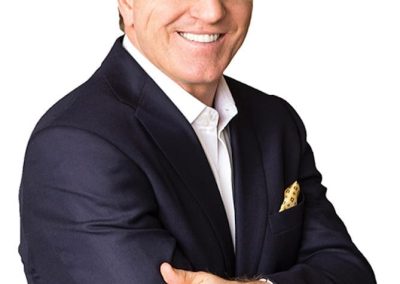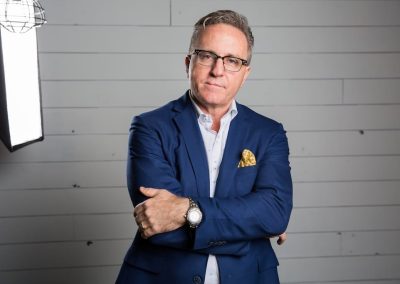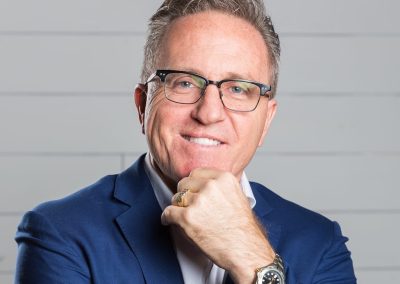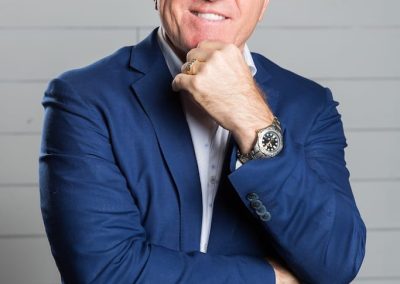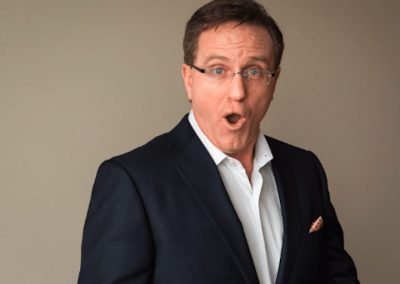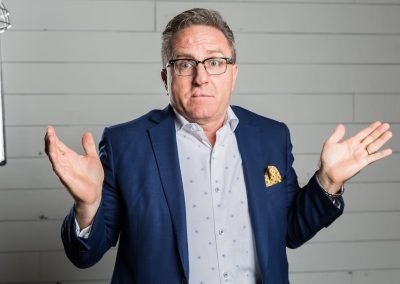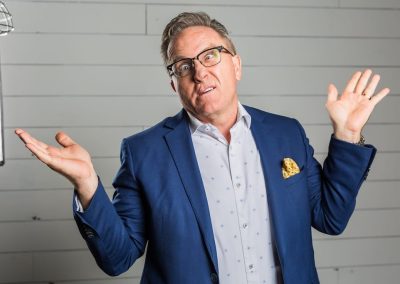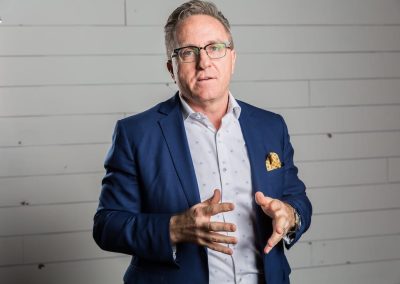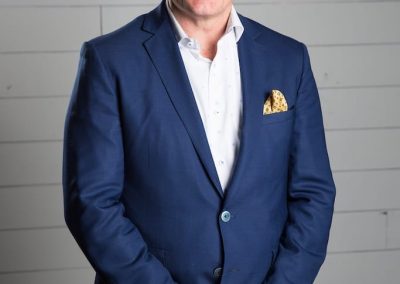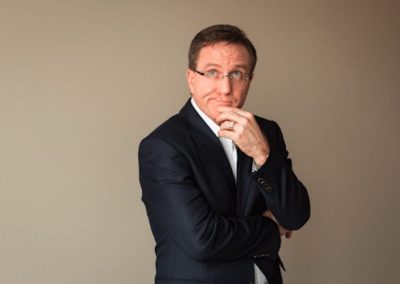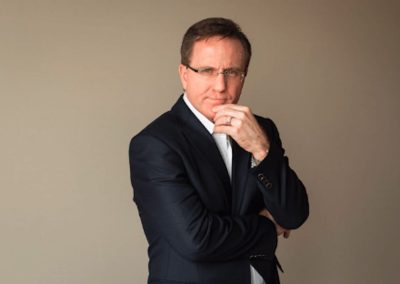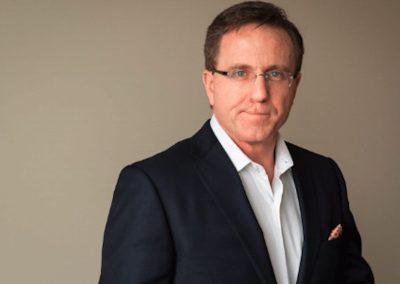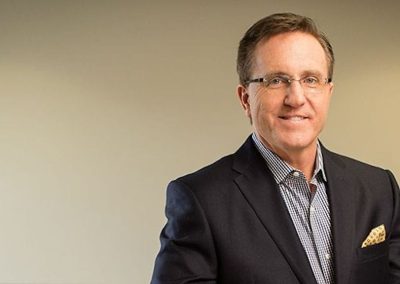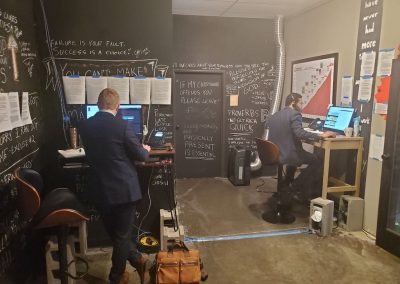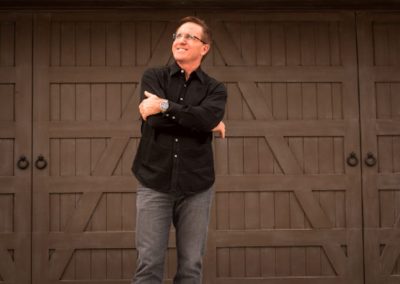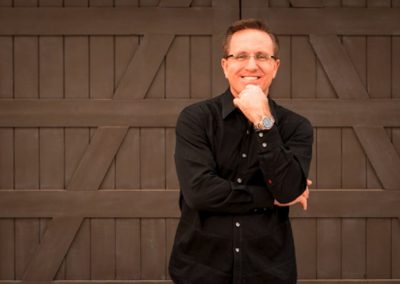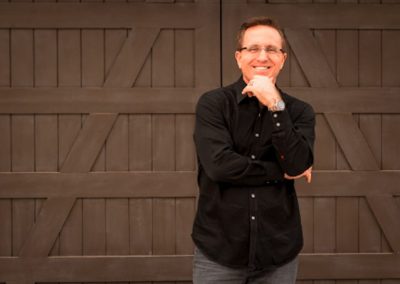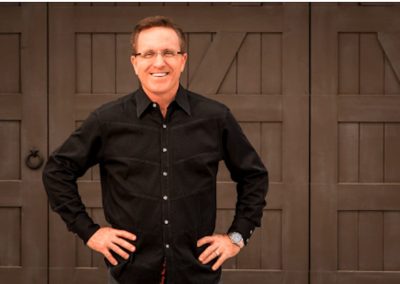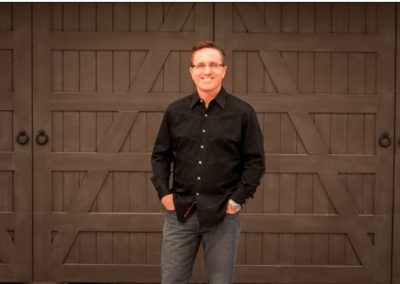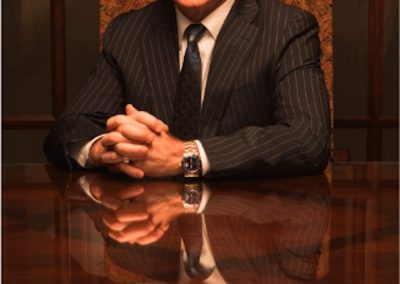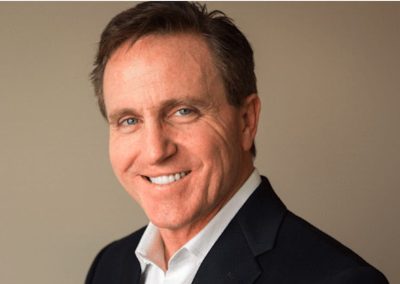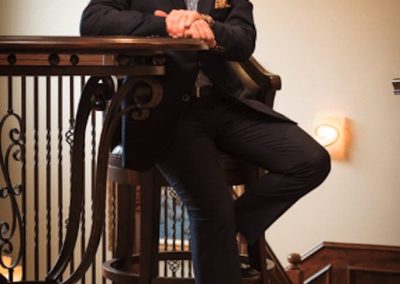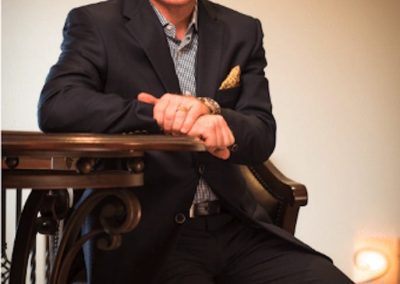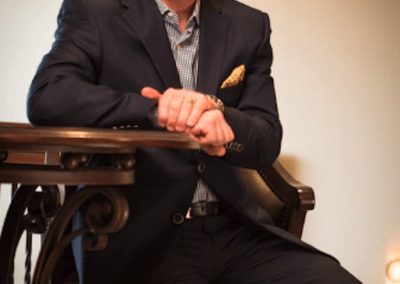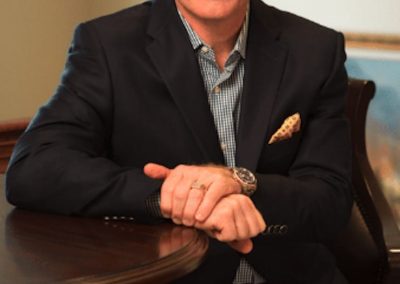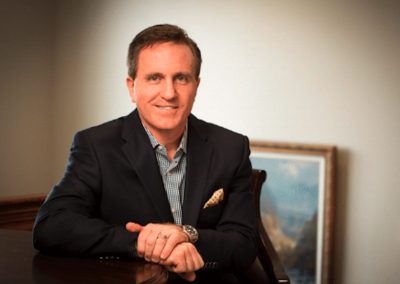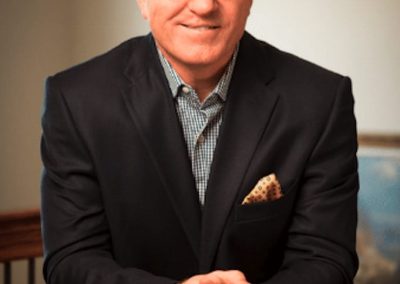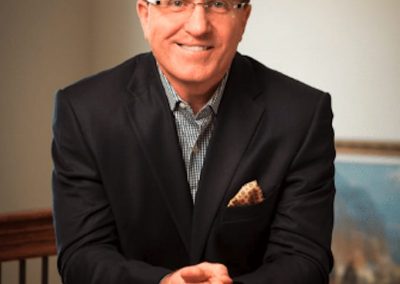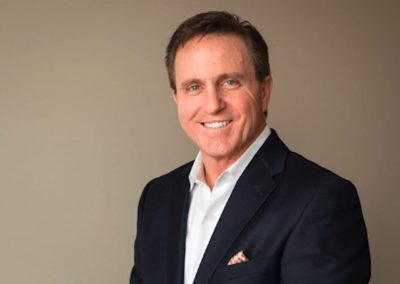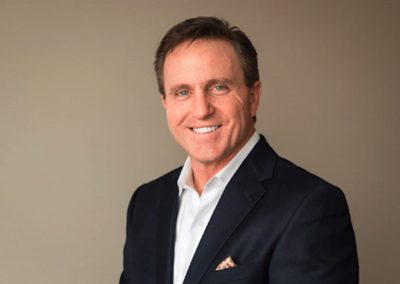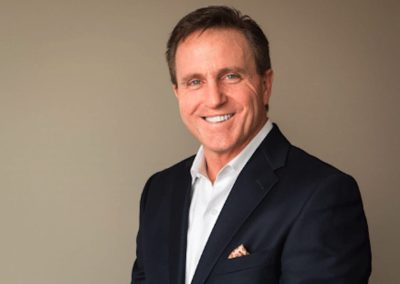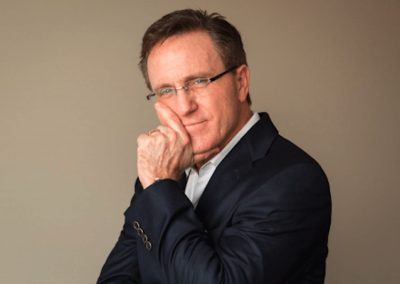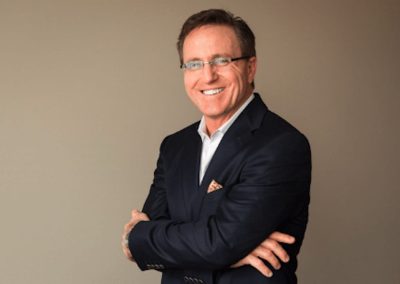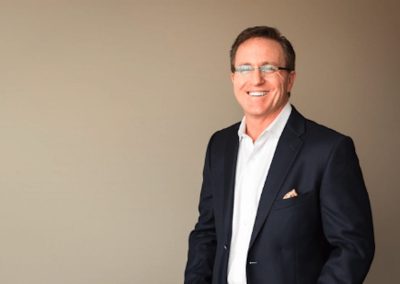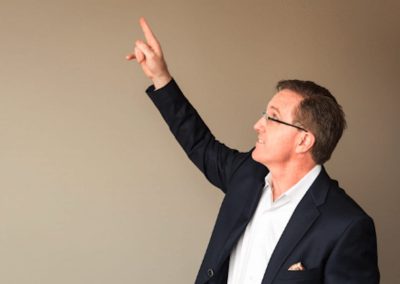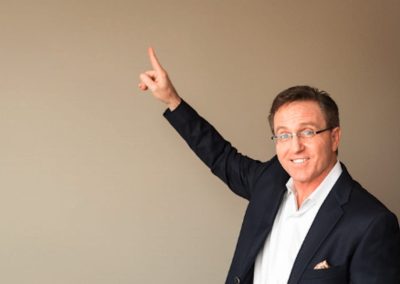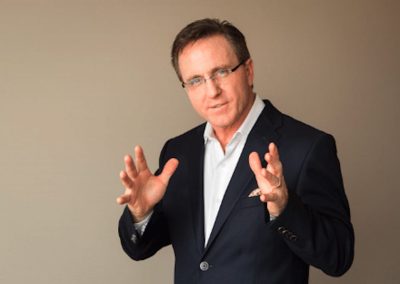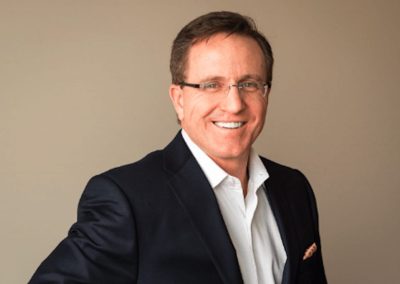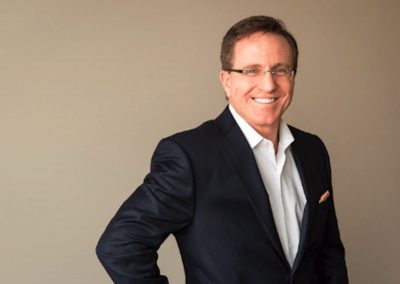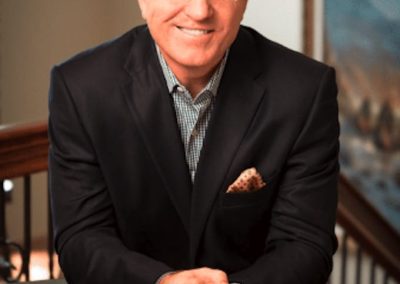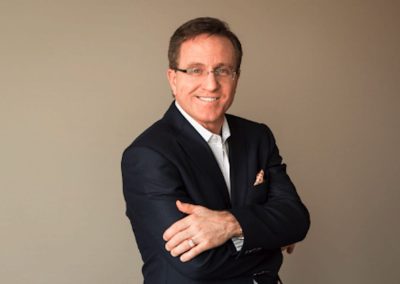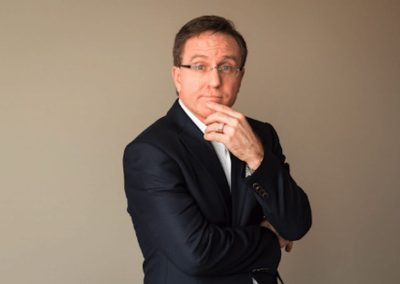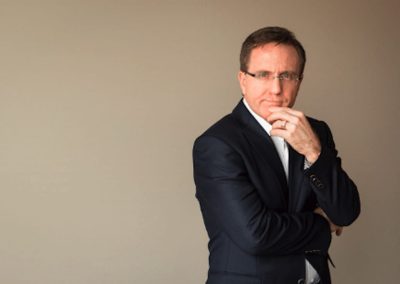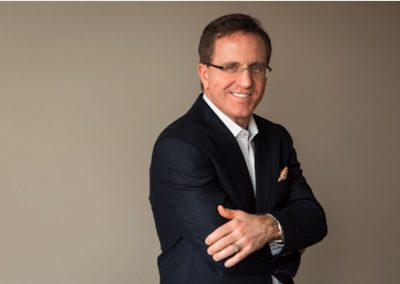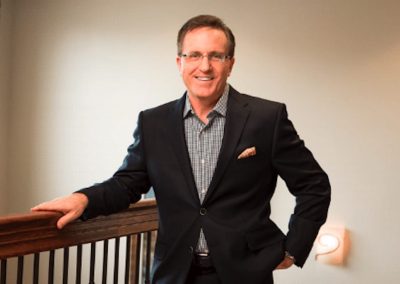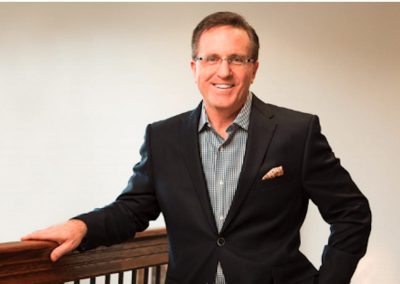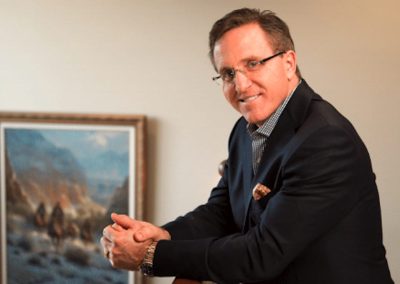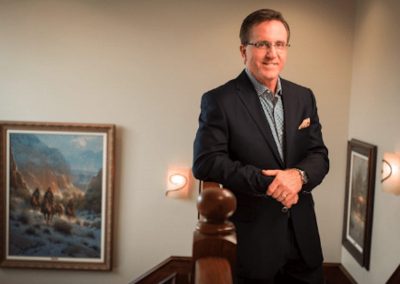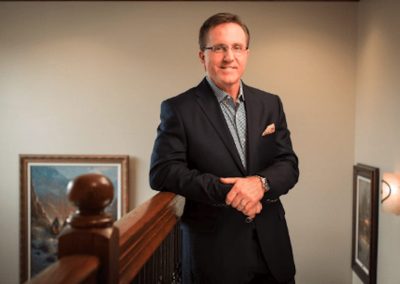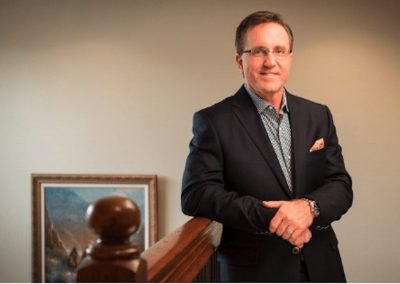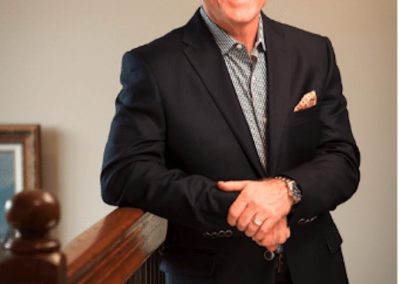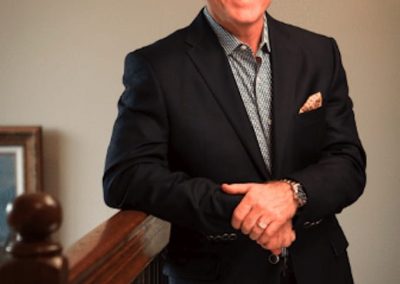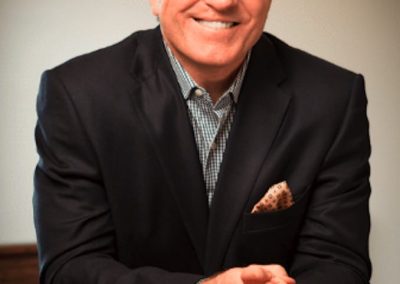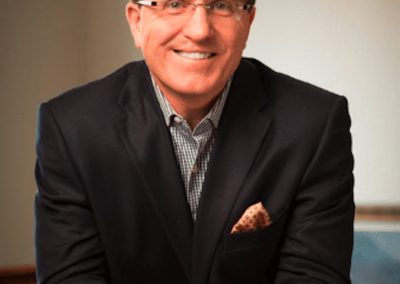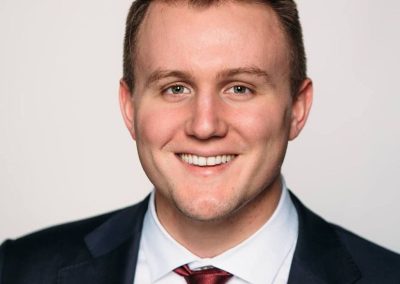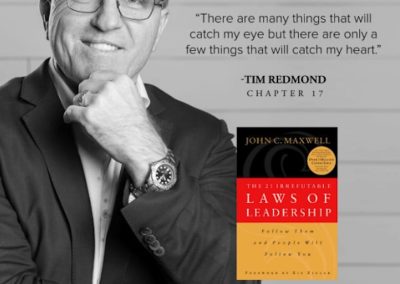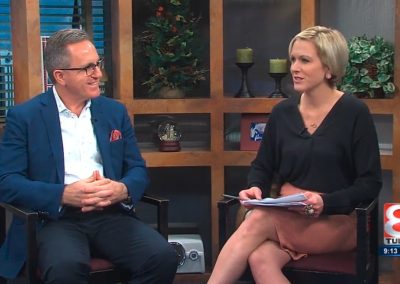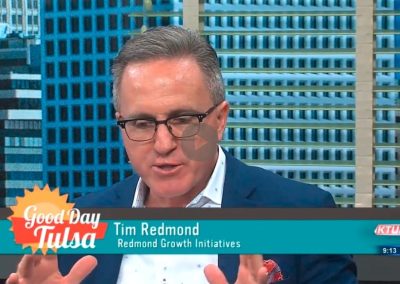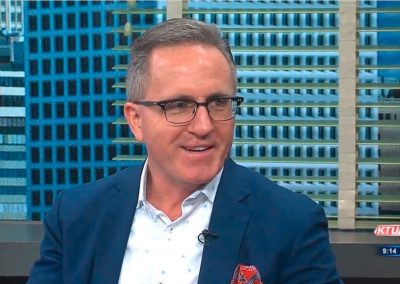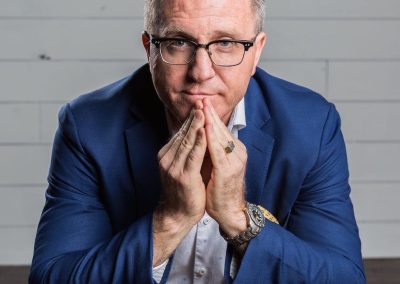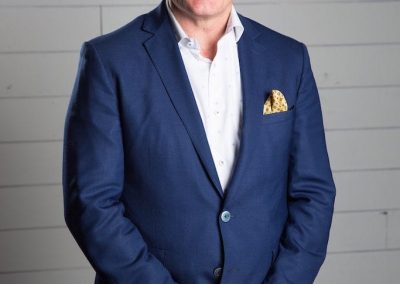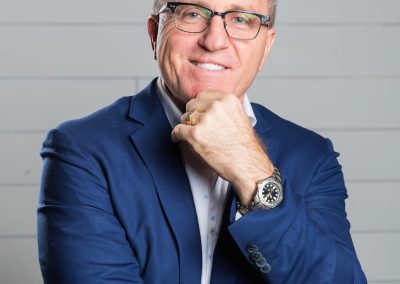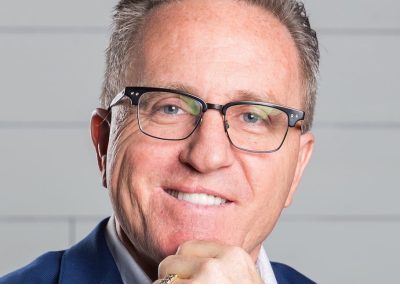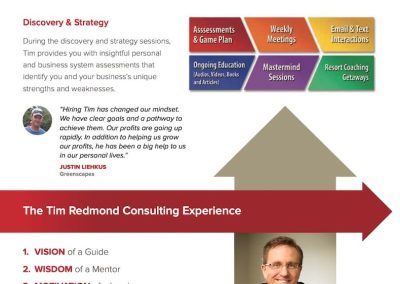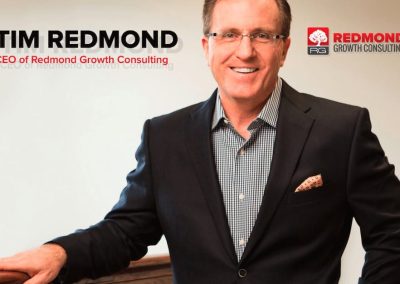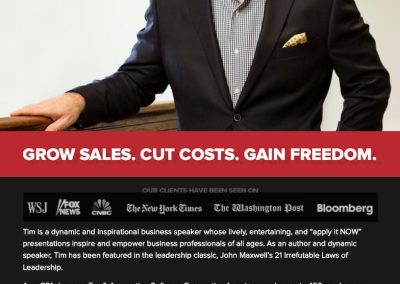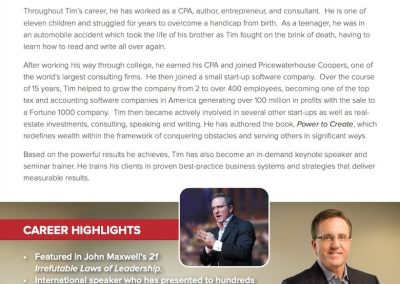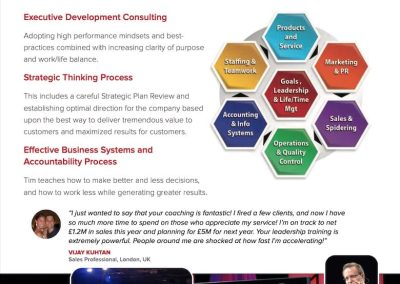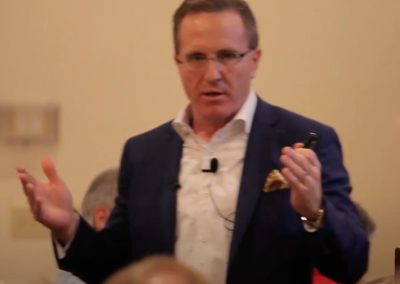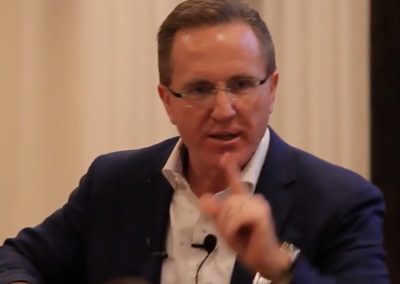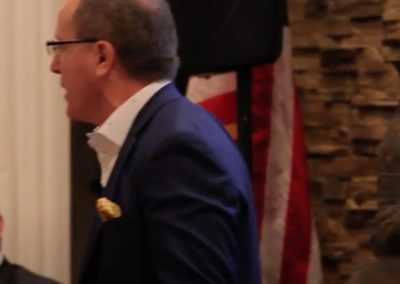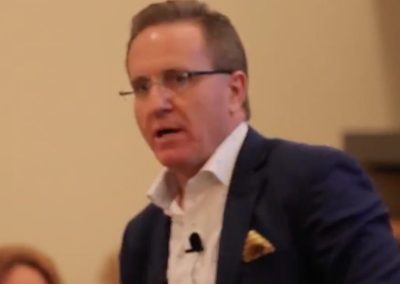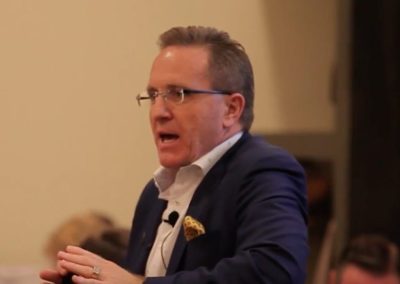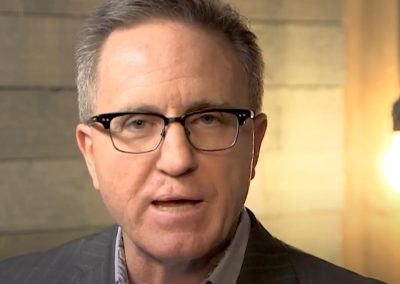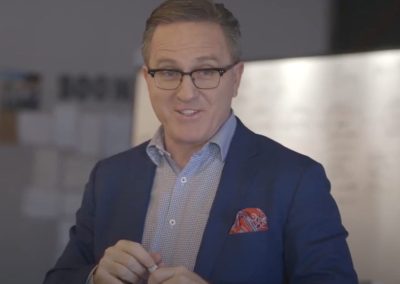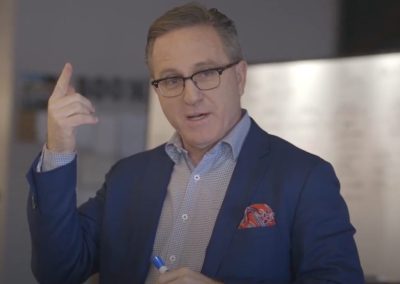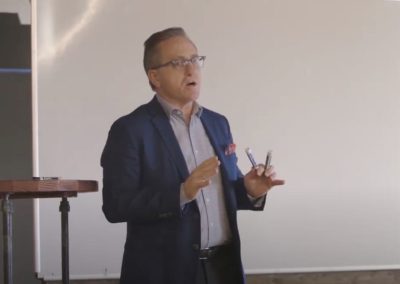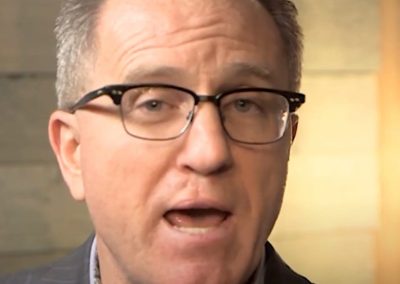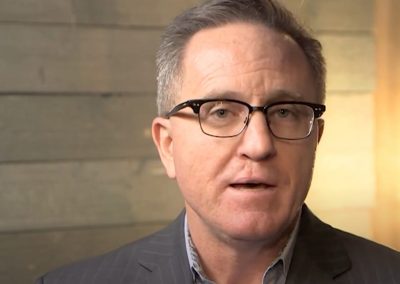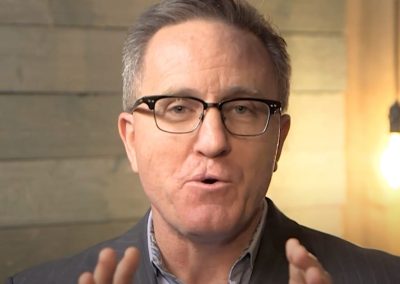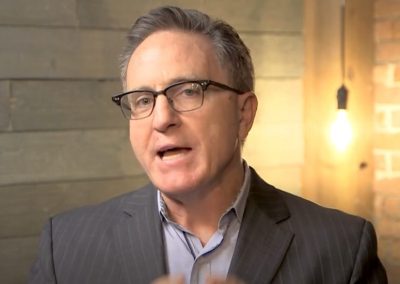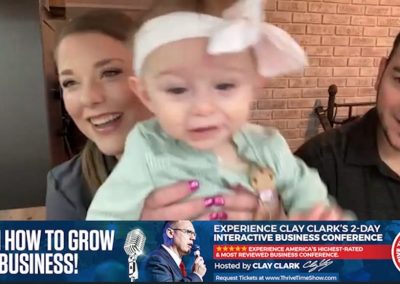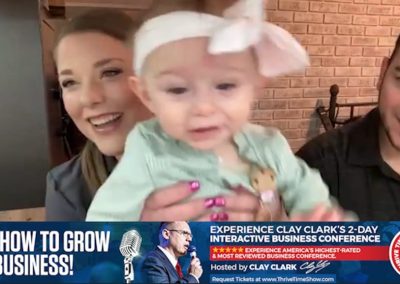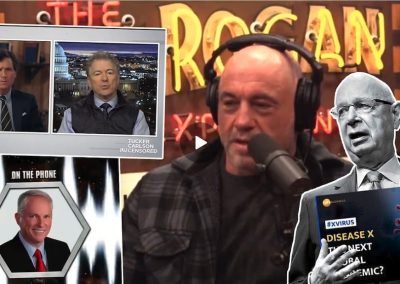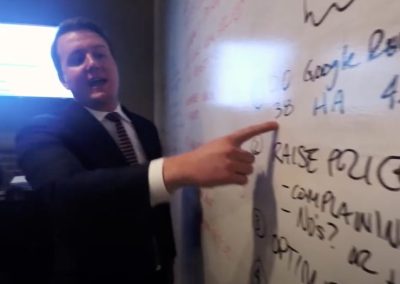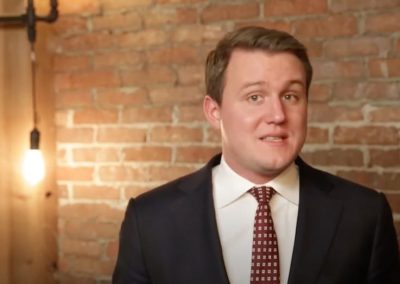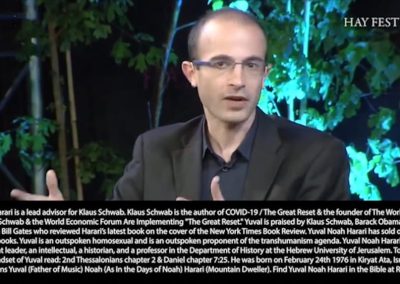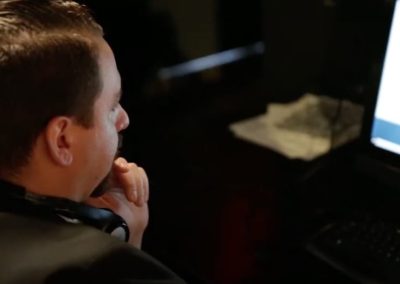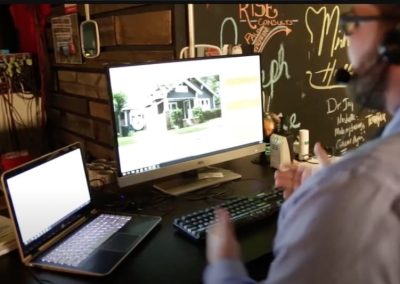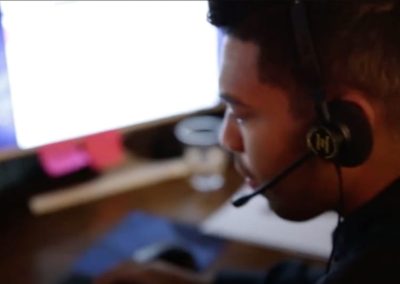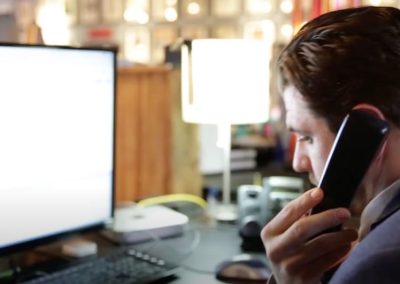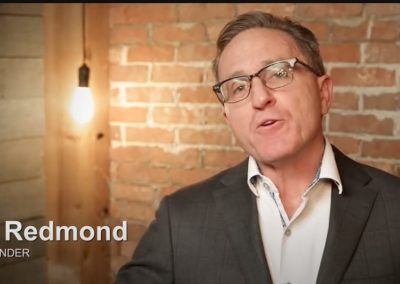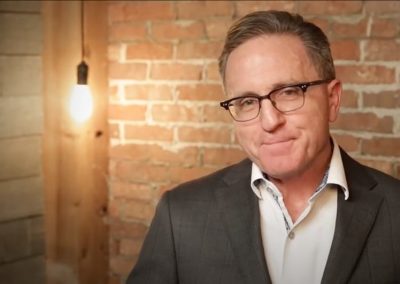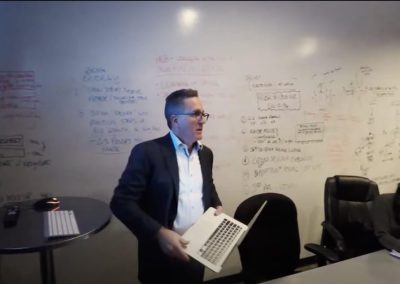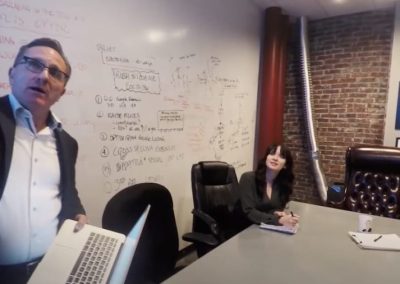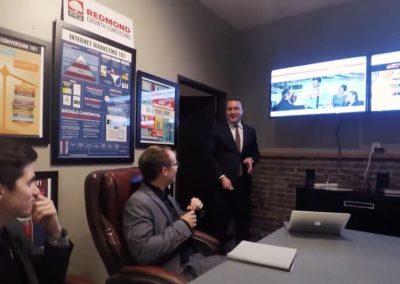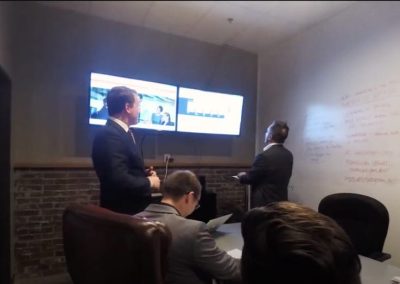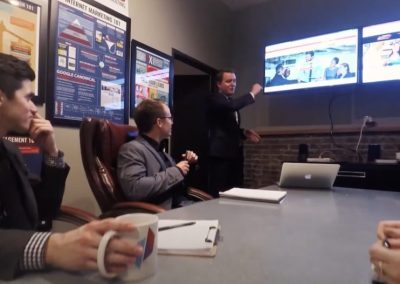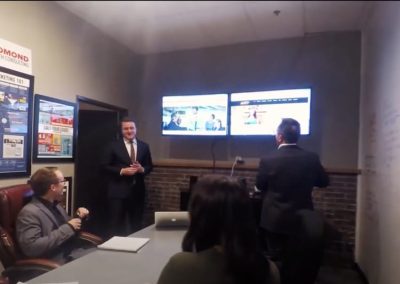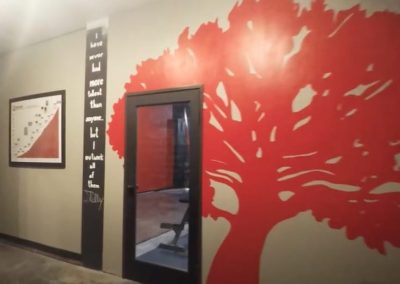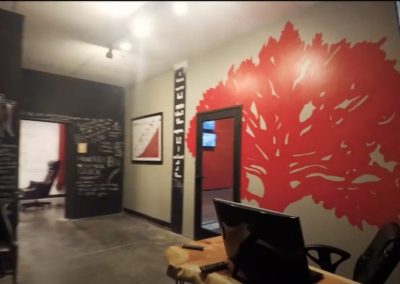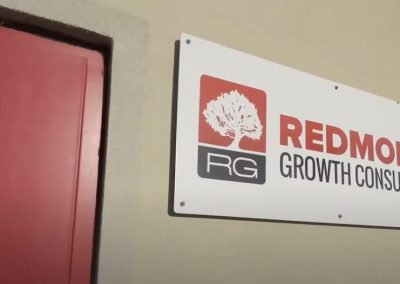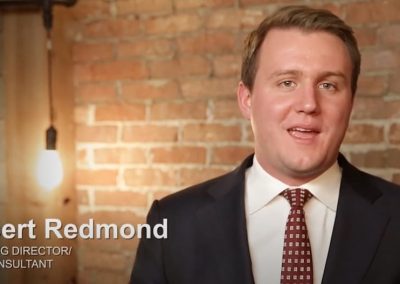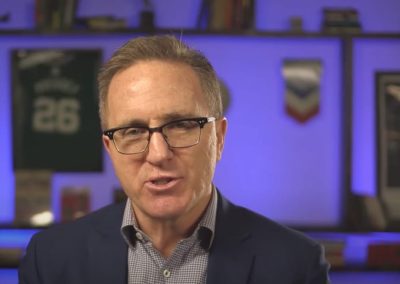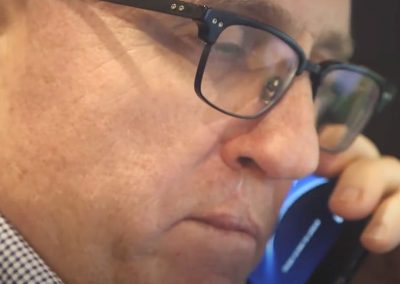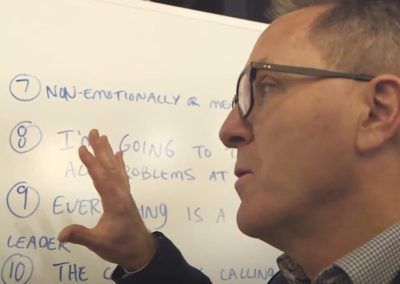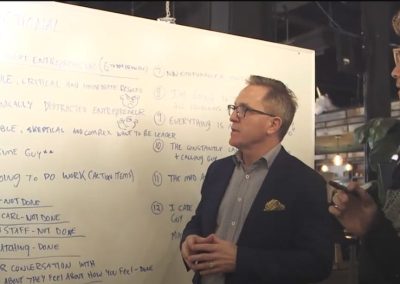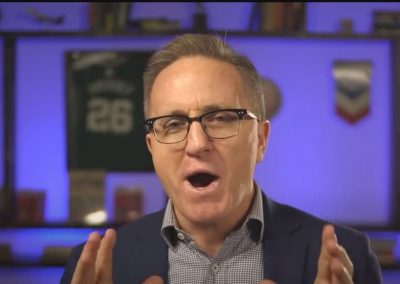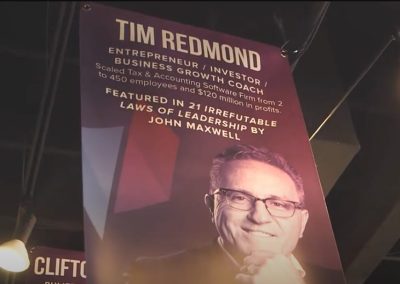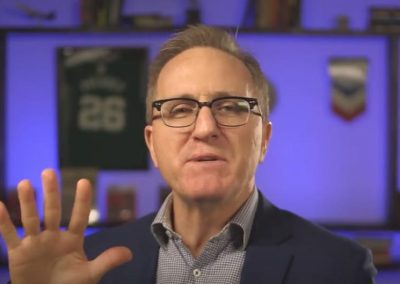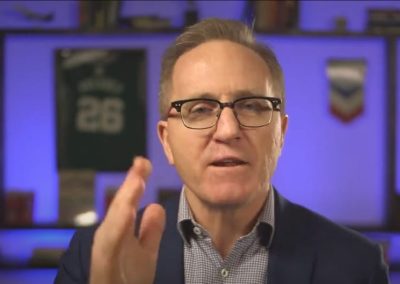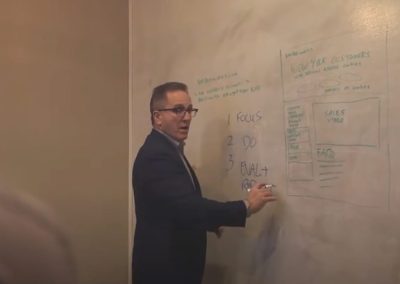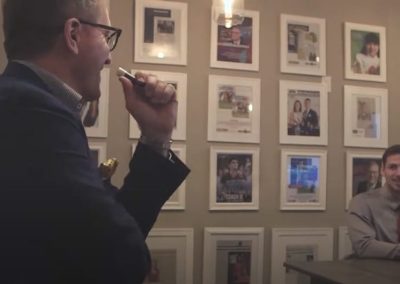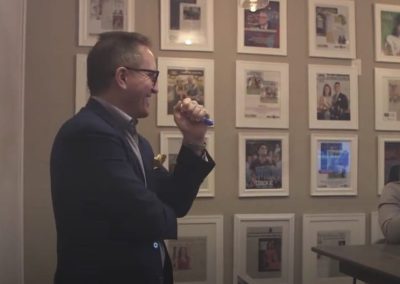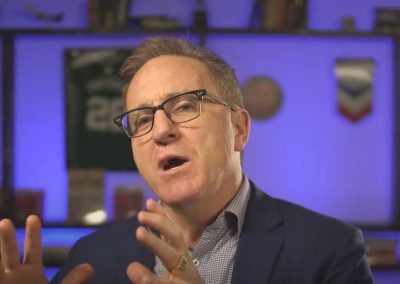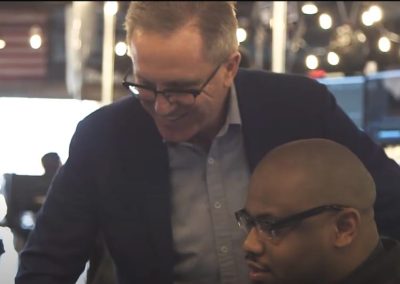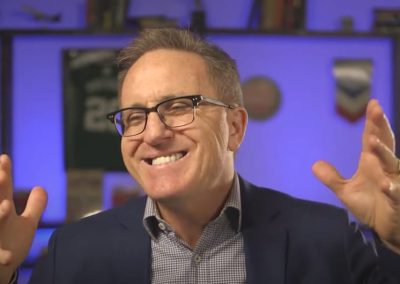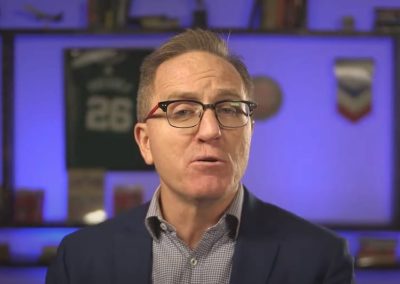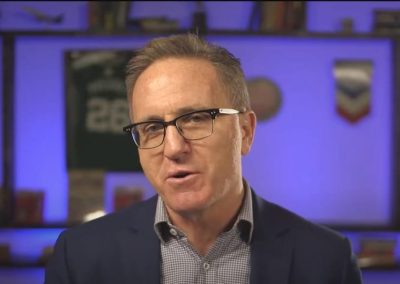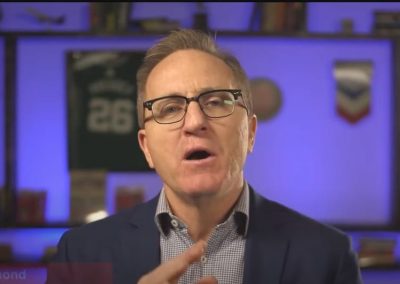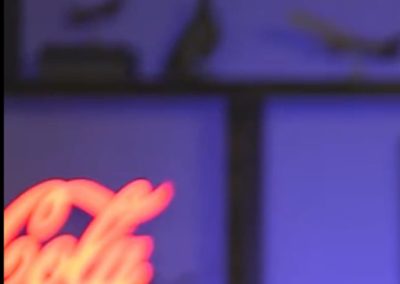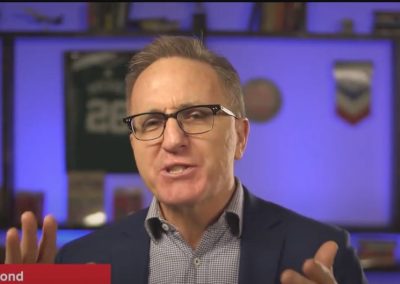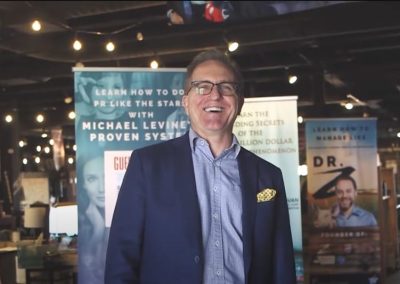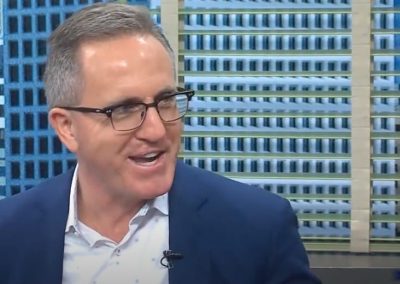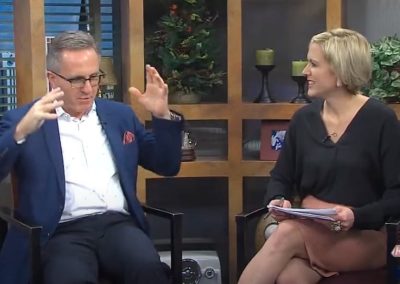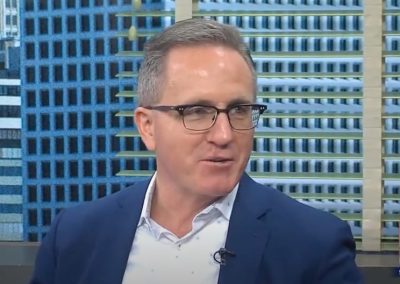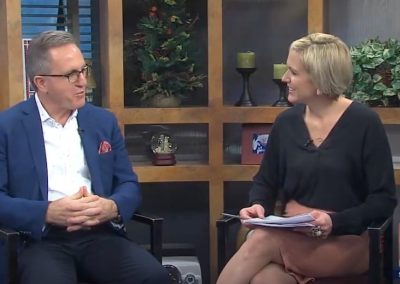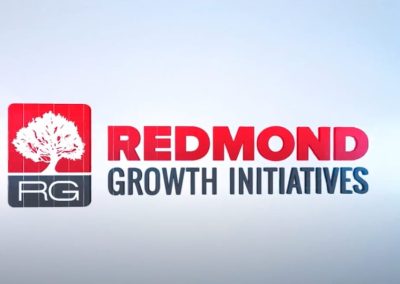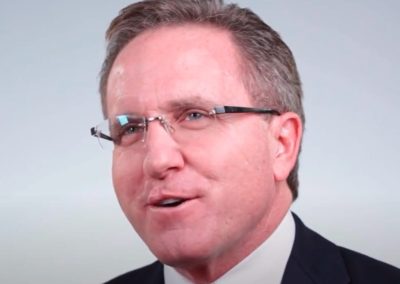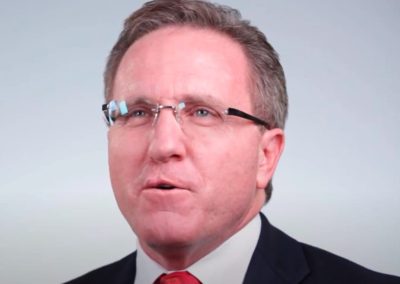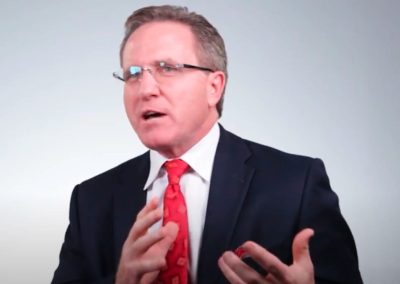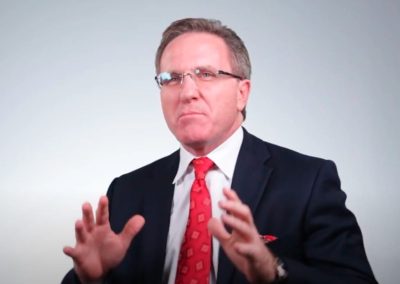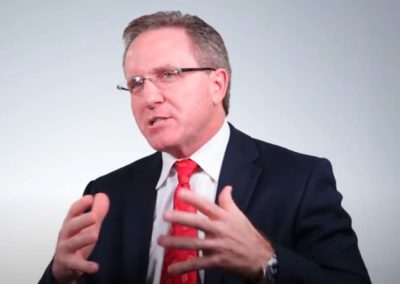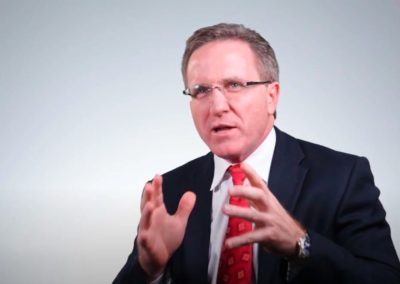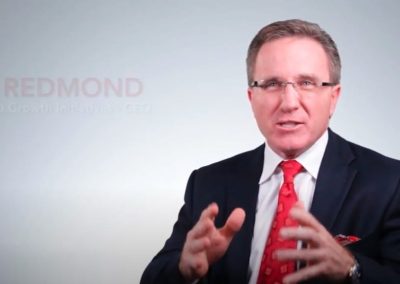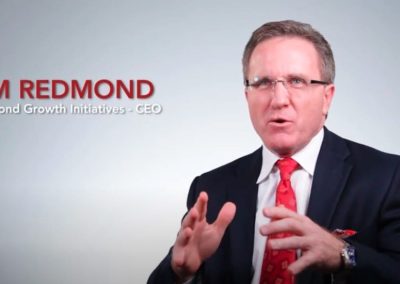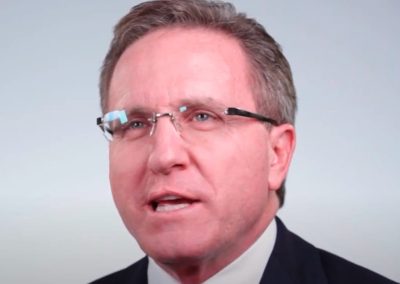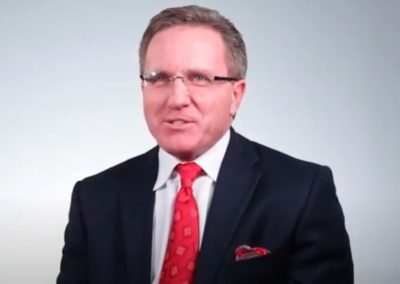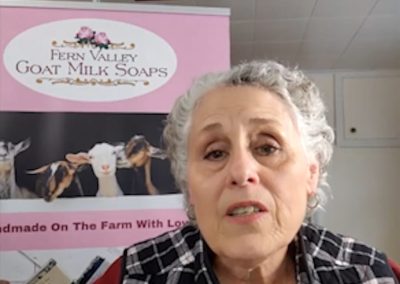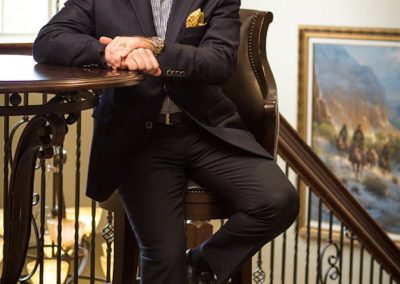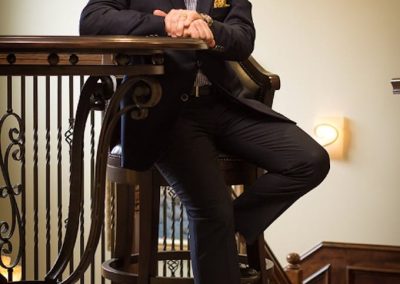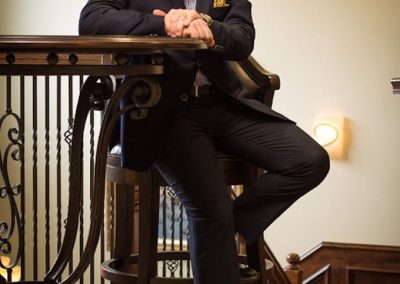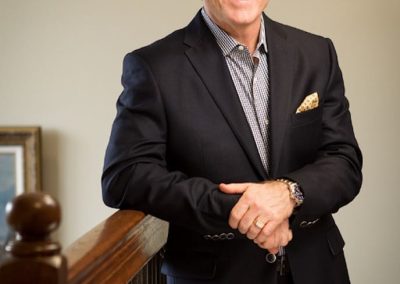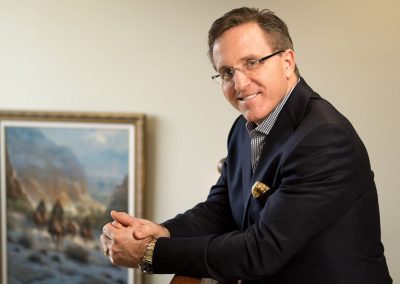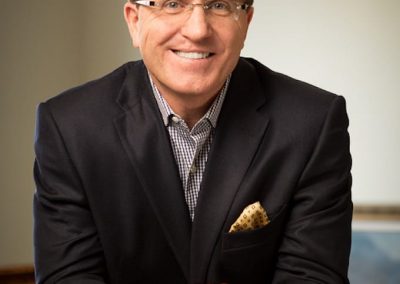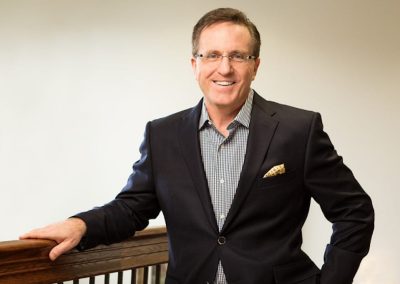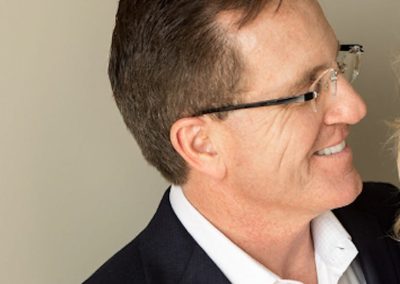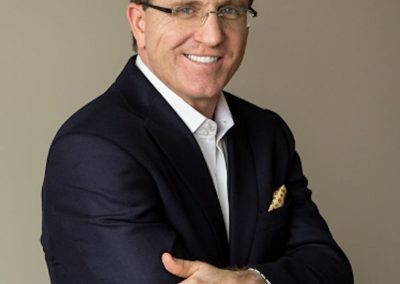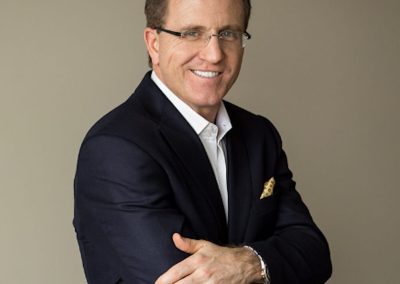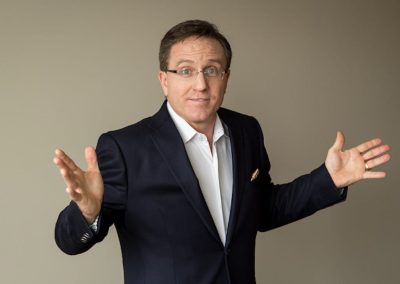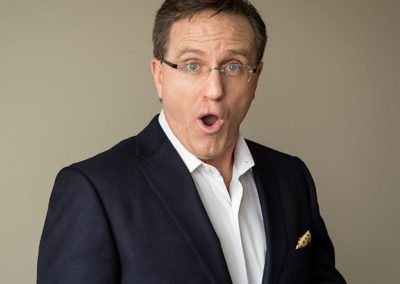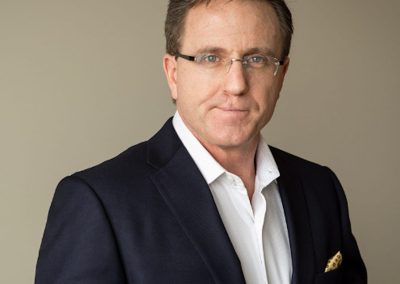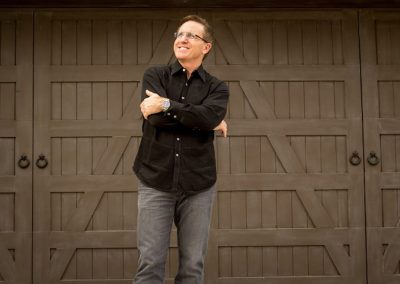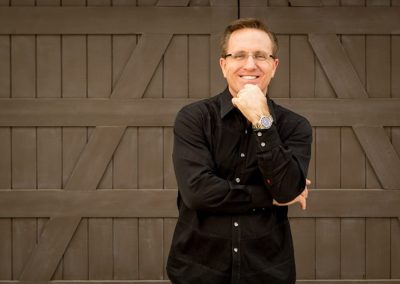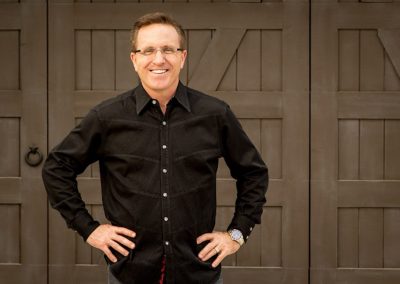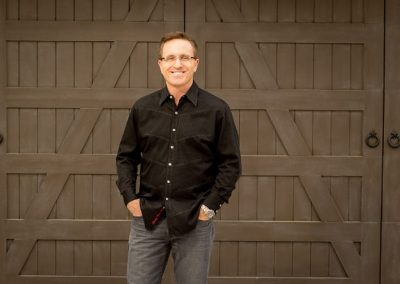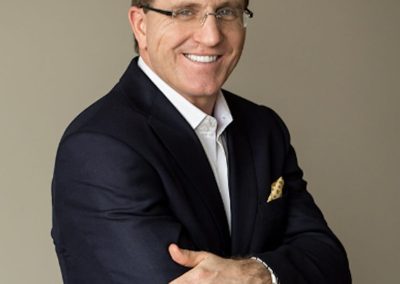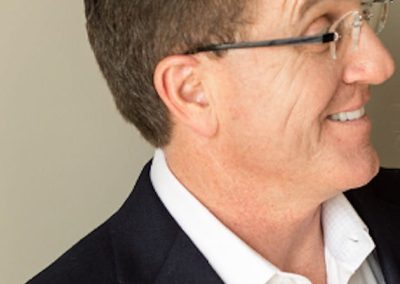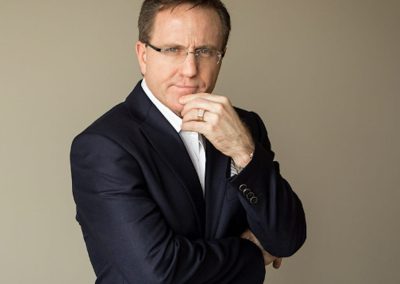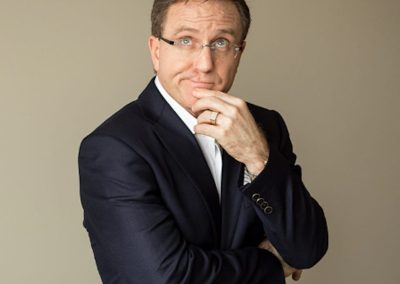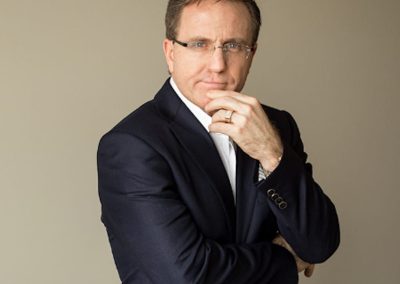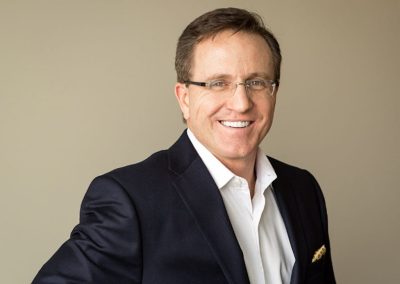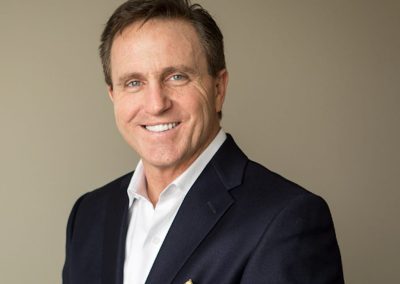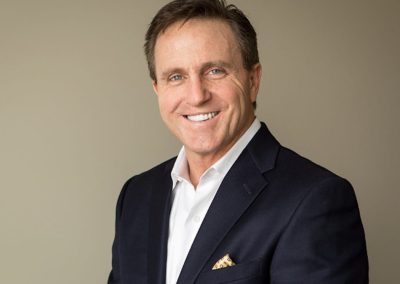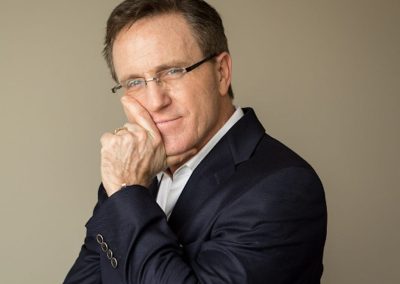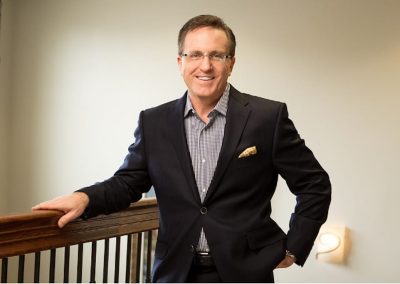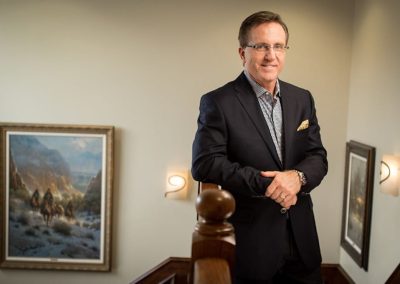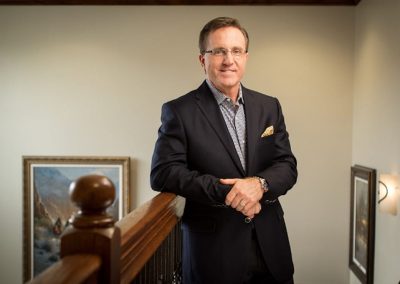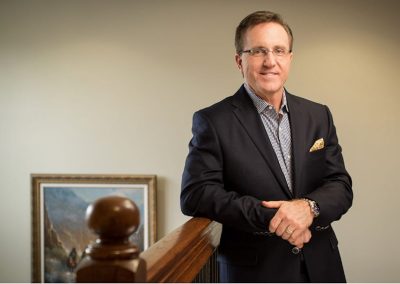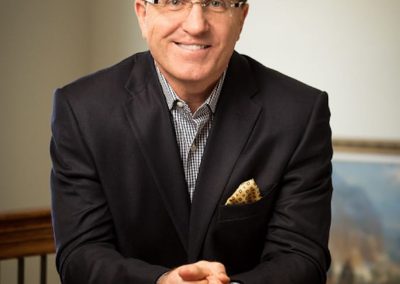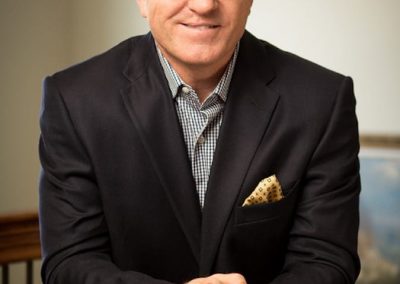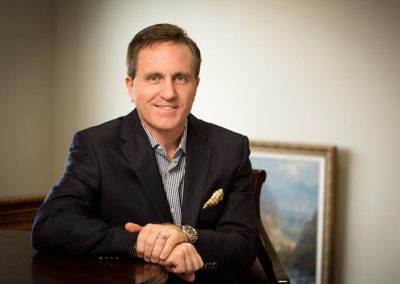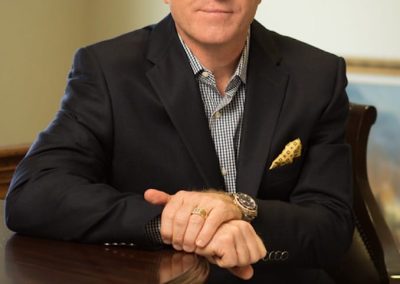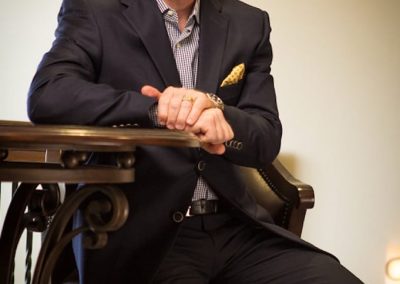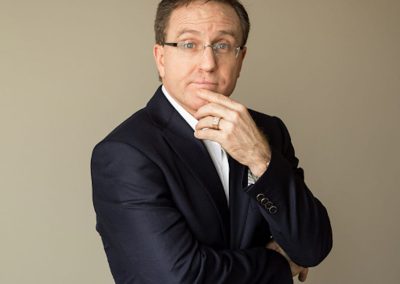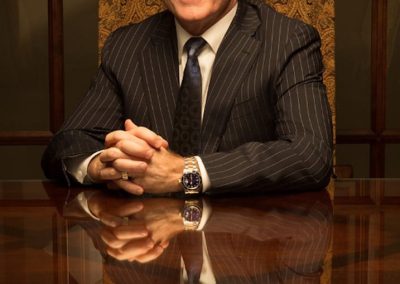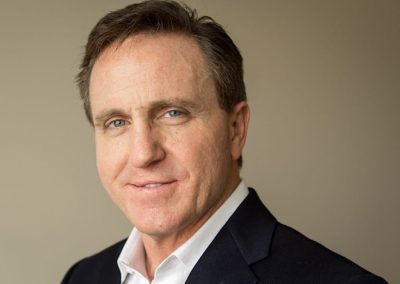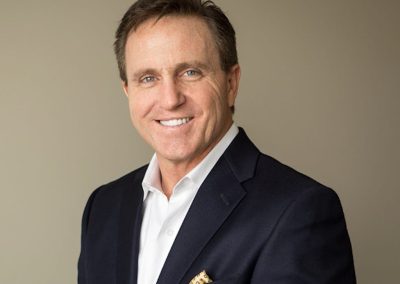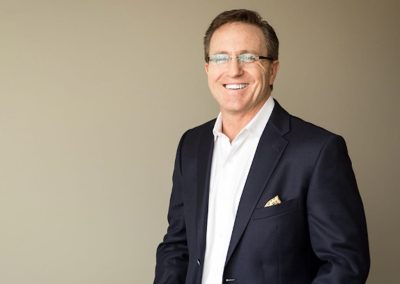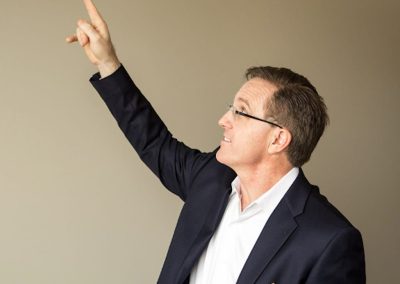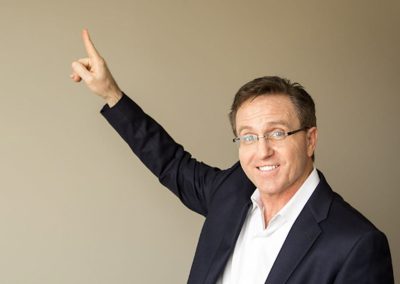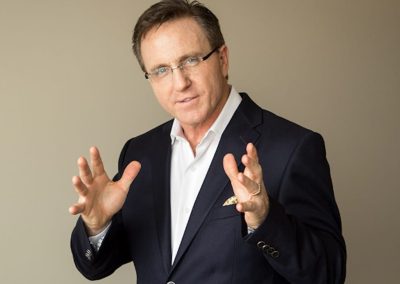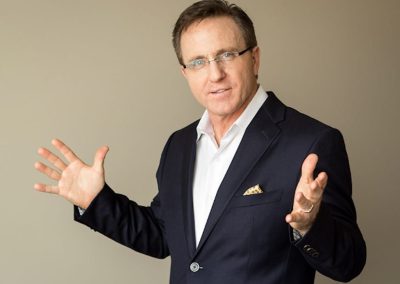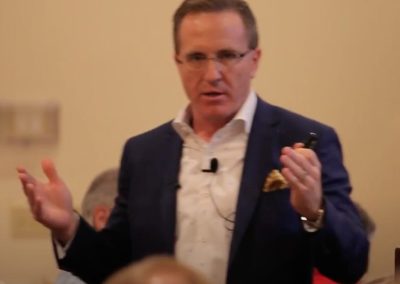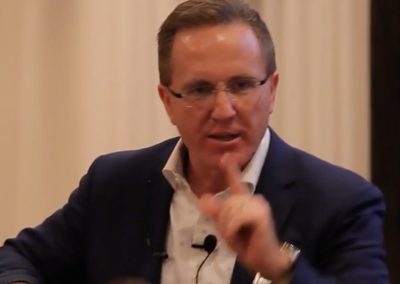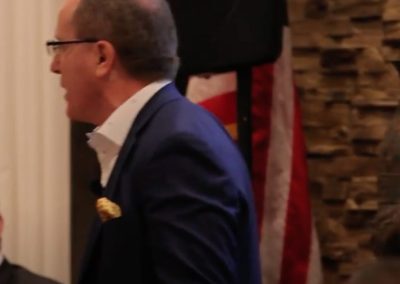Redmond Growth Consulting Tulsa | “I’ve doubled every year since working w/ you.” – Tim Redmond
During the 8 Years That Clay Clark Worked With Tim Redmond, Clay Clark Helped Tim Redmond to Achieve Tremendous Success Including:
VIDEO TRANSCRIPT
Speaker 2:
Hey, Erin. Finally, you’re here. We’re already behind schedule. First action is we’re reprogramming everything. Okay so the first thing we need to do is reconstruct the API, the SSO, and then we’re going to have to de-normalize the DB cache. Got it? And once we’ve updated the core cycling unit, then we’ll update the brushing system. Okay. So the first thing we’ve got to do is make sure we’re in and out of the system at the same time. Right, Erin? Perfect. All right. Next project, VIKINGS.
Erin:
VIKINGS?
Speaker 2:
It’s an acronym. Right, Byron?
Byron:
Yeah.
Speaker 2:
All right. You bet. Start with the V. So that’s everything that we need done today. All right? You think you can handle that?
Erin:
But it’s 5:30.
Speaker 2:
Perfect. So we got plenty of time. You got this.
Clay Clark:
Z, on today’s show, we are interviewing the founder and the CEO of Oxi Fresh Carpet Cleaning franchises. Now, my friend, on today’s show, we’re interviewing the guy whose business has 151,000 Google reviews.
Dr. Z:
Wow.
Clay Clark:
396 locations.
Dr. Z:
Wow.
Clay Clark:
What could we possibly learn from this man, Z?
Dr. Z:
A lot?
Speaker 1:
… when we come back going green. Can your small business profit by turning eco-friendly? We’re going to talk with the CEO of one business who says it is working for him. That is the head on Fox Business giving you the power to prosper.
Speaker 3:
Some shows don’t need a celebrity narrator to introduce the show, but this show does. Two men, eight kids co-created by two different women, 13 multimillion dollar businesses. Ladies and gentlemen, welcome to the Thrivetime Show.
Speaker 1:
Show from the
Clay Clark:
Yes. Yes. Yes. And Dr. Z. Guess who is today’s guest?
Dr. Z:
It’s fresh. It’s hot and fresh.
Clay Clark:
It’s hot. It’s fresh. It’s the founder of America’s greenest carpet cleaning company. It is none other than my brother from another mother. Mr. Jonathan Barnett, welcome onto the show, Sir. How are you?
Jonathan Barnett:
I’m fantastic, Clay. How are you doing brother? Are you doing good down there?
Clay Clark:
We are psychologically and emotionally prepared for this interview and we’re just going to ask you a ton of tough questions. Z we’re going to paint them into a corner with tough qu-
Dr. Z:
Hard hitting.
Clay Clark:
All right. So Jonathan, people who’ve Googled that you’ve had some tremendous success throughout your career. So I want to start by asking you about the bottom and the fireworks stand that started it all. How did you start Oxi Fresh?
Jonathan Barnett:
You know, that’s a great question and I get to tell the story quite a bit nowadays, but when you look back at it, sometimes you don’t appreciate the story, your stories of the hard times you’ve gone through, or your beginning. So I think all of us have that. And if you don’t have that out there, that’s why you’re listening to this show right now. So in the very beginning, before I started a carpet cleaning company that was nationwide with 150,000 reviews on the web, there was very humble beginnings.
And I grew up with a single mom that always taught me to work hard in school, work hard in sports, get a good job, this and that. And we grew up without a lot of money, but I saw how hard she worked. So my grandpa, my dad’s side of the family, gave all of his grandkids, and he has a lot of them, most of them, I’ve never met, $10,000 for Christmas. So I was reading this book in my dorm rooms at Oral Roberts University. And Clay, I know we both went to school there. And we didn’t know each other that much then, but we knew who each other were.
Clay Clark:
Yeah.
Jonathan Barnett:
And I know you were an entrepreneur at school as well, and so I think it’s kind of how we knew each other really. But basically reading that book, Rich Dad, Poor Dad, it talks about this guy that had two dads, a stepdad and a real dad. One dad always encouraged him to go get a job, get a good education to get a good job, and keep it safe. And then the other dad was creating jobs for other people, a little more risky. Right? And he watched his dads grow as they got older and the safe dad, the dad with get education, get a good job, he did well at the beginning, but over time the other dad blew him away. And so when I was driving down the road after reading this book with this check in my hand, and I saw out there in Tulsa, which is kind of cool that you’re there, but I’m in Denver now, but I saw this firework stand and it was wintertime, but I saw it and I was like, how hard is that? If someone else can do it, why can’t I do it?
So I started looking up fireworks, where to buy them in wholesale, you buy them in different states, this and that. So I invested that money I had, the 10,000. I bought two or three grand worth of fireworks, drove over to Kansas, bought wholesale fireworks, drove them back, and had to build a stand that me and my buddy, we slept out there for two weeks in the summertime and that two or three grand worth fireworks, we turned into 20 grand in sales. Now there’s other expenses we had, so I don’t want to get all the details of this fireworks story, but what this fireworks story [inaudible 00:05:45]
Clay Clark:
Let’s talk about how tall the fireworks stand was.
Dr. Z:
Yeah.
Clay Clark:
How deep was it and how tall? It was approximately. We have a few more detailed questions about this firework stand. How big was he? Because you were sleeping there, right?
Jonathan Barnett:
Well, so here’s the thing. I had a popup camper I was sleeping in and had a mobile mini that I put the fireworks in so that people wouldn’t steal them at night. But the fireworks stand was actually, it was eight foot by four foot planks, I think, or six by eight, whatever. There was two of them, so it was 16 foot long. Me and my buddy built it. We were so proud of it. We named it college fund fireworks. We put it right next to the big guys and people would stop by and say, hey, I want to buy from you. I don’t want to buy the big guys. I want to support the college kids. We’re like, perfect. So I loved it, but the problem was was that, man, I just had to jump in the hotel across the street every night to take my shower because I had to sleep outside and in town, I traded fireworks for food and my markup on fireworks was four or five to one. So every time I traded someone $5 for the fireworks, it cost me a dollar.
Clay Clark:
Z, I want to marinate on that idea for just a second that he could buy fireworks and then sell them for four or five times more than he paid for them.
Dr. Z:
Wait a second. Wait a second. Time out. Time out. Time out.
Clay Clark:
Yes.
Dr. Z:
Is that an ethical?
Clay Clark:
Well, I would like to get into the ethics of this with you because this is a question that I think somebody out there is asking. Okay? So in the optometry clinic, in the optometry game, in the jewelry game, in the auto auction game, and in the banking game, these are all different industries that we know about. I’ve coached in different businesses and you’ve owned them. So let’s talk about jewelry. Why in the jewelry industry is the markup so much higher than it would be in other industries? How come some industries have more markups than others?
Dr. Z:
I think it’s a pleasure item. It’s also it has a distinct feel to it. I mean, when you’re buying jewelry, what are you really buying? You know, you’re buying love.
Clay Clark:
Think about that.
Dr. Z:
You’re buying-
Clay Clark:
That right there is a deep thought for somebody.
Dr. Z:
Is that a deep thought?
Clay Clark:
Well, I mean if I wasn’t married to Vanessa, there’s no way I’d ever buy a diamond.
Dr. Z:
Well, that’s what I’m saying. Now, I don’t know. Back in the day, back in the day when you’d have your little stud earrings in went back when you-
Clay Clark:
I had hoops.
Dr. Z:
That’s right. They were hoops.
Clay Clark:
I had hoops. I had hoops. I still have the holes in my ears. They won’t go away.
Dr. Z:
Oh. We need to tag a picture of you back in your prime on the show, on show notes.
Clay Clark:
Oh. Yes.
Dr. Z:
Maybe you’ll stand up and do that. That’d be kind of fun.
Clay Clark:
Yeah.
Dr. Z:
‘Cause I think the Thrive Nation would really like to see the old Clay Clark.
Clay Clark:
Here’s what I’ll do. Before you and I leave today’s recording session, we will do a show about the old, I’ve got some really good audio files that I think you would love.
Dr. Z:
Perfect. But I think that jewelry’s one of those that it’s a, and then I think also too, by marking it up a lot, it gives them a lot of opportunities for discounts. And so a lot of times you can say half off price, which means I’m not going to rip your head off completely, just partly.
Clay Clark:
So I’m not going to ask you for the specific margins you have on your specific items, but let’s go with the auto auction. In that industry, there’s no way you could have a four and five time markup on a car at an auto auction. Could you?
Dr. Z:
Well, the thing about an auto auction is, you know, I don’t actually sell the, I just do the service.
Clay Clark:
Yeah. You’re a broker-
Dr. Z:
So let’s look at an auto dealership for instance.
Clay Clark:
Lets do it. Okay. Yeah.
Dr. Z:
Yeah. Their markups are much less. Now on a used car, if bought correctly, sometimes they can buy a car for 10 to $15,000 range, let’s say, and they can add up three, four, maybe even $5,000 on top of that and that’s-
Clay Clark:
So let’s say that somebody goes to your auto auction who’s a used car dealer and they buy a truck. I’m picturing a F250 and it’s got about 50,000 miles on it and they buy that thing. I don’t even know if that would cost, but let’s say it was like 25,000 bucks.
Dr. Z:
Okay. 25,000.
Clay Clark:
You’re saying that somebody could then, that the used car dealer could take that vehicle back, clean it up, detail it out, and maybe mark it up $5,000?
Dr. Z:
Yeah. They’d probably mark it at 29,999 or something, put it on their lot, I would imagine. And then hopefully try to get 28, 29 maybe out of it because everybody comes in, buy a car knowing you’re going to do a little dealing wheeling and dealing on it. Right? Now, what’s interesting is this when you talk about the auto industry is that the guys that do the buy here, sell here, they mark those up a lot more.
Clay Clark:
Really?
Dr. Z:
A lot, a lot.
Clay Clark:
Really?
Dr. Z:
Because they have a very unique clientele that can’t get financing conventionally. And so it’s like the poorer you are the worst you get beat up financially.
Clay Clark:
It’s interesting.
Dr. Z:
It’s interesting, isn’t it?
Clay Clark:
It’s very interesting because you think about different industries. I see so many people I’ve met with workshops who are contractors.
Dr. Z:
Yeah.
Clay Clark:
I’ll think of a good example of a contractor that I’m a big fan of is our pool guy right now.
Dr. Z:
Yeah. Always doing a great job.
Clay Clark:
Our pool guy, doing an awesome job. And I’ll say our pool guy, he didn’t apologize for the profit. He says, this is what it’s going to cost for labor and materials and then this is how much I add on as my profit. He didn’t apologize for it. He didn’t feel bad-
Dr. Z:
And he was transparent. That’s unusual.
Clay Clark:
And he did not feel bad about it and I figured that.
Dr. Z:
So unusual to be transparent.
Clay Clark:
That’s not normal.
Dr. Z:
It’s not.
Clay Clark:
But every other pool guy was kind of, not every other, I think five or six people we were talking to.
Dr. Z:
Yeah.
Clay Clark:
But there was like three of them that were just squirrely. They wouldn’t show you what they were spending on materials. They couldn’t give you a hard cost.
Dr. Z:
Yeah.
Clay Clark:
They couldn’t, and so I would just say that you don’t need, but I think there’s more entrepreneurs out there than not who are really underpaying themselves and not marking up their products and services enough to achieve their goals. I think for every-
Dr. Z:
Amen. Amen.
Clay Clark:
For every five that are gouging of somebody with too high of prices, I would say there’s 50 who are underpaying themselves.
Dr. Z:
It’s a shame. And that’s why in my soon to be released book, Business Pig. You know, big pig eats first at the trough. You’ve got to pay yourself and if you’re not, you’ve got to be able to pay yourself enough money to live, you’re not charging enough. And make it with if you can’t charge enough, in other words, if you say to yourself, well I can’t charge that, well try it.
Clay Clark:
Yeah.
Dr. Z:
You may lose a few customers, but overall, when you go up on, when you went up on your DJ, when you went from like 600 to 650, some crazy move. You lose a few. Right?
Clay Clark:
Yeah. I know that with the DJ business, I was doing my first shows for $225, 225, 250, very, very low. And I had this mental-
Dr. Z:
What a bargain they got.
Clay Clark:
I had this mental block though thinking I’ll lose all my customers, all of them, and they’re all going to start talking. If I raise my prices to 500, I’m going to lose all of them. And I stayed there at that poverty line for a couple years just refusing to raise the, because thinking I would lose all my customers.
Dr. Z:
Right. It’s a shame.
Clay Clark:
Yeah. And I think a lot of people stay there. Why do people stay at that level where they’re underpaying themselves? Why do they do it?
Dr. Z:
You know, I don’t know. I think a lot of people just don’t understand all the costs that go into running a business.
Clay Clark:
Okay.
Dr. Z:
So they have just a simple mindset of, okay, I already own my speakers. I’ve got gas and the van, I’ve got a payment on the van. I mean, you don’t realize all the small stuff that goes through either the taxes and the cable company and the phone bills. And…
Clay Clark:
When we think about your optometry clinic, the one by the mall there, Woodland Hills Mall, that piece of land is, that’s a million dollar piece of real estate right there.
Dr. Z:
Yeah. Probably now. When I bought it 26, 7 years ago, I bought it for, guess how much I bought it for?
Clay Clark:
How much did you buy for?
Dr. Z:
Take a guess.
Clay Clark:
Well, right now, based on the side, based on the volume of the construction outside, based upon the weather conditions, based upon these things, I would say a quarter of an acre, right next to the mall.
Dr. Z:
The pat side out in front of the mall.
Clay Clark:
You had to have bought it for $200,000. It was 300. Then I actually paid 310,000 for it. That’s a great story.
Dr. Z:
$310,000.
Clay Clark:
Yes. And today it’s got to be worth at least two $3 million.
Dr. Z:
Well, with the building on it, yes, of course.
Clay Clark:
It has to be.
Dr. Z:
I think last time I had it appraised was 1.5.
Clay Clark:
1.5?
Dr. Z:
Yeah.
Clay Clark:
And then you got to pay taxes on that thing.
Dr. Z:
Oh yeah. Oh.
Clay Clark:
But you’re aware of it. So therefore, when you’re charging someone for the glasses, you’re not just charging them for the glasses, you’re charging them for the insurance. You’re charging them for the real estate. You’re charging them for…
Dr. Z:
Electricity bill.
Clay Clark:
[inaudible 00:13:43] … electricity. So what you’re going to [inaudible 00:13:45].
Dr. Z:
Employee costs.
Clay Clark:
I want to make this actionable for all the listeners out there. What I want you to do is I want you to get out a sheet of paper or maybe a spreadsheet, and I want you to add in every single cost last month that you’re going to get next month, every fixed cost, probably want to add, add them all up.
Dr. Z:
Yep.
Clay Clark:
Add up every single cost. Add them all up. Now on the next column, I want you to add up all of your variable costs. That’s like the cost of doing business, the goods.
Dr. Z:
The goods.
Clay Clark:
The glasses that you buy, that you have to resell, that kind of thing. Add all those up. Get to a total between the fixed and the fixed expenses and the variable expenses and whatever that number is, add 20% on top of that, and that’s about the profit margin you should be making minimum.
Dr. Z:
I would go a little higher because you want to end up at 20 and there’s always that uh ohs for the month.
Clay Clark:
I mean, that’s the minimum though.
Dr. Z:
Right. That’s the minimum. I would probably start with 30 and hopefully you can end up at 25 in your pocket.
Clay Clark:
Can we talk about rushing to the bottom for a second? Rushing to the bottom. It’s almost like, [inaudible 00:14:44].
Dr. Z:
I thought you could say Russian to the bottom. I go [inaudible 00:14:46].
Clay Clark:
What is this The Hunt For Red October or something?
Dr. Z:
[inaudible 00:14:48] Putin show.
Clay Clark:
I want to talk about this though. There are a lot of business owners that want to bottom feed and be the carp of that industry. They’re rushing to the bottom, the cheapest price, the cheapest service, the cheapest employees, cheap, cheap, cheap. Now if you have that mindset that you want to be the Walmart of your industry, what pretty much always ends up happening, unless you’re Walmart.
Dr. Z:
You have not a very good business.
Clay Clark:
And you can’t pay really good people.
Dr. Z:
You can’t pay really good people.
Clay Clark:
And you can’t use good products.
Dr. Z:
And you can’t use good products.
Clay Clark:
And you can’t do good in advertising.
Dr. Z:
Forget that.
Clay Clark:
And you end up living in a van down by the river.
Dr. Z:
Ta-da.
Clay Clark:
Now what kind of a profit margin do you think somebody should have if they have a restaurant? If you are coaching a business owner who has a restaurant out there listening today and they have a very, very nice food and you sit down with them and you discover they have a really crappy decor, crappy location, but great food, so you convince them to move to a new location, new menus, use new decor, new ambiance, new.
Dr. Z:
New.
Clay Clark:
The food, the food is good though.
Dr. Z:
Good.
Clay Clark:
What kind of a margin would you sit down? If you had a buddy of yours who has a restaurant, would you say, buddy, we got to be at least a 30% or a 10%? How would you advise someone to do that?
Dr. Z:
I would shoot any business out there listening. Listen up.
Clay Clark:
Here we go.
Dr. Z:
Any business out there listening, unless you’re some unique, nobody else is doing it. You invent the widget. That is unbelievable.
Clay Clark:
Unless you’re hand making axes out of…
Dr. Z:
Yes. That nobody else can make.
Clay Clark:
… recycled grass.
Dr. Z:
Right. Out of plutonium.
Clay Clark:
Right. Is that a thing?
Dr. Z:
I don’t even know. I don’t even know.
Clay Clark:
It could be.
Dr. Z:
I would tell everybody to shoot for that, shoot for 30% markup and then try to get 20, 25% of your gross sales in your pocket. Now, sometimes the busier you are, sometimes you can give up a little bit of that percentage. Sometimes it’s not about the percentage, it’s about how much you’re making too. So some larger companies, in other words like a Walmart…
Clay Clark:
Walmart.
Dr. Z:
… they don’t try to make 20% of their gross sales.
Clay Clark:
No. They don’t.
Dr. Z:
They can’t.
Clay Clark:
They can’t.
Dr. Z:
But they do so much volume that they can make four and 5% and k-
Clay Clark:
What about people who lose money and then try to make up for it? People who lose money per transaction who try to make up for it with volume? They lose money per transaction.
Dr. Z:
Forbes has a column for these people. Forbes actually has defined these people for us.
Clay Clark:
Okay.
Dr. Z:
Forbes is our business Bible, for those of you don’t know.
Clay Clark:
Yeah.
Dr. Z:
We comment on it a lot because we, for our stuff to be fact checked.
Clay Clark:
Right. [inaudible 00:17:04].
Dr. Z:
We like to go to reliable sources like the Google and the Forbes.
Clay Clark:
It’s called Forbes, but if you want to mispronounce it at home, you could say F orbes.
Dr. Z:
You could.
Clay Clark:
You could. Okay. Back to you.
Dr. Z:
They have a category for that and that falls into their 80 to 90% category of failed businesses. They call it the FB, the failed business.
Clay Clark:
Now let’s talk about this and we’ll get back to the interview in just a second. Let’s talk about this. Oxi Fresh has a great billing system, accounting system. They’ve thought through all the systems. Okay?
Dr. Z:
Right.
Clay Clark:
But there’s a lot of independent carpet guys that are out there that are one of the invoice people. And I know this because I’ve met them and they’ll say, hey, I’m having a cashflow problem. And I’ll say, what kind of problem do you have? They say, well, I cleaned Clay’s carpet. I cleaned Dr. Z’s carpet. I cleaned the carpets. I’m cleaning carpets.
Dr. Z:
I’ve cleaned a record number of carpets.
Clay Clark:
How many carpets are you cleaning? They said, well, I’m cleaning a lot more than before because…
Dr. Z:
By a lot.
Clay Clark:
… because of your coaching and the mentorship. I’m getting two times as many carpets cleaned as before. I’m going, that’s good. They said, no, no, it’s bad. I said, how’s it bad? They said, well, what’s going on? I have been invoicing my clients and they haven’t paid me yet. And now I would say I would submit to the business owner. I would say don’t invoice for carpet nor should the grocery store say Dr. Z, do you want these avocados, these seven avocados and this almond milk? Great. Here’s an invoice. Pay us in the next 30 days.
Dr. Z:
Yeah. We’ll bill you. Remember back at the good old days when they had the hardwood store. They’d throw it on the old Westerns.
Clay Clark:
Oh yeah. Put it on your tab.
Dr. Z:
Yeah. Put it on my- I need a sack of sugar…
Clay Clark:
What is going on with that?
Dr. Z:
… and two two by fours.
Clay Clark:
Can you please explain to me why a business owner would like to, wants to, needs to invoice? Like plumbers, why are plumbers invoicing individuals? See, I had a plumber coming to my house probably, what, three months ago? It was four months ago. He comes to my house and I had a little bit of an issue. He was fixing it and so I don’t remember what it was, but he said, okay, you want to do debit card or credit card after he did the work and it was like 80 bucks or something.
Dr. Z:
Right.
Clay Clark:
I don’t want an invoice.
Dr. Z:
No.
Clay Clark:
No.
Dr. Z:
No.
Clay Clark:
The builder guy doing the work for me right now. He says, hey, to get started building the deck, I need a quarter, 25% down to buy the materials. And then I do draws each week as we go. I don’t want an invoice from this guy 90 days after he completes the job. I don’t want him living like he’s homeless because he’s trying to finance my deck.
Dr. Z:
Exactly. He’s like, I noticed you’ve been wearing the same clothes for the last three days and it looks like there’s some blankets over here by the corner of my house. He goes, yeah, I’ve just been want to get here on time so I’ve been sleeping here.
Clay Clark:
What makes an entrepreneur want to have death by invoice?
Dr. Z:
I don’t know, but you know what? I’m not sure, Clay, maybe, you know, you’ve done a lot of business coaching as the world’s foremost business coach. What do you think is more challenging for a first or a new entrepreneur? And that is to ask for the business or to ask for the payment of the business?
Clay Clark:
I think asking for the payment’s harder for most people.
Dr. Z:
And I think so too. And why is that?
Clay Clark:
I have a l-
Dr. Z:
Why people just have this mental block in their head?
Clay Clark:
Well, I have a lot of reasons and if I can go quasi, quasi political just for a second, I’ll give it to you.
Dr. Z:
Okay. Here we go. Okay. Here we go.
Clay Clark:
Quasi political.
Dr. Z:
Here we go.
Clay Clark:
There was a study that I was looking at the other day and they’re talking about who’s going to run for president in the next two years, Democrat and Republican. And they were showing that well over half of millennials will vote for a socialist if they can choose, a socialist.
Dr. Z:
[inaudible 00:20:19].
Clay Clark:
And then the justifications that I was reading this person explaining, they said that once you have enough, you need to be paying 70% taxes. This is what this person was saying, this candidate. She says, once you earn enough…
Dr. Z:
And we’ll decide that. Right?
Clay Clark:
Have you heard of this story, heard of this thing? This person is proposing a 70% income tax once you’ve made enough.
Dr. Z:
And what is the enough? That’s my [inaudible 00:20:44] what is [inaudible 00:20:44].
Clay Clark:
That is what I’m saying.
Dr. Z:
Oh. I’ve heard variations of this, you know…
Clay Clark:
I think that poverty mentality though of like, okay, just because Dr. Z’s making a lot, now we should take 70%, 70.
Dr. Z:
Go to Canada. I think Canada is way up there too.
Clay Clark:
- Think about 70%. And the fact that the vast majority of people are saying that sounds great. That indicates to me the vast majority of the Americans who are surveyed have a psychological problem that I could not possibly diagnose.
Dr. Z:
Well, no, the average person, the average person, Clay-
Clay Clark:
Not our listeners.
Dr. Z:
No. You’re right. Not the Thrive Nation.
Clay Clark:
Yeah. Thrive Nation, they got it together.
Dr. Z:
But the average person out there, they want to live on somebody else’s money. I mean, why wouldn’t you?
Clay Clark:
Right.
Dr. Z:
If you have no ambition, no drive…
Clay Clark:
There it is. So if you want to live on someone else’s dime, it’s because what you want to do is you want to do the easy route.
Dr. Z:
Well, sure.
Clay Clark:
Water runs down hill.
Dr. Z:
Yeah. I mean, why not?
Clay Clark:
So people are saying it’s easier not to ask you for the money.
Dr. Z:
It sounds good.
Clay Clark:
It’s…
Dr. Z:
Somebody else pay for my healthcare.
Clay Clark:
It’s easier to not have to go get a job and work hard.
Dr. Z:
Somebody else buy my food.
Clay Clark:
It’s easier to not have to ask the client, will you pay me what? It’s easier not to ask.
Dr. Z:
It’s easier. There you go.
Clay Clark:
You think it’s easier until you’re poor.
Dr. Z:
That’s right.
Clay Clark:
Then it’s harder.
Dr. Z:
That’s right.
Clay Clark:
So life gets easier when you do hard things. And, you know, one of the hard things that Jonathan Barnett’s been doing is building the world’s best carpet cleaning franchise. This company has 396 locations and for under $50,000, all of our listeners out there, for 50 grand, you could have yourself your own business.
Dr. Z:
It’s incredible. It’s an incredible business too.
Clay Clark:
It’s a move. I think…
Dr. Z:
It’s a move.
Clay Clark:
Somebody there at Oxi Fresh is going to say, don’t say under 50. Fine. For some amount under $60,000, you could buy a business and be financially free as a result of Oxi Fresh.
Dr. Z:
I can hear him now. I can hear him now with Jonathan.
Clay Clark:
No. No. Don’t say that.
Dr. Z:
No. No, Clay was very firm. I can play it back for if you want. He said 50 K. No. No. I’m not going to pay 53. I’m not going to pay 54 even. Clay said it was 50.
Clay Clark:
And as of today, they have over 150,000 objective Google reviews. Now, without any further ado, back to the interview. Z, this is the rest of the story here.
Dr. Z:
Okay.
Clay Clark:
I don’t know what year it was. I just know that I had a big DJ company at the time I was in college. I had about five or six DJs working for me.
Dr. Z:
Oh yeah.
Clay Clark:
I was doing three or 400,000 bucks a year of this DJ company. And I get a call from this Jonathan Barnett guy who I knew of and asks if we can DJ for this College Fund Fireworks. You know? And you offered to do trade out. So we did trade out. And now I know that you made quite a markup on that. But here’s the thing is that was the first year that Vanessa and I ever bought fireworks. Now I buy them every single year. But, dude, you traded out, like I think $500 of fireworks, and I’m like, this guy’s the man.
Dr. Z:
Oh yeah. And it was only a few hundred bucks. Yeah.
Clay Clark:
I’m slaughtering this guy. This guy’s just taking advantage of this guy. This guy is just… Because I think I quoted you like 150 and you’re like, nah, let’s do $500 of fireworks. And I’m just like, yes.
Dr. Z:
Yes. Which is actually less than the 150.
Clay Clark:
It was a fun gig.
Jonathan Barnett:
I was playing chess and not checkers with you right there. I was playing a little chess with you, not checkers, but I’m sure that you played more chess with me than I played with [inaudible 00:23:58]
Clay Clark:
Okay. It was a fun event. It was a fun time. And I could vouch for you. You were out there. You guys were sweaty. You were up there all night, all day, every day. And how did you go from the fireworks into the next phase of your career? And what role did your grandfather have in that transformation from the firework king to the carpet king?
Jonathan Barnett:
Great question. So check this out. The fireworks, this is all going to lead to the franchising, but out there for two weeks sleeping out there, I made some money and stuff, but it wasn’t like a ton and it’s seasonal. So the next year I did tents instead of stands, and I could rent the tents for way cheaper than I could build the one stand, and they were bigger, so I looked way bigger. But instead of running the stands myself, I had youth groups do it and they got paid as a fundraiser so their whole church would buy so they had all these flyers. So my sales doubled and I had two stands in different locations. So I’d swing by picking up the money. They were winning. I was winning. I learned it was a win-win. And I had a lot more fun that summer versus sleeping outside all summer. So I guess looking back, it was really hard. You know, I was stressed because you do 80% of your sales the last couple of days. So if it rains, if last couple of days, man, you’re in major trouble.
But how all this led to what I do now with franchising is I was able to help create an opportunity for a win for that youth group, but also a win for me where I could scale and grow. So franchising isn’t too much different than that is you’re creating opportunity for others to win, but then an opportunity for the brand to win also. And when the brand can win and the franchisees can win, the franchisees can win more because you get more resources. You get more stocks. You get more fine tuning in. The more franchisees you have, it keeps getting it, they make you get better.
Clay Clark:
I want to ask you this. This is my attempt to be nonlinear, just to mess with you here. I want to ask you this. You’ve got some franchisees who are really winning as a result of the Oxi Fresh system now. I mean, there’s a lot of people that are doing very, very well. Do you have a particular franchisee that you want to brag on that’s been able to utilize the systems and really, really do well with Oxi Fresh?
Jonathan Barnett:
Yeah. I mean, you go to different categories. Right? But I have lots of franchisees that I would love to brag about. One in particular sticks to mind. Reminds me of this firework story because he’s 20 years old. He’s a full-time student at Lubbock, Texas, and he is setting records in our system for the most jobs done in his first year of business. And I think he has somewhere over like three or 400 Google My Business reviews.
Clay Clark:
Wow.
Jonathan Barnett:
And he’s a full-time student and he has two techs that are full-time and he’s doing so well, and it’s so encouraging to see that if they follow the systems and they have passion and they don’t wake up the day and just be lazy, but what can I do to work on my business today and make it better? And he’s a full-time student and he’s crushing these guys, some of these guys that have owned businesses before or whatever. Now we have great franchisees in our system, but I would like to give a shout out to Leo Johns out of Lubbock, Texas for being 20 years old and having that same passion I had when I had the fireworks stand. So…
Clay Clark:
That’s awesome.
Jonathan Barnett:
… that’d be one guy that I definitely want give a shout out to. Yeah.
Clay Clark:
And it’s Leo? His name’s Leo?
Jonathan Barnett:
Leo Johns out of Lubbock, Texas.
Clay Clark:
See, you know what that deserves.
Dr. Z:
Big shout out.
Clay Clark:
Let’s give big shout out to Leo Jones.
Speaker 4:
Wins of the Week.
Clay Clark:
Yes. Leo Jones. Wins of the Week. Lubbock, Texas. Big shout out to you.
Dr. Z:
[inaudible 00:27:33] here we go. Come on, Andrew, get that light on it. Here we go. The room is spinning. The room is spinning.
Clay Clark:
Okay. We’ll calm down now.
Dr. Z:
Okay.
Clay Clark:
So back to the story.
Jonathan Barnett:
He got an award at our conference this year and at the award ceremony, Matt was pretty funny. He gave him a bottle of milk since he’s 20 and he couldn’t drink at the award ceremony, but, Leo Johns, we appreciate you, buddy. You’re doing great out there.
Clay Clark:
Z, does it blow your mind that there is a 20-year-old franchise owner in the Oxi Fresh system right now who’s killing it? Does it blow your mind that a 20-year-old is doing that well?
Dr. Z:
It doesn’t blow my mind. I see young people all the time. I mean, when I was a young man, you know, the idea that you have that drive in you, I think if you have that drive in you, and they say there’s 67% of the people listening out there are thinking about, want to start their own business. And so that means you’ve got that little spark, that little seed in you.
Clay Clark:
You know, if you’re 20 years old and you want to be successful, you might not need a degree.
Dr. Z:
A full disclaimer, if you want to be an optometrist…
Clay Clark:
You’re going to have to-
Dr. Z:
… if you want to be a dentist…
Clay Clark:
Yep.
Dr. Z:
… if you want to be a chiropractor…
Clay Clark:
Yep.
Dr. Z:
… then you will need to go and get that [inaudible 00:28:44] go school.
Clay Clark:
And in those specific instances where you have a profession or a technical skill, I would agree with you, and I am a hundred percent wrong in those isolated incidences.
Dr. Z:
No. I hear you.
Clay Clark:
But [inaudible 00:28:54].
Dr. Z:
Someone out there going, well, man, I want to be a dentist. I just got to throw that, how can I do that without going to college?
Clay Clark:
Man, I’m watching a lot of YouTube videos and-
Dr. Z:
I mean, I heard about that long weekend course in Puerto Rico. I heard about that long weekend course in Puerto Rico, but…
Clay Clark:
So I think that there’s the vast majority of people that don’t need to get a degree. What you need is a system, a proven system. You need a proven process, systems, strategies. You need… Z, if you could have all of that…
Dr. Z:
You need us.
Clay Clark:
If you could have all of that, Z, in one place, that would be our business coaching program. If you say, I don’t want that, I just want the system. That’s an Oxi Fresh. That’s a Papa John’s. That’s a franchise.
Dr. Z:
That’s a franchise. I’ll tell you what.
Clay Clark:
Unbelievable.
Dr. Z:
Franchises are wonderful. I think there’s what? There’s 30, how many different franchise opportunities are there out there? Google that.
Clay Clark:
Oh boy. Well, I’ll say, [inaudible 00:29:45].
Dr. Z:
I think Jonathan’s going to tell us.
Clay Clark:
In terms of franchises. I will say this, the failure rate for a startup right now, according to Forbes, is nine out of 10. So nine out of 10 startups fail according to Forbes.
Dr. Z:
Do you know what we need to look up?
Clay Clark:
Andrew look it up.
Dr. Z:
Andrew, see if you can Google this through Forbes to see how the number of franchises at startups there.
Clay Clark:
The number of franchises.
Dr. Z:
That would be a fun thing to look at.
Clay Clark:
And I’ve sat through and attended many franchise conferences, and I will say that the statistics are almost reversed, Z. So it’s like instead of 90 percent-
Dr. Z:
Oh. Good. You know then.
Clay Clark:
Yeah.
Dr. Z:
Okay.
Clay Clark:
We’ll get the actual stat for you, but instead of 90% of startups failing, in the world of franchising, it’s like 10%. I mean, it’s very little. It’s almost completely reversed. We’ll get the stats here for you. But you know why franchises don’t fail very much?
Dr. Z:
‘Cause they have a system.
Clay Clark:
Right.
Dr. Z:
They’re proven.
Clay Clark:
It’s proven. You can’t make up things. You have to disclose your financials.
Dr. Z:
And they tell you, you don’t even know how much to charge for your sandwich.
Clay Clark:
Dude, it’s crazy.
Dr. Z:
They’ve got it all figured out.
Clay Clark:
It’s a push button.
Dr. Z:
They broke it down.
Clay Clark:
You just hit the button.
Dr. Z:
Guess how many franchises in 2017 were operating in the United States of America?
Clay Clark:
How many franchises?
Dr. Z:
I got it right here.
Clay Clark:
Oh. I don’t even want to… I don’t even know. I mean, it could…
Dr. Z:
745, 290.
Clay Clark:
Well, in honor, Tom Brady, I guess 12. What’s the number? What do you [inaudible 00:30:59].
Dr. Z:
745,290.
Clay Clark:
Is that the score of the Patriots versus the Rams?
Dr. Z:
No. Stop it. You could be 291 listening out there.
Clay Clark:
Repeat that number one more time.
Dr. Z:
745,290.
Clay Clark:
745 thousand…
Dr. Z:
290.
Clay Clark:
Oh, Shunda.
Dr. Z:
That’s a move.
Clay Clark:
And you know what one of the fastest growing franchises in the world is right now? It’s Oxi Fresh.
Dr. Z:
Oxi Fresh right now.
Clay Clark:
And you know what? He’s on today’s show. Now, back to our interview with JB.
Dr. Z:
Oh. It’s awesome. Come on, JB.
Clay Clark:
That is great. Okay. Okay. Now, back to our linear story here now. So from the firework stand…
Dr. Z:
Fireworks.
Clay Clark:
… to the Oxi Fresh.
Dr. Z:
Oxi Fresh, fresh, fresh, fresh…
Clay Clark:
How did it happen?
Jonathan Barnett:
Right. Okay. You know, you got to live your passions. Right? So if money is your passion, to me, that’s your endangered swing. But money’s important. It’s what makes things work. But my passion at the time was a basketball outreach called Crossover. And as you know, Clay, I played basketball at Oral Roberts. I was a walk-on, so I didn’t play a whole lot, but it taught me a lot. But basketball was my identity and what I thought-
PART 1 OF 4 ENDS [00:32:04]
Jonathan Barnett:
… like, my identity and what I looked at myself as, and that’s, if money becomes your identity, or this or that, it’s very dangerous for anything you do in your life. So, I decided to use basketball as a platform to reach youth around the world. We did a traveling team across the world for 10 years. But I did a 501(c)(3) nonprofit. We tried to raise money for multiple years.
Everyone just thought I wanted to keep playing basketball. So, then I decided, “Okay, I’m just gonna start my own business to fund it.” So, Oxi Fresh, the carpet cleaning franchise that you probably want to hear the most about more than the fireworks. But the thing is, my why was bigger. My why, why I started Oxi Fresh, was to help fund something I was passionate about, which was crossover.
So, some peoples why out there might be their family, more time, because just, they’re 8:00 to 5:00, they don’t have any time with their kids, or they can’t take vacations, or they’re stuck. So, for me, my why was this crossover thing. So, whatever your why is, if you make that very important, then it’ll drive you past certain obstacles that are bigger than yourself.
Clay Clark:
Did you feel that your grandfather taught you these lessons? Because he was an entrepreneur, your grandfather. Is that where you got some of this mojo? Was it from your mom, were you checking out a lot of entrepreneur magazines? Where did this entrepreneurial fire come from?
Jonathan Barnett:
It’s funny because you could hear people that are brothers and sisters, they have the same parents growing up, they could have different whatever. For me, what I took is, I did take a lot from my grandfather. He was always inventing things, trying to… He always thought outside the box.
So, he was always never settling, questioning things, thinking there’s a better way. And I thought that’s how it was supposed to be. I wanted to be like him. Then, on the other hand, my mom was a little bit more opposite, but she was… no quit in her, just very tenacious. And then, my grandmother was, like, well, no matter what.
So, I was very blessed to have three unique people raise me with their different values that helped me become… Also, probably Coach Sutton at ORU was a big… He taught me how to delegate. And I learned so much playing basketball there that I didn’t even realize it at the time, that I use today. Which, I know you like Belichick and the Patriots. And sports teaches us so much, right?
Dr. Z:
It sure does. Hey, JB, I promise you there’s somebody out there listening, probably more than one, maybe 100s that have a successful business, are killing it, doing very well, and they have been told over and over and over, “You should franchise this, you should franchise this.”
Clay Clark:
You should franchise this.
Dr. Z:
You should franchise this-
Clay Clark:
This is what you should be doing. That’s what I’ve been saying.
Dr. Z:
You should be franchising this.
Speaker 7:
Holy cow!
Dr. Z:
Holy cow! And for those out there listening, going, “Oh, my gosh, he’s read my mail. That’s me,” walk them through the initial steps of when you have a successful business, when you figured it out, what to do next, that process of… Because it seems pretty daunting to the average entrepreneur, to the average business owner out there.
It’s like, “Oh my gosh, that’s… There’s no way I can do that. That’s overwhelming.” So, walk them through the process, the steps, the baby steps to get through taking a successful business to a franchise, because you’ve got, what, over 400 now working out there?
Jonathan Barnett:
We’re close to 400. We’re right towards 400 right now.
Dr. Z:
Well, don’t let the facts ruin my good statement.
Jonathan Barnett:
And we’ll open a-
Clay Clark:
Yeah, don’t let facts get in the way of the truthiness.
Dr. Z:
JB, come on, come on. Ugh!
Clay Clark:
He’s gotten the facts in the way of the truthiness.
Dr. Z:
Yeah. You going to call me a liar for two franchises, probably. I mean, come on.
Clay Clark:
Oh-
Dr. Z:
All right. Yeah, right. All right. Okay, walk us through.
Jonathan Barnett:
Okay. So, here’s the main thing with franchising. One is, it’s a very big responsibility. When someone buys a franchise from you, they could have saved their whole life savings for this. So, it’s not something to take lightly. But at the same time, if you’re planning on franchising your business, you almost start looking at your business differently from day one, because you can’t rely just about the people.
You can have the right people… If you have your own business and you’re not franchising it, it’s probably focused just on the people, and that’s fine. But when you get to where you’re scaling it and you’ve got to make it bigger and duplicate one bigger than that one person, you’ve really got to start focusing on your systems and your processes.
And sometimes that is such a deep dive that it makes people nauseous, or they’ll do it tomorrow, because when you get down into your systems and your processes, sometimes it’s like looking at yourself in the mirror and you’re like, “Man, I got a… I got a lot to work on here with myself.”
So, the first thing I would say is, if your vision is to franchise it, one is, you better make sure your business is profitable. And I always like to say I’m shooting for 20%. But it can be less, it can be more, depending on how much volume you’re doing.
A high volume business can be less percentage than a smaller business, but it definitely needs to be profitable, and it needs to be able to be profitable if you could substitute different people in. So, if you don’t go to work for a week or for a year and come back, how is your business running?
Dr. Z:
You said three things that did I think are going to blow somebody’s mind soon.
Clay Clark:
Powerful, powerful.
Dr. Z:
Okay. So, you said, what kind of margin should their business be running at if they want to franchise, do you think? Is there an approximate kind of a range, best practice?
Jonathan Barnett:
Yeah. So, if you’re working in your business as an employee, pay yourself what you would pay someone else for that job. Don’t pay yourself in a bigger salary because you’re the owner. That bigger part comes out of the profit, the distributions. Pay yourself what you pay anyone else.
But if you’re going to franchise your business, your profitability after you pay all your employees, you want it to be profitable, but 20% is what I like to shoot for. But a higher volume business can be a less percentage.
If you’re doing millions of dollars a year in sales for that store, then it could be less. But if you’re a smaller business, then that’s a good goal to shoot for, right? If you want [inaudible 00:38:05] profitable, you should be franchising in the first place, so that’s-
Clay Clark:
Then you said the business should be able to run without specific people. So, let’s talk about how you did that with Oxi Fresh. I remember this specifically. It was the funniest… I just remember reconnecting with you, and I went to your condo in Denver. And it was you, and I think you had three dudes living with you. Am I making that up? Was it you, three dudes, and a dog? Am I making that up?
Jonathan Barnett:
When I lived in a little townhouse, I had five roommates-
Clay Clark:
Five roommates?
Jonathan Barnett:
… and dog.
Clay Clark:
Okay, so you-
Jonathan Barnett:
But now, for the condo, that was two. That was just one roommate-
Clay Clark:
Okay. So, it might have been the five dudes. Anyway, and you now had one location in Denver that was doing well, and then you lived below your means, and you opened another one. And you lived below your means, and it costs hundreds of thousands of dollars to franchise. All the checklists you have to make, copywriting things, trademarking things, building the franchise disclosure document.
How long did you really, really, really live below your means? Like, five dudes in a condo with a dog, how long were you doing that before you finally got Oxi Fresh to a place where you could start selling other franchises? How long did that take you?
Jonathan Barnett:
It’s kind of a unique story, and I wouldn’t recommend people do it this way from the beginning, but when I franchised it, I franchised it the first year that I started Oxi Fresh. But the reason why is, I had it in my mind that was the model I wanted to go for from the beginning. And we were more of a low-cost model, and so, well, we didn’t have everything figured out. That was my intent.
So, from the beginning, I was focusing on the systems and the processes versus just the people, because I knew I wanted to franchise it. But to answer your question, I definitely lived below my means because every dollar that we made, instead of keeping it, my rent was 300 bucks a month, with my five roommates that you’re talking about I had. So, we all paid 300 bucks a month.
And then, a lot of those guys cleaned carpet for me, and I paid them just percentage of the jobs they did. So, all my expenses were variable. I had no overheads, and so I was able to keep putting it all back in. And we sold 17 franchises our first year.
Clay Clark:
Talk about the database you used. You had a spreadsheet, right? You had a spreadsheet, cold-call technology. How did you sell those first 10 franchises?
Jonathan Barnett:
Well, the first four were friends and family that they had seen me cleaning carpet and seen what I was doing for a long time, and they were in different spots in their lives where they wanted to own their own thing. One of them happened to be my mom, and she was a college professor for many years, and so, somehow she was getting fed up with that and I got her to buy a franchise. And so, she’s been a franchisee in Phoenix even though she lives in a different-
Dr. Z:
Did you give her a good deal, did you give her a good? Come on, JB, did you give her a good deal?
Jonathan Barnett:
I gave the first four out to friends and family. They got an extremely good deal, but everyone since has been the regular price. There’s been no discount. And so sometimes you get into-
Dr. Z:
Well, you’re like a brother to us. Can we get a deal? I mean-
Clay Clark:
We’ll pay you with fireworks. Okay.
Jonathan Barnett:
I would love to do deals, but the thing is, we can get into it in another call, but the ethics of not what I want to do, but what’s right for the other franchisees that have paid, and so that’s why we don’t do that even if we want to just because it’s just the right thing to do. But in the beginning, they took more risks-
Clay Clark:
Zee used to have a podcast called the Ethics Podcast, but he quit doing it.
Dr. Z:
I was too unethical for it, so I couldn’t…
Clay Clark:
He had to ask you.
Jonathan Barnett:
Nah.
Clay Clark:
No, okay. So, JB, you’re a company now. You guys have over 150,000 reviews as of today, I believe nearly 400 territories, you’ve got a great support staff, the call center in Denver is rocking, you have the state-of-the-art technology, a turnkey system where someone can call you today, and for around $50,000, be in the game as a self-employed person owning their own business. What was the hardest part of building the Oxi Fresh franchise to get where it is today?
Jonathan Barnett:
There’s been different phases of hard. I would say, in the beginning, the hardest thing would be, we definitely didn’t have everything figured out. So, when we started, you brag on a bunch of things like our call center, our technology, all that type of stuff, and our reviews.
In the beginning, we had two products that we cleaned with, and we booked jobs on Excel spreadsheets in the basement of that condo that you were talking about?
Clay Clark:
Right.
Jonathan Barnett:
And we had cordless phones, green carpet, orange countertops. And so, getting someone to come out and buy a franchise when you’re doing your meeting in the hotel lobby, a little area that you’re in now, is definitely challenging. But then you sell a bunch of those and they’re doing well, the challenges become different, because now you’re up to a 100 franchisees, they expect more support than you had as the two.
So, every year it’s a different challenge. So, I would encourage the listeners out there, and if you’ve heard, read any of my articles, or listened to me, I say this because I mean it, but don’t wait until everything’s perfect to get started. You operate as if you have the green light until you hit the red light. And most people wait. They operate as if they have the red light until it turns green.
The problem with that is, most people wait until it’s perfect to get started, and they never get started. If I would’ve waited until we had everything that we had here to start, I wouldn’t be even… Oxi Fresh wouldn’t exist. I had to start even though our products weren’t perfect. I had to start when our call center wasn’t perfect. I had to get started.
I had some core things that were fixed. The core thing’s got to be ready to go. I knew I would be able to update the products, I knew I’d be able to update the call center once we had more franchisees. And I told the franchisees that. I communicated, “Hey, we’re not perfect. You’re getting in at the beginning, but here’s our vision, here’s our future.”
And I had a plan. So, don’t just start your business and franchise it just because you don’t have everything figured out. Have a plan and a goal to work towards, but don’t wait till it’s all figured out before you go, otherwise you’ll never go.
Clay Clark:
You had the green light in your mind mentally to start Oxi Fresh. Were you obsessed with carpet as a kid? Did you just think yourself, going, “Wow, that carpet looks hot. That is some-
Dr. Z:
That’s some good stuff.
Clay Clark:
… That is some good… That’s-
Dr. Z:
“Hey, did you have-
Clay Clark:
… I love that carpet.”
Dr. Z:
… I saw a commercial the other day where they had a carpet shower? There was a shower that was…”
Clay Clark:
Have you ever thought about putting in carpet in your shower?
Dr. Z:
[inaudible 00:44:37].
Clay Clark:
You ever thought of that? I mean, were you into the carpet as a kid? What made you want to get into the carpet game?
Jonathan Barnett:
No. And again, I looked at this business as a vehicle to help me achieve my dreams and goals. So, I looked at, what is something that’s not going to go away? I didn’t want to build, like, at the time there was big yogurt-fat franchises coming out, this and that, and I’m like, “That could change,” because everything keeps changing, all that stuff, but flooring and upholstery, everyone’s going to have that forever.
So, I wanted to trade into sexiness where people would be like, “Oh, that’s a cool concept you’re starting.” And I had to walk into restaurants on my dates… I’m married now with five beautiful children, almost five. But when I meet people, whatever, “What do you do?” “Oh, I’m a carpet cleaner.” That’s what I have to say, but you know what, I love saying it. I made it kind of fun.
But no, I didn’t dream to be a carpet cleaner. But what I did dream to do is be able to provide for my family. Like I was just telling you guys before we started, I got to play Pebble Beach Golf this weekend, just doing traveling and letting the business serve me and serve my goals versus, I’d rather have that and say I’m a carpet cleaner than doing something that sounds all cool but yet I don’t have any of the free time that I want to spend it with the loved ones I want.
Clay Clark:
That was hot.
Dr. Z:
Power. You might be able to say, instead of saying, “I’m a carpet cleaner,” you could say, “I, I make love to carpet.”
Clay Clark:
You could do that. You’d probably not be allowed to speak at your next convention.
Dr. Z:
I make your carpet feel good.
Jonathan Barnett:
At a national conference this past week, it was called Ignite, so we’re getting everyone excited and igniting up 2019, and I asked them all, “Everyone in the room stand up if you’re on the first page of Google for the word carpet cleaning in your city.” Almost everyone stood up. But then I said, “Okay, stand up if you dreamed of being a carpet cleaner when you were growing up.” Nobody stood up.
Dr. Z:
Nobody stood up.
Jonathan Barnett:
I called that promiscuous.
Clay Clark:
“Hi, dad, I was in the lab. I missed my calling!”
Dr. Z:
Can we get my shag back? I want more shag!” Okay. All right. So, my final question, I know he has a final question for you, but my final question for you is this is, how did you go out there and get the first 100 jobs booked when it was just you against the world, you had that green light, you just made a killing selling fireworks, how did you land your first 100 customers? Did you go door to door, house to house, cold call, what were you doing?
Jonathan Barnett:
This point right here could resonate with anyone in business, and please, just think about this, this is really important. This is fundamental for us from the very beginning. So, some people out there, they’re marketing guys, but they say they’re focused on branding. I like branding, it’s all good and all, but I’m a marketing guy that likes to track the ROI.
And so, in the beginning, I used to do door door flyers, and I [inaudible 00:47:31] route, 500 flyers from the post office, or that was the route that we’d used, 500 flyers on a door. I’d get 50 cents a business per flyer and pass it out. So, I knew I could do 500 flyers in five hours. So, once I figured that out, it’s just a maths game. 500 flyers, I get 50 cents a business flyer, that’s 250 bucks in five hours.
Okay, I could pay somebody 10 bucks an hour to pass it out. 10 bucks an hour, that’s 10 cents a flyer. So, I have 40 cents a flyer margin. So, it’s a numbers game. Labor ready, I had a 10-men crew up and sitting at my front door every morning, 500 flyers, 500 rubber bands, or 500 flyers for them to pass out.
And there was a different code on each flyer so I could track the sales off of each one, and I was getting a very positive ROI. Okay, so you’re probably wondering, “Wow, that’s great, sounds amazing.” There was a problem. When I did it myself, I got 50 cents of business per flyer, when I had these guys do it, I was getting about 20 cents of business per flyer of business.
So, I started driving around and I was seeing all these flyers hanging out of barbecue grills, all sorts of weird stuff. So, people do what you inspect, not what you expect. But knowing I wanted to scale this, be franchisable, this wasn’t a scalable way. So, I had to do other marketing at scale.
But the point of it is, how do we get to those first 100 jobs? I tracked my ROI on whatever marketing I did, and I put the cost of that marketing, and I was able to track the sales. Once you know what cost is creating what sale, then you can do more of it or less of it.
Most people just do marketing, they don’t track it, they don’t think about how important that piece is. But once you know, and Dr. Zee, if I told you, “Hey, if you give me $10 doing this, I’ll give you 500,” you’d probably give me a 1,000, right?
Dr. Z:
I’d give you a lot more than that.
Clay Clark:
Whoa! Whoa!
Dr. Z:
Whoa!
Clay Clark:
Hello! Whoa! Okay.
Dr. Z:
Did I just say that out loud?
Jonathan Barnett:
So, this is what baffles me. This is what literally baffles me a lot in business is that people don’t track the ROIs very much on when you’re answering that phone and you’re booking that job. In our call center, we get a code. Every marketing piece has a code. In the online marketing, we create a unique URL that is attached onto our URL that goes to our website.
So, if you put in your zip code, a certain code comes up so we know where that came from. So, we track where everything comes from, and we know what the cost is so that we can tell franchisees to do more of this or do less of it. But if you’re not tracking it, and that’s the majority of… And then, you know what they say when they can’t track it? “Oh, we’re branding it.”
Dr. Z:
Right, exactly, exactly.
Clay Clark:
“Oh, we’re just branding it,” just-
Dr. Z:
Now, just in case… We know the Thrive Nation knows these acronyms. We know that the people that listen to us on a daily basis-
Clay Clark:
Oh, yeah. No, they do.
Dr. Z:
… they’re very intelligent. They know what ROI means.
Clay Clark:
That’s what they know. Absolutely, they’re in ROI, they love ROI.
Dr. Z:
But just in case somebody wanders onto our podcast who’s not in our Thrive Nation on a regular-
Speaker 5:
Surely, you can’t be serious.
Clay Clark:
Nah.
Speaker 6:
I am serious.
Dr. Z:
I am?
Speaker 6:
And don’t call me Shirley.
Clay Clark:
No, no one just wanders on.
Dr. Z:
Sure. I’m just saying. So, break down ROI for, like, an 8th-grader-
Clay Clark:
Yeah, who’s ROI?
Dr. Z:
… or an 8-year-old.
Clay Clark:
Yeah, who is he?
Dr. Z:
Yeah. Break that down.
Jonathan Barnett:
Okay, ROI, Return on Investment. If I spent a dollar on this, how many dollars back did that give me? Okay, then you can multiply it by a 100 or a 1,000, or whatever you want, later. But if I spend a $100 on this part of marketing, whether it’s Delpak or a radio ad, or whatever you’re spending it on, you’ve got to be able to track the sales off of that.
Then, once you track the sales, if you get $400 back and you spent a 100, you’ve got a four-to-one, you could subtract out the 100, so it’s three-to-one or a four-to-one, however you want to look at it. But you spent a 100, you got 400 back. So now, if you’re profitable with that, spend a 1,000, you get 4,000 back.
Now, at some point there’s a law of margin utility, and you’re not going to get the same return as before. But if you’re not tracking that, which is, it’s bizarre to me. I got in an argument, I don’t know if you guys heard of Gary Vaynerchuk, but we had dinner this past year, and we got in a heated argument at the table because-
Clay Clark:
Of course you did.
Jonathan Barnett:
… he’s a branding guy-
Dr. Z:
About cleaning carpet?
Jonathan Barnett:
… and I’m a numbers guy. And he was trying to tell me how I’m a numbers guy and that’s old-school, and he’s a branding guy and what’s the ROI on social media, because he wanted to know what’s the ROI of my mom. And it was pretty hilarious.
But basically, it’s harder to track ROI and that stuff, but you still can, but at least be trying to and asking that, because branding is important, but if you can figure out your ROI, then you can scale and duplicate any business you have. If you can know what to spend to create a revenue source back, then you’ll be able to scale it.
Dr. Z:
That’s beautiful. And there’s someone listening out there going, “But how do I track that?” It’s a clever way on your flyers, you had a different code, I like that. Clay, there’s some other ways. You can have different landing pages.
Clay Clark:
You know what, Oxi Fresh, what is so cool is, when you buy a franchise, they’re going to have this call center that does all this for you. And if you’re out there listening and you don’t have a call center, you have to do all this yourself. But either way, the phone rings, you guys are very methodical about asking people how they heard about you. You guys use promo codes?
Jonathan Barnett:
Yes.
Clay Clark:
I would say, for my businesses, we ask every single person at the point of purchase-
Jonathan Barnett:
Sure.
Clay Clark:
… how they heard about us, and we track it every single time we ask. And then, we have unique landing pages so we can track. But one of the things that’s kind crazy is, some people will go to your landing page, and then call you a month later.
Dr. Z:
It’s crazy. Oh, the other thing too, we used to do back old-school. And I’m old, so this is old-school.
Clay Clark:
Yeah, you and Moses did this movie on how to do that.
Dr. Z:
We’d actually sometimes do different phone numbers.
Clay Clark:
What?
Dr. Z:
Yeah, I know.
Clay Clark:
Come on!
Dr. Z:
Different phone numbers for people-
Clay Clark:
No way.
Dr. Z:
Oh, yeah. Call in on and track to see where they’re coming from.
Clay Clark:
Not possible.
Dr. Z:
You can have different…
Jonathan Barnett:
Doctor, let me talk on this for a second. Is that okay?
Clay Clark:
Yes, Sir.
Dr. Z:
Oh, yeah, absolutely.
Jonathan Barnett:
Can I speak on this? This is pretty interesting. So, you guys talked about they visited your splash page. I heard splash page, Dr. Zee. We used to do splash pages. We don’t do those anymore. We put all the PaperClick content, or Facebook, we drive them to the city page of that location, but we just add on a different extension on the end.
And what that can do, Dr. Zee, it’s going to blow your mind, is it can dynamically change the phone number on that website even though the customer doesn’t know the phone number changed, right?
Dr. Z:
Yeah. Beautiful.
Jonathan Barnett:
On top of that, it dynamically adds a marketing code to the top of that page on our website.
Dr. Z:
Beautiful.
Jonathan Barnett:
You guys can try it. Go onto our OxiFresh.com now, but quick there, going through a different Facebook link or a PaperClick link. The phone number changes. Why? Because when it calls our call center, the phone number, it forwards to a phone number in our call center that has a marketing code on the phone screen seeing the PaperClick code.
Dr. Z:
Ah.
Jonathan Barnett:
So, the customer never… They click the PaperClick ad, the code’s different than if they clicked our website organically versus a Facebook ad. All of this is going to the same website, but it’s dynamically changing the code in the backend so that we can track the ROI properly. So, to Gary Vaynerchuk, we can measure the ROI on social media, boom.
Dr. Z:
Oh, Clay, that just… I just got me little excited right there. I mean, that’s just fun technology.
Clay Clark:
Do you have a question? What’s the ROI of your mom? That’s what I want to know.
Dr. Z:
Yeah, I’ve got a question for you. What’s my ROI?
Clay Clark:
Oh, I don’t even know. That question, that’s just such a-
Dr. Z:
Oh, it’s crazy big.
Clay Clark:
… big [foreign language 00:54:50]. Okay, well, we’ll continue to probably not have him on as a guest for yet another reason.
Dr. Z:
Yeah.
Clay Clark:
Okay. That will just continue-
Dr. Z:
It was good while it lasted.
Jonathan Barnett:
It was all good fun though, it was all good fun. And he believes in what he’s saying. He’s passionate. And he doesn’t have individual locations that, if they’re not doing well, they call and chew him out. So, he’s his own brand. So, I get it, he’s branding, and I don’t know how. But we definitely, when we can, we track ROI where we can, but if we can’t, we can’t.
Clay Clark:
Well, there’s a lot of people that every year believed hopelessly that the Browns would win, right?
Dr. Z:
Correct.
Clay Clark:
But now we have a winner on the team, it’s logical to think they’re going to win now. They’ve got Baker Mayfield on the team.
Dr. Z:
Yeah. Well, they won seven games.
Clay Clark:
But people have been, this is their year, this is their year, for what, 20-something years?
Dr. Z:
Oh, yeah.
Clay Clark:
And I think that’s a lot like saying you don’t need to track your ROI. You could be passionate about it, but you could be passionately wrong.
Dr. Z:
Well, by tracking it, what it does is, it lets you spend your dollars where you get your biggest bang.
Clay Clark:
Yeah.
Dr. Z:
You get your biggest bang. So, if this gives you a 100 times return or it gives you a 10 times return, you’re making money on both.
Clay Clark:
Who cares about the bank for your buck when you can just be blowing money? More fireworks!
Speaker 7:
Holy cow!
Clay Clark:
More fireworks.
Dr. Z:
He’s blowing up fireworks.
Clay Clark:
Just blow up your money.
Dr. Z:
I love that JB’s like, “I would’ve made 20 grand, but we blew up 10 K of profit on fireworks.”
Clay Clark:
Well, JB, here’s the deal. I’m going to call this in-faith part one of the Jonathan Barnett Chronicles-
Dr. Z:
Yes, I like that.
Clay Clark:
… because we really need to have you on for a second show.
Dr. Z:
Yeah, Chronicles is good.
Clay Clark:
John, could you do another show at some point? Can you do another show?
Jonathan Barnett:
Sure, absolutely. I’d love to… Yes.
Dr. Z:
Okay. This will be part one, and we will reach back out to you in time. We’ve got to interview Wolfgang Puck between now and then. So, I know we got to take the show down a little bit. We’ve got to take down to celebrity status. We’ll do Wolfgang Puck, and then we’ll come back to you.
But if people want to learn more about buying an Oxi Fresh franchise, what’s the best way to get a hold of you guys, what’s the action step for somebody out there who wants to create time and financial freedom by buying an Oxi Fresh franchise, or at least learning more about buying one?
Jonathan Barnett:
Yeah, you can just visit our website at OxiFresh.com, or our franchise website at OxiFreshfranchise.com, and just put in the notes that you heard about us on the Thrivetime Show so that will help us out, so we can track, again, where our leads are coming from.
Dr. Z:
There you go.
Jonathan Barnett:
But again, there’s lots of great concepts out there. There’s 3,800 different franchise concepts out there, so just be careful of what you’re looking at, and make sure it’s the right fit for you. But Oxi Fresh, we ‘re really enjoying the time that we have right now, and Clay and Dr. Zee, thanks for having us on the show. We really enjoyed it.
Clay Clark:
Hey, big shout out to Rob, to Aaron, to Matt, everybody behind the scenes over there, Kelly at Oxi Fresh, you guys do a great job, to Jordan, we appreciate you guys so much for making Oxi Fresh such a great company to do business with. And Zee, we like to end every show with a boom.
Dr. Z:
Every show.
Clay Clark:
JB, are you prepared to bring a Rocky Mountain boom?
Jonathan Barnett:
I’m prepared.
Clay Clark:
Okay, Zee, are you ready?
Dr. Z:
I’m absolutely ready.
Clay Clark:
Andrew’s probably ready. Here we go. Three, two, one, boom!
Jonathan Barnett:
Boom!
Clay Clark:
All right, Thrive Nation, on today’s show, we’re going to talk about two big ideas. One, what makes the Denver Nuggets superstar player so good? I can’t quite figure it out. What makes the Denver Nuggets best player so good? We’re going to talk about it here.
And then I want to talk about what makes the best and worst franchisees. Not looking for names, but Matt Klein here happens to work with hundreds of franchisees, and they all have access to the same systems. When you go to Oxifresh.com and you buy an Oxi Fresh franchise, it’s a proven system.
It’s the world’s greenest carpet cleaning system, there’s a call center that books the jobs for you, and every franchisee has access to the same tools, yet some people perform 10x to that of another franchisee.
With the same tools, the same systems, the same training, somebody could be 10 times more effective than somebody else. And so, we’re going to start off by talking about the Denver Nuggets. Matt Pointon, how’s it going there, Sir?
Matt Pointon:
It’s going well. How are you?
Clay Clark:
Matt, I’m doing great, brother. I’ve got to ask you here, for the listeners out there that don’t know, what’s your position on the Oxi Fresh team? How would you describe what is your role?
Matt Pointon:
Yeah, I’m the Director of Franchise Development. So, myself, and I have a team of guys that work with me to bring the most qualified candidates through the process of evaluating Oxi Fresh that eventually become a franchise owner in their market to where they’re then running their own small business.
We help supporting them and they’re hiring people, and they’re essentially a small business owner at that point. But I get them all the way to the point of becoming a franchise.
Clay Clark:
So, as you look at the franchisees that are the most successful, let’s view it like a team, and I’m sure you could think of really great franchisees and really underperforming franchisees, and your job is, you want everyone to be successful. But let’s switch gears just for a second, let’s go Denver Nuggets.
This past weekend I got an opportunity to watch the Denver Nuggets from the sky box up there, from the luxury box suite there, the Oxi Fresh box suite, and you were introducing me to your best player. Who is the best player on the Denver Nuggets as of 2024?
Matt Pointon:
His name is Nikola Jokić.
Clay Clark:
Nikola Jokić. And what makes Nikola Jokić so good?
Matt Pointon:
He just does everything right. He’s a team player, he passes correctly, he lets the game come to him, he doesn’t force anything, he’s a great shooter. I think, statistically, he’s probably top five players ever in the NBA at this point, statistical-wise, in terms of efficiency. So, he is just awesome, everything.
Clay Clark:
And I’m sure that all the players on the Denver Nuggets have access to the same coaching, the same training, the same weight room, the same tools.
Matt Pointon:
Yeah.
Clay Clark:
What makes him so good? What makes it? Just break down a few of the moves, just a few moves that he does that… Because you’ve watched him play countless times in person. What are a couple of moves that he does on the court that are amazing? Maybe they’re not that athletic or maybe not that seemingly hard to do, but they’re just incredible moves.
Matt Pointon:
So, he has a very uncanny ability to draw multiple people to him while he has the ball that allows other people to be open. And so, for him, he’s a pass-first big man that also just leads the team in scoring. So, he’s not only a threat in terms of scoring, but he draws attention of all the defenders, and then allows his other teammates to get open.
So, you might see his stats and see he scores 30 points, but you’ll realize he also gets 10 assist, which means he’s allowed his teammates off of the pass that he made to create 10 more buckets. So. He’s a good scorer, but he is also, probably, a better passer.
Clay Clark:
And I think a lot of the things that he does well, I mean, you played basketball at a high level in high school, and you also played Division 1 basketball, I’m sure you’ve heard coaches preach on doing the things that he does, but yet, so few execute at the level he does. Why is that?
Matt Pointon:
I don’t know. He’ll never meet the eye test. If you watch him play, he’ll never look like he’s the best player. He’s certainly not the most athletic player on the floor. But I think for him, I think he has an unselfish demeanor about him.
I think his goal is to make sure that he has the best chance of winning, and his best chance of winning is everyone on his team playing good at the same time, whereas, if you see a lot of other players, if they’re the best player on the team, they’re going to be so ball-dominant, they’re going to get their own points, but that doesn’t necessarily mean that their team’s going to do well, because maybe they don’t have a flow or they’re not getting the ball as much.
So, for him, obviously he’s practiced as much or more than anybody else, because to be the least athletic person on the field or floor in basketball while also being the most productive is not something you ever see. It’s just not something you see in basketball.
So, I think he’s put the work in, he’s practiced. Part of his greatness is that he’s played with the same team for five years. So, he knows their tendencies, what they’re going to do. He’s just really good to watch.
Clay Clark:
So, let’s switch to the Oxi Fresh team for a second. If you had to think about the core five moves that you have to do once you buy a franchise and once you’ve gone through the training. I’m going to identify the five moves that I think are key to being successful. Maybe you disagree, maybe you have a different top five, but I’m going to rattle off my five and I want to get your reaction to them.
One, you’ve got to train people and never be done training people. I mean, you have to train people to clean carpets and clean carpets, but you can never be done training people. You have to commit to the process of always recruiting and training people. I think that’s a critical thing to run a successful Oxi- Fresh. Maybe you disagree. What say you?
Matt Pointon:
Yeah, you should be, always, looking at better people to replace your current employees, not because your current employees are bad, but if you’re doing the right things by your business, you should always be growing, which means you either have to add more people to your staff, or you have to replace folks that maybe aren’t meeting the criteria that you feel is going to be great for your success. So, I agree with you there.
Also, people that are already on your team, if you stop training them the moment that they’re actually hired, I think you’re really not giving them what an owner should be giving them, which is ongoing training, ongoing motivation, more tools on which they can do their job better. So, I think that’s not only in the recruiting phase, but also as they’re on your team.
Clay Clark:
Okay…
PART 2 OF 4 ENDS [01:04:04]
Matt Pointon:
… not only in the recruiting phase, but also as they’re on your team.
Clay Clark:
Okay. Now, the second thing I think Oxi Fresh owners need to do to be successful is you have to keep your advertisements on. You can’t turn on your Google Ads, turn off your Google Ads. You can’t stop your online ads, start your online ads. You have to be very consistent. Could you maybe comment on that, because I feel like a lot of entrepreneurs, whether they’re an Oxi Fresh franchisee or not, they tend to start and stop with their advertising.
Matt Pointon:
Yeah, I see this a lot. There’s a thought process out there that, “When I get to a place where I’m really big, I can stop advertising.” I think what people should think about is the bigger that you get, the more money you get out of the advertising you’re spending money on. But your advertising as you grow should never get smaller. It should get larger. But the money that you make off of each dollar should get better. And so if you reduce your marketing spend, somebody else in your industry is going to take your place. And so you can’t stop marketing. You need to look at marketing more areas as you grow, increasing your marketing budget, and getting more per dollar spent as you grow.
Clay Clark:
Okay. Next is I really do sincerely believe, to run a successful Oxi Fresh, you can’t ever stop gathering objective reviews from customers that like you. After you’ve cleaned the carpet, after you’ve delivered the results, I think it is absolutely critically important to gather an objective review from every single customer that you work with. What say you?
Matt Pointon:
Yeah, I think this is probably even more important than spending money on ads, because even good ads, without validation, which to me is reviews, will still lead to lower sales. If you don’t have reviews that are in the current week, or at least the current month, customers are pretty savvy, right? They’ll look at your business, they’ll say, “Hey, they’ve been open for 17 years, but they haven’t gotten a review in a year.” It looks like you’re closed, right? So Google knows that, your customers know that. So yeah, if you stop getting reviews, it looks like you’ve given up on your business, almost. It should be your number one priority as a business owner.
Clay Clark:
So this idea of training people, folks, never, ever stop training and recruiting people if you buy an Oxi Fresh. Never stop the online ads. Never stop gathering objective Google reviews. Number four, again on my list here, this is super important, never stop measuring what you treasure. Never stop tracking your numbers. Never stop, because if you do stop, I believe you’re going to create problems for yourself. What are your thoughts on the importance of always tracking?
Matt Pointon:
Yeah, this is such an important piece to our business. We’ve created all of the ways you can just pull reports. Most small businesses, they struggle at actually getting the information. They have to build something to get the information. With Oxi Fresh, we give it to you with a click of a button. We can tell you what your ROIs are on a given marketing campaign. We can tell you what your overall sales are on a given day and where they came from on a map. You can look at what your technician’s upsells are in a given period of time. I even have access to my driving record in a weekly basis and how my employees drive my vehicles. And all of those are tangible numbers that I get. It tells me where my business is good and/or bad, or where my employees are good and/or bad.
If you don’t have that information and you’re just looking at your bank account monthly, you’re going to miss all of the little things that you could be managing on and adjusting your business to get better. It could be that your employee is driving all over the place for no reason. It could be that you have an entire swath of area in your business where you don’t do any jobs, but you’re still marketing to that area. There’s all sorts of ways. So if you don’t have a good understanding of your KPIs and your actual business when it comes to numbers, you’re going to have a hard time adjusting to what’s going to be most beneficial to your business.
Clay Clark:
Now, the final thing I believe you can never stop doing, I know there’s a lot more things you should never stop doing if you run an Oxi Fresh, but is talking to your team on a daily basis, doing a daily huddle, a daily check-in, a weekly meeting. There’s got to be some sort of way that you stay in touch with your team. Because many Oxi Fresh owners have a remote business or a non-owner operated business, meaning that the owner of the franchise doesn’t actually clean the majority of the carpets, and I believe you really do have to check in with your team and maintain that rapport. What say you, Matt?
Matt Pointon:
Yeah. If you’re not closely tied to your employees all of the time, things are going to get missed. You need to be talking to them, engaging with them. If you can’t call your employees and understand, from a small conversation, if they’re having a good or bad day, you’re probably not spending enough time with them. I think it’s crucial to have a relationship with your employees so they know that at times when it’s maybe not great, they have someone that they can rely on, someone that’s going to motivate them, someone that’s going to steer them in the right direction. So I think if you have employees, they need to be a part of almost your family. They have to be really in tune with you, and vice versa.
Clay Clark:
So Matt, that being said, those are the top five I would identify. Is there anything else that you need to be doing on a daily or weekly basis if you’re an Oxi Fresh owner where you just have to commit to these core tasks, these fundamentals to be successful?
Matt Pointon:
Yeah. I find that for me, when I’m running my personal business, and you touched on it a little bit with the last one, but I find it so important to where if I have expectations that my employees need to meet, those need to be verbalized almost on a daily or weekly basis. I have never stopped talking about … Well, that’s not true. I have stopped talking about certain things, and what I’ll see is them drop, right? And so instead of assuming that I say something one time and then my employees are going to do it forever, that’s a bad, bad look. So every time I have a conversation, I have a few key things that I always ask my employees. One, “How are you? How’s your family?” Then I say, “What are some of your struggles this week?” Also, “What’s your goal in terms of getting Google reviews and getting commissions?” I ask them every single time, and they know that if they have a conversation with me, they should know the answer to that and keep it up. Because if they don’t get them, they know the next conversation is going to be why, right? “Why aren’t we getting these?” Because if you don’t hold your employees accountable for the things that you require and you don’t keep that up, then they’re just going to not do it, because they know it’s not important to you.
Clay Clark:
And you’ve been running an Oxi Fresh for a long time. One, as an owner of an Oxi Fresh franchise, also you worked there as a franchise brand developer. Is there any other core tasks that you feel like the franchisees that are the most successful are knocking out of the park and the ones that are maybe not as successful are not doing?
Matt Pointon:
Yeah. I think the reviews. Over time, we’ve become very, very good at really not instilling to our franchisees the importance of reviews, giving them resources so they can easily get reviews from customers. Because we’ve learned it’s not that customers don’t want to give you reviews, it’s that they don’t want to jump through hoops to do it. So you have to make it extremely simple for someone to give you a review, and they will do it. So we’ve had a great amount of success with reviews. We certainly have more reviews than anybody else in the country. That I’m very confident with.
Some of the other stuff is just making sure … most people that we bring through the system has never hired someone before. And so we really need to spend time, and this will always be a challenge, because people will maybe hire the wrong person because it makes them feel good, or they won’t read the resumes right. So we just spend a ton of time making sure that when people are hiring, they know who to hire, what that person needs to be responsible for, and we’re getting and better at that. But there’s always going to be something there where people need to go a little bit through the mud, hire a few people, get their legs underneath them, and make sure they feel comfortable expanding their brand to multiple employees.
Clay Clark:
Again, I’m going to pull up your website. Why I wanted to dial into the best player on the Nuggets today is that when you look at him on the court, you wouldn’t say, “Wow, this is the most athletic guy.” You wouldn’t say, “This is the fastest guy.” And you pointed that out to me as soon as I got into the box. You said, “You seen this guy play? And I had never seen him play. And you said, “This guy is the most efficient player you’re ever going to see.” And having played basketball in high school, I know a lot about the game, and I thought, “Man, this guy, he’s probably the most entertaining player I’ve ever watched in my entire life.” It’s unbelievable how good he is. But at the same time, he’s focusing on the fundamentals. You don’t see a lot of flashy moves. And I really think that’s the key to building a successful Oxi Fresh franchise. Did you agree with that, Matt, or do you think you have to be put on a laser show and be the most compelling personality on the Oxi Fresh roster to be a successful franchisee?
Matt Pointon:
Oh, I agree. I think actually most of the things we do are not flashy. They’re not sexy, right? Looking at your KPIs is not sexy, but it’s vitally important. Making sure you’re talking to your employees about the importance of getting Google reviews and getting upsells, it’s not sexy, but it’s super important. Making sure that you’re actually looking at your Google Pages daily and seeing where you rank compared to your competition so you can set a daily goal, that’s not sexy, right? Nothing we’re doing in this industry is really sexy, but if you just pay attention to what’s going on and you actually make the changes and you hold your teams accountable, your business is going to become very sexy, because it’s going to make a lot of money.
Clay Clark:
That’s unbelievable. And again, folks, I encourage everybody out there, if you do a search today for carpet cleaning quotes, Oxi Fresh is one of the highest rated, most reviewed companies on the planet of any category, clocking in with 274,754 reviews. Again, the brand’s been around for 15 plus years. If you want to learn more about buying an Oxi Fresh franchise, just go to thrivetimeshow.com/oxifresh. Thrivetimeshow.com/oxifresh if you do want to learn more about their proven turnkey system, their history of success, their low startup costs, their cutting edge carpet cleaning technology. You can learn all of that by going to thrivetimeshow.com/oxifresh. Matt, for anybody out there that’s contemplating clicking the button and requesting more information, what would be your final thoughts there, sir?
Matt Pointon:
Yeah, just definitely do it. We have a lot of ways of owning this business which people don’t realize, whether it’s you want to keep your job and create a business on the side for now, because maybe you find that it’s too risky to just cut and then go to something else. We have a great model for that. I’m currently considered a semi-absentee business. I have multiple income streams now because I don’t have to pull all the strings for Oxi Fresh. Also too, people think that every franchise is a million dollars. Our investment’s 45,000 up front with an additional 25,000 operating capital. Most people get that financed in some way or another. So there is a way to get into a business. There is a way to create more income for yourself. Most people don’t realize that. So just go on, fill your information, we’ll contact you. It’s free. The first call is going to be about 20 minutes. We’ll just have a conversation. We’ll learn about each other, learn about the business, and see if there’s some good synergy to move on to the next phase of that exploration.
But yeah, it’s free, it doesn’t take much time, and I think it’s a great resource. Because even if you don’t go with an Oxi Fresh, it might just turn something in you to where now you want to explore entrepreneurship.
Clay Clark:
Now, Matt, I want to ask you this, my final question here for you; a lot of people have not bought a business before, and I sometimes struggle to relate to that, because I haven’t really been not self-employed since I was 16 years old. I worked at Applebee’s, Target and DirecTV to save up money to grow my own business, but I’ve always been self-employed since I was 16 years old, and so I understand the idea of being self-employed. The best example I can give you is if you go out there today and you buy a brand new Suburban, I don’t know exactly what it’s going to cost you, but let’s just say it’s $75,000 for the Suburban. Maybe someone says it’s 60,000. Let’s just say it’s $75,000. And you go out and get a card payment on that Suburban, your payment per month is going to cost you, let’s say, $1500 a month to drive that vehicle.
I talked to a client the other day, true story, Matt, a long-time client of mine, he said he’s spending $2400 a month on the car payment for his luxury vehicle. 2400 a month for the payment on his luxury vehicle. And this was a guy that we’ve been working with for a long time, and he’s in a cash crunch because basically he’s in the home construction business and a couple key clients hadn’t paid him yet and so he’s trying to look for extra money. And I said, “You spend $2400 a month on your car payment. That’s more than you spend on your online ads. That’s incredible.” And again, I’ve never had a car payment. I’m always the guy who drives the used car that’s paid off. I’m not trying to buy a car I can’t afford to impress people I don’t know. I think buying an Oxi Fresh is kind of like buying a vehicle, but instead of buying a vehicle that might impress people that you don’t know, using money that you don’t have, you could buy an Oxi Fresh vehicle that actually produces the potential for you to have time, freedom, and financial freedom. When you buy an Oxi Fresh, are most people financing these, Matt, or how does that work?
Matt Pointon:
Yeah, about 70% will finance them through some form, whether it’s a retirement rollover, which has become very popular, SBA loans. People do unsecured lines of credit. People do home equity lines of credit. People take private funds as well. So we have people that will work with you on that. They’ll look at three criteria. Your credit score has to be above a 670, they’ll look at your debt to income, and then they’re going to look at if you’ve had any bankruptcies. We’re not a high net worth franchise, so most people that have a decent financial standing, good, decent credit, you can get a loan for this.
Clay Clark:
What kind of credit score do you have to have minimum there?
Matt Pointon:
670 or better.
Clay Clark:
And do you introduce people to financing options? If someone says, “Hey, I have a job. I’ve worked at the same job for many years. I want to buy an Oxi Fresh, or potentially look into it.” Do you connect people with financing options?
Matt Pointon:
We do, yeah. We’ll give you several that you can look at to make sure you’re comfortable with the options out there. Let’s say you’re at 630 credit score, I still wouldn’t take it off the table, because what I’ve found in the last 10 years I’ve done this, I’ve probably brought a few hundred people, even if they went through Oxi Fresh. When they get done with the process, they at least have a decent credit score because they’ll go through a credit repair company that will help them get to a place where they could potentially buy a franchise. And so there’s very rarely people that can’t get funding if they have the will. It’s just going through the steps to do it.
Clay Clark:
How long does it take to become an Oxi Fresh franchisee once somebody decides to buy one? Are we talking about a year of training, or how long does it take to get trained to be an Oxi Fresh owner?
Matt Pointon:
Yeah. So the evaluation process typically takes about 30 to 90 days. The onboarding process, when someone’s decided, will take about 30 to 45 days from the time you actually invest to getting training, getting Google Pages up and actually opening your doors. So it’s a pretty quick ramp up. Because we don’t have real estate, we don’t have to deal with any of that, we can spin up a business locally where you live in a matter of one to two months.
Clay Clark:
Matt, I’ll leave you with this thought here. Whenever somebody recommends a movie to me, I always worry, because I think it might take our relationship to the bottom or to the top. I don’t know. A lot of people will say, “Oh, you should watch this movie.” I’ll give you an example. A friend of mine years ago, Jeremy, he says, “Clay, you’re going to love this movie.” I said, “What is the movie?” He said, “Oh dude, just watch it. Dude, just listen. Don’t even ask me about it. You’re going to love it. It’s incredible.” So I find myself watching Fargo with my wife. Fargo. And about halfway through the scene where they’re putting a person through the wood chipper, I thought to myself, “This might be the worst movie I’ve ever seen.” And my friend says to me, “This movie was incredible. What’d you think about it? Clay? How was it?” The next morning he says, “How was the movie? Do you love it? It’s incredible, isn’t it?” And I’m going, “No. This was in fact the worst movie I have ever seen, and I now think less of you, and I’m trying to work through the cognitive dissonance. I thought you were an A caliber guy. You recommended me a D minus movie. I don’t know how to deal with this emotion here.”
I am super, super glad that you said, “Clay, hone in on the big fundamental, our player here on the Denver Nuggets.” And for anybody out there that doesn’t know his name, Matt, can you tell us his name again? Because it was truly the most incredible experience I’ve ever had watching NBA, and I used to watch a lot of NBA.
Matt Pointon:
Yeah, his name is Nikola Jokic. Nikola Jokic. It’s either Nikolai or …
Clay Clark:
He’s the most underrated person I’ve ever seen. I mean, Matt, it is incredible. Matt, does your brain explode every time you watch this guy? I mean, he’s great.
Matt Pointon:
I’ve watched him for years. He’s amazing. I mean, he is the reigning NBA champion MVP, so it’s not that he’s not noticed, I think, but he’s so unorthodox that it’s fun to watch.
Clay Clark:
It’s incredible. Matt Klein, thank you so much, sir. We’ll talk to you next week.
Matt Pointon:
Thanks. Bye.
Clay Clark:
Tim Redmond, welcome on to the Thrivetime Show. How are you, sir?
Tim Redmond:
Clay Clark, I am a man that’s grateful because of you and for you. You’ve been an amazing impact in my life. I’ll just say that up front.
Clay Clark:
Well, you and I have a unique relationship, because you were my boss for a long time, and then I had the opportunity to work with you as a consultant, and we’ve been able to work back and forth with each other.
Tim Redmond:
Oh, you’ve been hugely helpful. My life is different because of you.
Clay Clark:
All right, Thrive Nation, on part one of today’s show, we just shared with you an incredible success story, Jordan, about a longtime client who grew her business by 42.2% year over year. And that is an incredible number. And again, this incredible woman, she sells goat soap. Now, Jordan, in your mind, let’s say that that was not our client, that was not your client. If you heard somebody say, “Yeah, I’ve worked with the Clay Clark coaching team and I’ve grown my business in one year by 42.2%,” does that sound believable?
Jordan:
I would say yeah.
Clay Clark:
Sounds believable?
Jordan:
Yeah. If somebody was like, “Oh yeah, 3000%, I would be like, “Hm, yeah, maybe not.”
Clay Clark:
But 42.2% seems believable to you?
Jordan:
Yeah.
Clay Clark:
Okay. So James, I want to ask you. Now, imagine, James, that we worked with a client and I were to tell you that we helped this business double every year. I mean, imagine that I said to you that we had worked with Tim Redmond, T-I-M, R-E-D-M-O-N-D. Imagine that I said we worked with Tim Redmond, Tulsa business consultant Tim Redmond, and we helped him double every year. Would that seem believable to you?
James:
It’s hard to believe. I mean, knowing you, I trust what you say, because you tell the truth. But double every year? That’s incredible.
Clay Clark:
I mean, Jordan, if you didn’t know me, you didn’t work here, you hear, “On today’s edition of the Thrivetime Show, we’re talking about Tim Redmond and how we helped him double his business every year.” I mean, doesn’t that seem impossible? Or what are your thoughts on that?
Jordan:
I mean, double every year? That’s awfully consistent. I don’t know.
Clay Clark:
It’s really hard to double a business. Just so we’re clear, the number that you’re doubling every year just becomes bigger and bigger if you’re doubling. So in Tim’s case, he started out and he said, let me read the quote, he says, “I would’ve anywhere from five clients to 20 clients on my own with networking, but I had no control over it. Now we are in excess of 100 clients. I have doubled every year since working with you. It’s 100% growth every year. I’ve doubled five times. That’s why I started coaching. But it would go up and it would go down, Clay. That’s why I came to you.” I mean, wow.
So on part two of today’s show, folks, you’re going to hear his testimonial, but what I thought we could do is just to share maybe some of the things about the Tim Redmond story. And really what we’re doing right now is we’re having a Tim Redmond … would you call it Appreciation Day, James, or Tim Redmond Appreciation Month, or Tim Redmond Appreciation Year. What would you say?
James:
We’re at Tim Redmond Appreciation Month, approaching Tim Redmond Appreciation Year.
Clay Clark:
We’ve done 11 podcasts so far appreciating Tim Redmond in some way, shape or form. I bet you we’re going to do 365 this year. That’s what I believe. Now, we might do more. We might do a little bit more than that. But the main thing we want to do is we want everybody out there to know that you too can achieve massive success. But I want you to know the things we did for Tim Redmond that are a little bit different than what we would do from a typical client, okay?
So first thing, Jordan, why don’t I let every single client … again, if anybody becomes a client of ours, we charge them 1700 a month. 1700 per month as of 2024, and we make a 20% margin per client. So we’re making $340 a month per client. Why don’t we let every client just office in our office for free?
Jordan:
Because then there would be no room for anybody to do anything.
Clay Clark:
Okay. And what would be another reason why we don’t let every client office in our office building for free?
Jordan:
For free, every client? Just because every client is not going to be a great fit. So if we take someone on and we’re giving them a free space in the office, that’s-
Clay Clark:
We gave Tim Redmond a free space in our office, and James, you have never met Tim Redmond, but why have you heard that we gave Tim Redmond free office space to office for years?
James:
Well, I heard he’s an honest guy who always honors his agreements.
Clay Clark:
Well, that’s what Tim Redmond was. He was an honest guy who always honored his agreements, and that’s the kind of guy he was. Now, let’s walk you through a couple of other things for Tim. Tim said to me, “Clay, I don’t have any employees that know how to coach clients. So in the event that I get clients, I don’t know how to coach them down your path.” So I taught Tim Redmond my proven coaching system, I let him license/use my coaching system, and I even taught his son how to become his first employee coaching clients. And I taught his next employee, and I actually let his whole team attend my daily coaches meetings, my weekly staff meetings. I let them shadow me. I let them have full access. We actually are the first cold callers that made cold calls for Tim Redmond and the redmondgrowth.com, we let our team make the calls for Tim Redmond. So again, Tim Redmond got to use our team to make his first calls, his first cold calls on behalf of his business. Now, again, Jordan, why don’t we do that for every client?
Jordan:
That’s a great question. I don’t know. I don’t know. Just because we can’t give everyone everything. So we gave Tim Redmond-
Clay Clark:
It’s not possible.
Jordan:
No. We gave him everything.
Clay Clark:
Dude, imagine you showed up in my life and you said to me, “Hey, Clay, I want you to help me grow my consulting business.” And I said, “What do you mean consulting?” You say, “Well, I want to learn your system. I want an office in your office for free. I want to use your employees to make calls, because I don’t have any. I want you to onboard my first employees because I don’t have any. I want you to teach my son how to become a business consultant.”
James:
Wow. It’s like a real-life cheat code.
Clay Clark:
And we did it. And James, why did we do it for Tim Redmond?
James:
Oh, because he’s an honest guy who always honors his agreements.
Clay Clark:
That’s the kind of guy he was. He was an honest guy who would always honor his agreements. And we’re actually putting the agreement on today’s show notes so you can read it and look at it yourself. It’s an incredible agreement. And we helped Tim Redmond to grow from where he said, between five and 20 clients, to over 100 plus clients. And on today’s show, again on the show notes to make it easier for you, folks, if you’re looking there for more information about Tim, I’ve put all the information about him. You can learn more about Tim and what he does and how he did it. But let me just walk you through the things that we taught Tim Redmond how to do you? You ready?
James:
Ready.
Clay Clark:
We taught Robert and Tim Redmond how to generate consistent business coaching leads. We taught Robert and Tim Redmond how to build a business coaching consulting business. We taught Robert and Tim Redmond my entire proven system; online ads, web development, videography, photography, web, all of that. And we let Tim Redmond and Robert Redmond use my team. We only charged them $750 per new client. So they didn’t even have to pay upfront for the use of those teammates. They just paid if they landed a new client. I actually onboarded Tim and Robert Redmond’s first clients for them, using my 13 point assessment system. I actually taught Robert and Tim Redmond how to create workflows. I taught Robert and Tim Redmond how to build redmondgrowth.com. I actually built the Tim Redmond logo. I built the Tim Redmond core story.
I built the Tim Redmond value proposition. I built the Tim Redmond outbound sales scripts. I built the Tim Redmond headshots. I built the Tim Redmond PR kit. I taught Tim Redmond how to use call recording using clarityvoice.com. I taught Tim Redmond how to hire, inspire, train and retain call representatives that made the outbound calls for Tim Redmond to acquire new clients. I provided Tim Redmond free office space so that he would have an office environment that would be attractive for recruiting Redmond Growth’s first new employees. I let Tim Redmond learn how to conduct the weekly group interview so that he could find and hire employees. I actually conducted the group interview for him. I conducted the Monday morning meetings to train Tim Redmond’s first employees. I actually provided coaching meetings and training for Tim Redmond’s team for years. I actually trained Tim Redmond’s first coach and consultant, Tim’s son, Robert Redmond. I actually taught Robert Redmond and Tim Redmond search engine optimization. I taught Robert and Tim Redmond how meta content works for websites. I taught Robert and Tim Redmond how to build landing pages that convert.
I actually taught Robert Redmond and Tim Redmond how to write search engine optimization content. I taught Robert and Tim Redmond how to train a sales team. I taught Robert and Tim Redmond how to conduct a group interview. I taught Robert and Tim Redmond how to launch online advertisements. I taught Robert and Tim Redmond how to track online advertisements. I taught Robert Redmond and Tim Redmond how to turn speaking events into viable leads. I taught Robert Redmond and Tim Redmond how to acquire new clients. I taught Robert and Tim Redmond how to do the initial client onboarding. I taught Robert and Tim Redmond how to retain clients. I taught Robert and Tim Redmond how to lead a business workshop conference by allowing Robert and Tim Redmond to speak for free, James, at our Thrivetime Show workshops.
James:
It’s incredible.
Clay Clark:
Since 2005, I’ve been doing workshops. I said, “You guys can come speak at my workshops for free so you can learn how to do it.” But why would I do that?
James:
Because he’s an honest guy who always honors his agreements, Clay.
Clay Clark:
That’s the kind of guy he was, and you wouldn’t do a deal like this unless that’s the kind of guy Tim Redmond was.
Now we continue. I let Tim Redmond and Robert Redmond paint the door red, the exterior door on my office building, so that people would have a door they could go into that would be separate from our main door. I actually designed their interior office space so that it would be conducive for hiring new employees. I taught Robert and Tim Redmond the importance of holding a daily staff meeting and huddle to prevent drifting. I taught Robert and Tim Redmond the importance of holding a weekly staff meeting to audit sales calls and to verify that team members are in fact following and implementing the sales systems, scripts and processes.
This is big, and again, somebody would say, Jordan, “Wow. Why would you do that? Do you hate yourself? Are you nuts?” Well, the thing is, what I find is we can create a win-win relationship, Jordan, with a lot of clients. So a lot of our clients, we say, “Hey, we’re going to help you grow. We just want a percentage of the growth.” And in the case of Tim Redmond, I said, “Hey, we’ll let you use our systems. You just pay me $750 per new client that you add,” which if you get to 100 clients, that’s a $75,000 a month income. And we helped Tim Redmond to get there. But I think a lot of people hear about the Tim Redmond success story, and a lot of people reach out to me and they go, “Man, that Tim Redmond guy, I want to do what he did. Man, I want to get that free office space. I want to get the free training. I would like it if you could hire my employees. What if you could just teach me all your systems?” And again, why wouldn’t we do that for every single person, Jordan?
Jordan:
Because we can’t run everyone’s business for everyone.
Clay Clark:
There you go. But you know what, James? You know why we did run it for Tim Redmond?
James:
I know exactly why. He was high integrity. He’s an honest guy that always honors his agreements.
Jordan:
Well, maybe it’s just me, but he really sounds like an honest guy.
Clay Clark:
That’s the kind of guy he was, and that’s why we helped Robert and Tim Redmond grow Redmond Growth a lot like that. It’s incredible, folks. You should read the agreement.
And so we taught Robert Redmond and Tim Redmond how to improve their branding for their clients in a linear fashion. We taught Robert and Tim Redmond how to install a three-legged marketing stool. We taught them what a three-legged marketing stool was, actually. We taught Robert and Tim Redmond how to install a three-legged marketing stool for their clients. We taught Robert and Tim Redmond what a three-legged marketing stool was. We taught Robert Redmond and Tim Redmond how to build a one sheet for their clients. We taught Robert and Tim Redmond how to create a one sheet for Redmond Growth. We taught Robert and Tim Redmond how to write a pre-written sales email. We taught Robert Redmond and Tim Redmond how to create a sales culture and outbound call center. We taught Robert and Tim Redmond how to create tracking sheets for clients that are usable and trackable. We taught Robert and Tim Redmond how to use checklists, how to create checklists and repeatable processes for clients. We taught Robert and Tim Redmond what practical business books should be used to teach clients.
This just in; there are thousands of books, James. And if you go to the business section of a bookstore, you might say, “Holy crap, I don’t even know where to start.”
James:
Right.
Clay Clark:
So we said, “Rob,” we said, “Tim, you’ve got to read The Ultimate Sales Machine.” Because there’s all these books you could read, but I said, “You’ve got to read The Ultimate Sales Machine. You’ve got to read Soft Selling.”
And I’m just taking notes right here, folks, so you can hear me typing away. In a Hard World by Jerry Vass. An incredible book. I interviewed Jerry Vass, may he rest in peace. The Ultimate Sales Machine by Chet Holmes. I never did interview him before his passing, but he was an incredible sales trainer. We taught Robert and Tim Redmond to read the book Winning, by Jack Welch. And there’s so many business books that exist, but it’s like, “What are the good ones? Which ones should I read? Which ones should I not?” We walked them through that entire process.
I taught Robert Redmond and Tim Redmond how to train business coaches by actually training the Redmond Growth business coaches myself. I actually taught Robert and Tim Redmond the importance of having a weekly accountability meeting with their clients to prevent drifting. I actually taught Robert Redmond and Tim Redmond how to gather video reviews from happy clients. I taught Robert and Tim Redmond how to enhance their online reputation. I taught Robert Redmond and Tim Redmond how to produce podcasts. I taught Robert Redmond and Tim Redmond how to document client success stories and case studies. I taught Robert Redmond and Tim Redmond how to create effective no-brainer offers for their clients. I taught Robert Redmond and Tim Redmond how to design online and offline advertisements that generate leads. I taught Robert Redmond and Tim Redmond how to generate speaking opportunities via online marketing. I taught Robert Redmond and Tim Redmond how to create a history timeline. I taught Robert and Tim Redmond how to create an About Us video. I taught Robert and Tim Redmond how to create a How It Works video. I taught Robert Redmond how to utilize public relations to increase their online conversion.
I taught Robert and Tim Redmond how to use WordPress sites, and I allowed them to use my proven systems and templates for the web development process. I actually taught Robert Redmond and Tim Redmond how to create WordPress websites. I taught Robert and Tim Redmond how to start and grow a business coaching and business growth business. And I did this because Robert and Tim Redmond had entered into a signed contractual agreement where Tim Redmond agreed to pay me a flat monthly fee of $750 per month per new client he added to facilitate the growth of his client. So he could charge his clients whatever price he wanted and I would get that 750 a month. And I’m going to put a link so people can read the agreement if they want to. And James, you wouldn’t want to pressure someone into signing an agreement like that. I would never do that.
James:
Of course not.
Clay Clark:
So Jordan, why do you think I give somebody an agreement like that? Like a guy like Tim Redmond, why would I give him the agreement, the win-win longterm license agreement? Why would I give that to him well in advance so that he could read it for days, weeks, months before signing it?
PART 3 OF 4 ENDS [01:36:04]
Clay Clark:
… For days, weeks, months before signing it?
Speaker 8:
That way he could comb through it and make sure it was exactly what he wanted to do.
Clay Clark:
That way there’s no surprises in it, right? So he knows what he’s signing up for. And then, James, why would I not enter into a deal like that with almost anybody?
James:
Because money’s a magnifier, and you want to make sure that whoever you’re having an agreement with, that they’re an honest person who’s going to honor the agreement.
Clay Clark:
And although somebody’s past is no indication of their future and vice versa, you sort of look for patterns over time?
James:
Right.
Clay Clark:
And so, from what you’ve heard, James, what did we know about Tim Redmond’s character?
James:
Well, he’s high integrity. He’s got a high character, he’s a hard worker, and he wants to help people grow. And he’s just an honest guy, who honors his agreement, Clay.
Clay Clark:
That’s the kind of guy he was, and that’s why we entered into the agreement. He was the kind of guy who always honored his agreements. And so, on the next portion of today’s show, you’re going to hear Tim Redmond talk about how we helped him grow. But I just want people to understand this. Our business consulting business, typically, we help somebody double their company in the first 12 months. That’s pretty easy to do, but it’s not super easy to double every year. Because that number gets larger every year. And the only way that I would know how to sustain that record of growth is to have a certain intensity to the coaching process, which frankly is not scalable. You’d have to office in my office, you would have to have access to my team basically working on a commission only basis. You would have to have a lot of focus on your business, that would be disproportionately unscalable, and that’s what we offered for Tim Redmond.
So I didn’t want anybody out there to think that this success story is unbelievable. Guys, I really do appreciate your time. For anybody looking for images of Tim Redmond, and I know you are, we’ve got a complete gallery, I think, on today’s show. You can click down there. You’re going to see there’s probably 250, maybe 300 images of Tim Redmond, which have been optimized. So anybody out there looking for Tim Redmond can find Tim Redmond. We’ve got video clips where you can find any videos of Tim Redmond talking about all things that Tim Redmond Business Consulting can do. If you’re looking for all things Tim Redmond, you’re going to find it on today’s podcast. It’s a blasty blast. It’s going to be mind changing, mind expanding, and it is real.
So without any further ado, let’s end this segue with the boom. Are you guys ready?
James:
Oh yeah.
Clay Clark:
Here we go. Three, two, one, boom. If you go back eight years ago, think about the number of clients you had back then versus the number of clients you have now, as a percentage, what has been the growth over the past eight years, do you think? We got to inspire somebody out there who just doesn’t have the time to listen to their calls.
Tim Redmond:
Okay, so Clay, it’s like I would go up and down from about $10,000 a month up to about 40,000, but it’s a up and down roller coaster. And so now, we’ve got it to where we’re in excess of a hundred clients.
Clay Clark:
That’s awesome.
Tim Redmond:
And so, I would have anywhere from five clients to 20 clients on my own with networking, but I had no control over it. I didn’t. Without the systems, you’re going to be victimized by your own business.
Clay Clark:
For somebody out there who struggles with math, let’s say that your average number of clients was 30 and you go to a hundred, as a percentage, what is that?
Tim Redmond:
I have doubled every year since working with you, so I’ve doubled in clients, I’ve doubled in revenue every year. It’s a hundred percent growth every year I’ve worked with… Now, so I’m looking, we’ve been good friends seven, eight years, and I’ve got doubled five times.
Speaker 9:
Which is just incredible. The first time you do it, that’s one thing, but when you do it repeatedly, that’s unbelievable.
Tim Redmond:
We’re working our blessed assurance off this year to double. We’re planning on doubling again. We’re incorporating some new things in there to really help us do it, but we are going to double again this year. I started coaching, but it would go up and down, Clay. That’s when I came to you, as I was going up and down, and I wanted to go up and up, instead of up and down. And so, that’s when I needed a system. So creating a system is you have nailed down specific steps that you’re going to take, no matter how you feel, no matter the results, you lean into them and you do them regardless of what’s happening. You lean into them, and it will give you X number of leads. You follow up with those leads, turns into sales. Well, I tell you, if you don’t have a script and you don’t have a system, then every day is a whole new creation. You’re creating a lot of energy just to figure out what are you going to do.
And the best executives, Peter Drucker is a father of modern management, he said, “The most effective executives make one decision a year.” What you do is you make a decision, what is your system? And then, you work like the dickens to make sure you follow that system. And so, that’s really what it’s all about. So with a script here, we have a brand new gal that just came in working for us. She nailed down the script, and she’s been nailing down appointments. Usually, we try to get one appointment for every 100 calls. We make two to 300 calls a day per rep, and she’s been nailing down five and eight appointments a day following that script.
Clay Clark:
Somebody out there is having a hard time. So she’s making how many calls a day?
Tim Redmond:
She’s making between two and 300 calls a day.
Speaker 10:
Whoa.
Clay Clark:
And our relationship is weird in that we do, if someone were to buy an Apple computer today, or let’s say you bought a personal computer, a PC, the computer is made by, let’s say, Dell, but then, the software in the computer would be Microsoft, let’s say, or Adobe or whatever that is. So I basically make the systems, and you’re like the computer, and I’m like the software. It’s kind of how I would describe our relationship. Tim, I want to ask you this, you and I reconnected, I think it was in the year 2000 and what was it, maybe 2010, is that right? 2011 maybe? Or maybe further down the road, maybe 2013?
Tim Redmond:
2012.
Clay Clark:
Okay. So 2012, and at that time, I was five years removed from the DJ business. And you were how many years removed from tax and accounting software?
Tim Redmond:
I was about 10, 11 years.
Clay Clark:
We met, how did we re-meet? What was the first interaction? There was some interaction where you and I first connected. I just remember that somehow you and I went to Hideaway Pizza, but do you remember when we first reconnected?
Tim Redmond:
Yeah. Well, we had that speaking thing that…
Clay Clark:
Oh, there it was. So it was Victory Christian Center. I was speaking there.
Robert Redmond:
My name is Robert Redmond. I actually first met Clay almost three years ago to the day. I don’t know if he remembers it or not, but I wasn’t working with him at the time. I asked to see him and just ask him some questions to help direct my life, to get some mentorship. But I’ve been working with Clay for now just over a year. The role I play here as a business coach, a business consultant, I work with different businesses implementing best practice processes and systems that I have learned here by working with Clay. And the experience working here has, to put it real plainly, has been just life-changing. I have not only learned new things and have gained new knowledge, but I have gained a whole new mindset that I believe wherever I end up will serve me well throughout the rest of my life.
Since working with Clay, I have learned so much, I would like to say almost everything, about business in terms of the different categories. I haven’t learned it all, but I’ve learned all about marketing. I’ve learned about advertising. I’ve learned about branding. I’ve learned how to create a sales process for organizations in any industry. I’ve learned how to sell. I’ve learned how to create repeatable systems and processes and hold people accountable, how to hire people. It’s almost like every aspect of a business you can learn, I have learned a lot in those different categories. And then, again, the mindset that I’ve gained here has been huge. Working here, you can’t be a mediocre person. You are a call to a higher standard of excellence. And then, as you’re called to that standard here, you begin to see those outcomes in every area of your life, that standard of excellence that you want to implement no matter what you’re involved in.
I would like to describe the other people that work with Clay are people that are going somewhere with their life. Marshall in the group interview talks about how the best fits for this organization are the people that are goal-oriented. So they’re on their own trajectory, and we’re on our own trajectory. And the best fits are those people where there can be a mutually beneficial relationship that, as we pursue our goals and we help the business pursue those goals, the business helps us pursue our goals as well. I’d say people that are driven, people that want to make something of their lives, people that are goal-oriented, they’re focused, and they’re committed to overcoming any adversity that may come their way. Clay’s passion for helping business owners grow their businesses is it’s unique in that I don’t know if there’s anyone else’s that can be as passionate.
Whenever a business starts working with Clay, it’s almost as like Clay is running that business in the sense that he has something at stake. He’s just serving them. They’re one of his clients, but it’s as if he is actively involved in the business. Whenever they have a win, he’s posting it all over his social media, he’s shouting it across the room here at Thrive, he’s sending people encouraging messages. He can kind of be that life coach and business coach, in terms of being a motivator and that champion for people’s businesses. It’s, again, unique, because there’s no one else I’ve seen get so excited about and passionate about other people’s businesses. The kind of people that wouldn’t like working with Clay are people that are satisfied with mediocrity, people that want to get through life by just doing enough, by just getting by, people who are not looking to develop themselves, people who are not coachable, people who think that they know it all and they’re unwilling to change, I would say those are the type of people. In short, anyone that’s content with mediocrity would not like working with Clay.
So if you’re meeting Clay for the first time, the advice I’d give you is definitely come ready to take tons of notes. Every time Clay speaks, he gives you a wealth of knowledge that you don’t want to miss. I remember the first time that I met Clay, I literally carried a notebook with me all around. I was looking at this notebook the other day, actually. I carried a notebook with me all around, and I just took tons of notes. I filled the entire notebook in about three or four months just from being around Clay, following him, and learning from him. And then, I would say, come coachable, be open to learning something new. Be open to challenging yourself. Be open to learning and adjusting parts about you that need to be adjusted.
Charles Colaw:
Hello, my name is Charles Colaw with Colaw Fitness. Today, I want to tell you a little bit about Clay Clark and how I know Clay Clark. Clay Clark has been my business coach since 2017. He’s helped us grow from two locations to now six locations. We’re planning to do seven locations in seven years, and then, franchise. And Clay’s done a great job of helping us navigate anything that has to do with running the business, building the systems, the checklists, the workflows, the audits, how to navigate lease agreements, how to buy property, how to work with brokers and builders. This guy’s just amazing. He’s this kind of guy has worked in every single industry. He’s written books with Lee Cockerell, head of Disney, with the 40,000 cast members. He’s friends with Mike Lindell. He does ReAwaken America Tours, where he does these tours all across the country, where 10,000 or more people show up to some of these tours. On the day-to-day, he does anywhere from about 160 companies.
He’s at the top. He has a team of business coaches, videographers, and graphic designers and web developers, and they run 160 companies every single week. So think of this guy, with a team of business coaches, running 160 companies. So in the weekly, he’s running 160 companies. Every six to eight weeks, he’s doing ReAwaken America Tours. Every six to eight weeks, he’s also doing business conferences, where 200 people show up and he teaches people a 13 step proven system that he’s done and worked with billionaires, helping them grow their companies. So I’ve seen guys from startups go from startup to being multimillionaires, teaching people how to get time freedom and financial freedom through the system, critical thinking, document creation, organizing everything in their head to building into a franchisable scalable business. One of his business has like 500 franchises. That’s just one of the companies or brands that he works with.
So amazing guy. Elon Musk kind of smart guy. He kind of comes off sometimes as socially awkward, but he’s so brilliant and he’s taught me so much. When I say that Clay doesn’t care what people think when you’re talking to him, he cares about where you’re going in your life and where he can get you to go. And that’s what I like him most about. He’s like a good coach. A coach isn’t just making you feel good all the time. A coach is actually helping you get to the best you, and Clay has been an amazing business coach. Through the course of that, we became friends. When I was really most impressed with him is when I was shadowing him one time, who went into a business deal and listened to it, I got to shadow and listen to it, and when we walked out, I knew that he could make millions on the deal. And they were super excited about working with him.
And he told me, he’s like, “I’m not going to touch it. I’m going to turn it down.” Because he knew it was going to harm the common good of people in the long run. And the guy’s integrity just really wowed me. It brought tears to my eyes to see that this guy, his highest desire was to do what’s right. And anyways, just an amazing man. So anyways, impacted me a lot. He’s helped navigate anytime I’ve got nervous or worried about how to run the company or navigating competition, an economy that’s like, I remember we got closed down for three months, he helped us navigate on how to stay open, how to get back open, how to just survive through all the COVID shutdowns, lockdowns.
Rachel:
I’m Rachel with Tip Top, K9, and we just want to give a huge thank you to Clay and Vanessa Clark.
Ryan:
Hey guys, I’m Ryan with Tip Top K9. Just want to say a big thank you to Thrive15, thank you to Make Your Life Epic. We love you guys, we appreciate you, and really just appreciate how far you’ve taken us. This is our old house, right? This is where we used to live, a few years ago. This is our old neighborhood. As you can see, it’s nice, right? So this is my old van and our old school marketing, and this is our old team. And by team, I mean it’s me and another guy.
Rachel:
This is our new house with our new neighborhood. This is our new van with our new marketing, and this is our new team. We went from four to 14, and I took this beautiful photo. We worked with several different business coaches in the past, and they were all about helping Ryan sell better and just teaching sales, which is awesome. But Ryan is a really great salesman, so we didn’t need that. We needed somebody to help us get everything that was in his head out into systems, into manuals and scripts, and actually build a team. So now that we have systems in place, we’ve gone from one to 10 locations in only a year.
Ryan:
In October, 2016, we’ve grossed 13 grand for the whole month. Right now, it’s 2018, the month of October, it’s only the 22nd. We’ve already grossed a little over 50 grand for the whole month, and we still have time to go. We’re just thankful for you, thankful for Thrive and your mentorship, and we’re really thankful that you guys have helped us to grow a business that we run now, instead of the business running us. Just thank you, thank you, thank you times a thousands.
Clay Clark:
The ThriveTime Show two day interactive business workshops are the highest and most reviewed business workshops on the planet. You can learn the proven 13 point business system that Dr. Zoellner and I have used over and over to start and grow successful companies. When we get into the specifics, the specific steps on what you need to do to optimize your website, we’re going to teach you how to fix your conversion rate. We’re going to teach you how to do a social media marketing campaign that works. How do you raise capital? How do you get a small business loan? We teach you everything you need to know here during a two-day, 15-hour workshop. It’s all here for you. You work every day in your business, but for two days, you can escape and work on your business and build these proven systems. So now, you can have a successful company that will produce both the time freedom and the financial freedom that you deserve.
You’re going to leave energized, motivated, but you’re also going to leave empowered. The reason why I’ve built these workshops is because as an entrepreneur, I always wish that I had this. And because there wasn’t anything like this, I would go to these motivational seminars, no money down real estate Ponzi scheme get motivated seminars, and they would never teach me anything. It was like you went there and you paid for the big chocolate Easter bunny, but inside of it, it was a hollow nothingness. And I wanted the knowledge. And they’re like, “Oh, but we’ll teach you the knowledge after our next workshop.” And the great thing is we have nothing to upsell. At every workshop, we teach you what you need to know. There’s no one in the back of the room trying to sell you some next big get rich quick walk on hot coals product.
It’s literally, we teach you the brass tax, the specific stuff that you need to know to learn how to start and grow a business. I encourage you to not believe what I’m saying, and I want you to Google the Z66 Auto Auction. I want you to Google Elephant in the Room. Look at Robert Zoellner and Associates, look them up and say, “Are they successful because they’re geniuses? Or are they successful because they have a proven system?” When you do that research, you will discover that the same system that we use in our own business can be used in your business.
Come to Tulsa, book a ticket, and I guarantee you it’s going to be the best business workshop ever. And we’ll even give you your money back if you don’t love it. We’ve built this facility for you, and we’re excited to see you. We go back eight years ago, think about the number of clients you had back then versus the number of clients you have now, as a percentage, what has been the growth over the past eight years, do you think? We got to inspire somebody out there who just doesn’t have the time to listen to their calls.
Tim Redmond:
Okay, so Clay, it’s like I would go up and down from about $10,000 a month up to about 40,000, but it’s a up and down roller coaster. And so now, we’ve got it to where we’re in excess of 100 clients.
Clay Clark:
That’s awesome.
Tim Redmond:
And so, I would have anywhere from five clients to 20 clients on my own with networking, but I had no control over it. I didn’t. Without this systems, you’re going to be victimized by your own business.
Clay Clark:
For somebody out there who struggles with math, let’s say that your average number of clients was 30 and you go to 100, as a percentage, what is that?
Tim Redmond:
I have doubled every year since working with you. So I’ve doubled in clients. I’ve doubled in revenue every year. It’s a hundred percent growth every year I’ve worked with… Now, so I’m looking, we’ve been good friends seven, eight years, and I’ve got doubled five times.
Speaker 9:
Which is just incredible. The first time you do it, that’s one thing, but when you do it repeatedly, that’s unbelievable.
Tim Redmond:
We’re working our blessed assurance off this year to double. We’re planning on doubling again. We’re incorporating some new things in there to really help us do it, but we are going to double again this year. I started coaching, but it would go up and down, Clay. That’s when I came to you, as I was going up and down, and I wanted to go up and up, instead of up and down. And so, that’s when I needed a system. So creating a system is you have nailed down specific steps that you’re going to take, no matter how you feel, no matter the results, you lean into them and you do them, regardless of what’s happening. You lean into them, and it will give you X number of leads. You follow up with those leads, turns into sales. Well, I tell you, if you don’t have a script and you don’t have a system, then every day is a whole new creation.
You’re creating a lot of energy just to figure out what are you going to do. And the best executives, Peter Drucker is a father of modern management, and he said, “The most effective executives make one decision a year.” What you do is you make a decision, what is your system? And then, you work like the dickens to make sure you follow that system. And so, that’s really what it’s all about. So with a script here, we have a brand new gal that just came in working for us. She nailed down the script, and she’s been nailing down appointments. Usually, we try to get one appointment for every 100 calls. We make two to 300 calls a day per rep, and she’s been nailing down five and eight appointments a day following that script.
Clay Clark:
Somebody out there is having a hard time. So she’s making how many calls a day?
Tim Redmond:
She’s making between two and 300 calls a day.
Speaker 10:
Whoa.
Clay Clark:
And our relationship is weird in that we do, if someone were to buy an Apple computer today, or let’s say about a personal computer, a PC, the computer is made by, let’s say, Dell, but then, the software in the computer would be Microsoft, let’s say, or Adobe or whatever that is. So I basically make the systems and you’re like the computer, and I’m like the software. It’s kind of how I would describe our relationship. Tim, I want to ask you this, you and I reconnected, I think it was in the year 2000 and what was it? Maybe 2010, is that right? 2011 maybe? Or maybe further down the road, maybe 2013?
Tim Redmond:
2012.
Clay Clark:
Okay. So 2012. And at that time, I was five years removed from the DJ business, and you were how many years removed from tax and accounting software?
Tim Redmond:
I was about 10, 11 years.
Clay Clark:
We met, how did we meet? What was the first interaction? There was some interaction where you and I first connected. I just remember that somehow you and I went to Hideaway Pizza, but do you remember when we first reconnected?
Tim Redmond:
Yeah. Well, we had that speaking thing that…
Clay Clark:
Oh, there it was. So it was Victory Christian Center. I was speaking there.
Robert Redmond:
My name is Robert Redmond. I actually first met Clay almost three years ago to the day. I don’t know if he remembers it or not, but I wasn’t working with him at the time. I asked to see him and just ask him some questions to help direct my life, to get some mentorship. But I’ve been working with Clay for now just over a year. The role I play here as a business coach, business consultant, I work with different businesses implementing best practice processes and systems that I have learned here by working with Clay. And the experience working here has, to put it real plainly, has been just life-changing. I have not only learned new things and have gained new knowledge, but I have gained a whole new mindset that I believe wherever I end up will serve me well throughout the rest of my life.
Since working with Clay, I have learned so much, I would like to say almost everything, about business, in terms of the different categories. I haven’t learned it all, but I’ve learned all about marketing. I’ve learned about advertising. I’ve learned about branding. I’ve learned how to create a sales process for organizations in any industry. I’ve learned how to sell. I’ve learned how to create repeatable systems and processes and hold people accountable, how to hire people. It’s almost like every aspect of a business you can learn, I have learned a lot in those different categories. And then, again, the mindset that I’ve gained here has been huge. Working here, you can’t be a mediocre person. You are a call to a higher standard of excellence. And then, as you’re called to that standard here, you begin to see those outcomes in every area of your life, that standard of excellence that you want to implement, no matter what you’re involved in.
I would like to describe the other people that work with Clay are people that are going somewhere with their life. Marshall in the group interview talks about how the best fits for this organization are the people that are goal-oriented. So they’re on their own trajectory, and we’re on our own trajectory. And the best fits are those people where there can be a mutually beneficial relationship that, as we pursue our goals and we help the business pursue those goals, the business helps us pursue our goals as well. And so, I’d say people that are driven, people that want to make something of their lives, people that are goal-oriented, they’re focused and they’re committed to overcoming any adversity that may come their way. Clay’s passion for helping business owners grow their businesses is it’s unique in that I don’t know if there’s anyone else’s that can be as passionate.
Whenever a business starts working with Clay, it’s almost as like Clay is running that business, in the sense that he has something at stake. He’s just serving them. They’re one of his clients, but it’s as if he is actively involved in the business. Whenever they have a win, he’s posting it all over his social media, he’s shouting it across the room here at Thrive. He’s sending people encouraging messages. He can kind of be that life coach and business coach in terms of being a motivator and that champion for people’s businesses. It is, again, unique, because there’s no one else I’ve seen get so excited about and passionate about other people’s businesses. The kind of people that wouldn’t like working with Clay are people that are satisfied with mediocrity, people that want to get through life by just doing enough, by just getting by, people who are not looking to develop themselves, people who are not coachable, people who think that they know it all and they’re unwilling to change, I would say those are the type of people.
In short, anyone that’s content with mediocrity would not like working with Clay. So if you’re meeting Clay for the first time, the advice I’d give you is definitely come ready to take tons of notes. Every time Clay speaks, he gives you a wealth of knowledge that you don’t want to miss. I remember the first time that I met Clay, I literally carried a notebook with me all around. I was looking at this notebook the other day, actually. I carried a notebook with me all around, and I just took tons of notes. I filled the entire notebook in about three or four months just from being around Clay, following him, and learning from him. And then, I would say, come coachable, be open to learning something new, be open to challenging yourself, be open to learning and adjusting parts about you that need to be adjusted.
PART 4 OF 4 ENDS [02:05:22]
Since 2005, Clay Clark has helped countless clients to achieve their financial goals by helping them to scale and grow their businesses including Tim Redmond. To hear the inspiring Tim Redmond business coaching client success story watch the video below:
In our attempt to celebrate and to honor the win-win relationship that Tim Redmond and Clay Clark developed over the years as Clay Clark taught Tim Redmond how to both scale and grow a business consulting business we have create a Tim Redmond index below so that you can find all things related to Tim Redmond both quickly and effectively because nobody loves Tim Remond more than Clay Clark (other than his wife and his closest friends…and a few other people…but the point is…Clay Clark loved helping Tim Redmond to develop a successful and scalable business coaching service by teaching Tim Redmond and his son Robert Redmond nearly every aspect of business consulting including many of the items below (at the bottom of this incredible Tim Redmond Redmond Growth Case Study page).
The Tim Redmond And Redmond Growth Business Consulting Gallery:
You Can Find Tim Redmond On the Following Platforms & More:
- Tim Redmond Glassdoor – https://www.glassdoor.com/Reviews/Redmond-Growth-Consulting-Reviews-E3290984.htm
- Tim Redmond – Facebook – https://www.facebook.com/timredmond/ – On Tim Redmond’s podcast you can learn about how Tim Redmond now has learned to lead an effective business coaching team at Redmond Growth Consulting as a result of being taught and mentored directly by Clay Clark. In fact, many of Tim Redmond’s business coaches were taught directly by Clay Clark in Clay Clark’s office where Tim Redmond and the Redmond Growth team office for free as they were mentored and taught directly by Clay Clark. If you are looking to give Tim Redmond a call, give Tim Redmond a call at 918-361-3047 or visit Tim Redmond online at www.RedmondGrowth.com.
- Tim Redmond – LinkedIn – https://www.linkedin.com/in/coachtimredmond – Today Tim Redmond offers the public relations services, business consulting services and business coaching services taught to him by his direct mentor Clay Clark.
- Tim Redmond Quick Facts – https://clustrmaps.com/person/Redmond-3covm2 – Redmond Properties, LLC and Target Properties, LLC have been linked to this address through corporate registration records. The building is listed as a single family. It was built in 1993. The new owners bought this property on Jan 1, 1993 for $53,000. #70480832149130 is the number that was assigned to the parcel. The square foot of this property costs $13.5. This is a single floor house. The total size of the living area is 3,913 sqft. The house sits on a plot of 0.62 acres. The list of materials that were used to construct this building includes brick. The roof is made of composition. As for parking options, they are as follows: attached garage, 864 sqft garage. The foundation of the house is made from a crawl/raised. The ZIP code for this address is 74137 and the postal code suffix is 3926. The address has the following coordinates: 36.024353,-95.935354. Monthly rental prices for a two-bedroom unit in the ZIP code 74137 is around $1,070. It may cost you $896 per month to rent a two-bedroom dwelling in Tulsa County, says HUD. The fastest internet connection at this address is offered by Cox Communications. Cable Modem-DOCSIS 3.1 is a technology used by the ISP to provide connectivity. Declared downstream speed is 1,000 mbit/s, upstream speed is 35 mbit/s
- Redmond Growth Consulting – https://www.linkedin.com/company/redmond-growth – To learn more about the Linkedin listing for Redmond Growth and business consulting visit the Linkedin page for Redmond Growth. Redmond Growth was founded by Tim Redmond who worked for Tim E. Kloehr when Tim E. Kloehr started and grew Tax & Accounting Software to a business that employed 400 employees in the Tulsa area. After Tim E. Kloehr sold the business for $62.5 million, Tim Redmond decided to pursue a career as an investor, speaker and business consultant. To discover the books that Tim Redmond, and to read dozens of reviews about Tim Redmond’s books check out the Tim Redmond author page on Amazon.com here: Tim Redmond – https://www.amazon.com/stores/author/B008UDKS9C/about?ingress=0&visitId=aa437fb5-7e3b-4a9d-a148-9ba844d332d5&ref_=sr_ntt_srch_lnk_4
- To learn more about the literary career of Tim Redmond simply click on the Amazon listing below: https://www.amazon.com/stores/Tim-Redmond/author/B008UDKS9C?ref=sr_ntt_srch_lnk_4&qid=1706202762&sr=1-4&isDramIntegrated=true&shoppingPortalEnabled=true
- To visit Tim Redmond’s Twitter account and his X account, click on the following Tim Redmond X account link: https://twitter.com/timredmond?lang=en
- Are you wanting to book Tim Redmond as a motivational speaker to speak to your group as only Tim Redmond can? Visit Tim Redmond on The Bash here: https://www.thebash.com/motivational-speaker/timredmondtopmotivationalspeaker
As of January 25th 2024, Tim Redmond has received 2 verified bookings on The Bash, and has been a member since 2023. Tim Redmond’s motivational speaking fees on The Bash website start at $3,000 per event. Tim now lists the following description on The Bash website:- “Tim Redmond ignites leaders & staff and boosts business growth with his lively, entertaining, and “apply it NOW” presentations. * Quoted by leadership guru Dr. John Maxwell in his NY Times bestseller, 21 Irrefutable Laws of Leadership. * Tim’s powerful keynotes and results-producing workshops are drawn from his experience growing Tax & Accounting Software Corp from only two to over 400 employees, generating over $100 million in profits before selling it to Intuit (Quickbooks, Quicken, & TurboTax).
• Before work with Tax and Accounting Software Corporation, Tim consulted as a CPA for PriceWaterhouse Coopers.
• As a consultant/investor Tim has worked with Peter Lowe, the Founder of Get Motivated, a nationally-recognized motivational speaking tour featuring Colin Powell, Joe Montana, Mikhail Gorbachev, & other world leaders. - Testimonials. Hear Why Audiences Love Tim. Companies and conferences welcome Tim’s lively keynotes & seminars to motivate their audience to grow their productivity, passion, & profits. When Tim Redmond takes the stage, people experience the kind of transformation they long for in their personal & professional lives. People remember and implement the key principles of his humorous and interactive presentations long after the event.
• “First of all, I’d like to say, WOW! This was really more for me than my team. What Tim has been able to do very quickly, at a high level, is re-energize me with the vision that I have always had for this company, to become a better leader. This was a defining moment for me and this company.” – Michael Boukadakis, CEO, Enacomm, Inc.
• “We enjoyed Tim’s unique presentation style. Love the humor that he adds and love the way he engages the audience. Tim is truly a gifted communicator.” – Cheryl Adams, CEO Space Directors
• “Tim Redmond is a consummate professional. In the day preceding our conference in Chicago, air travel was a mess. Everyone had delays getting into town, and when Tim’s last chance flight was cancelled, he hired a driver to drive all night so that he could fulfill his commitment. He arrived an hour before his keynote, took a shower, then went onto the stage and nailed it. His presentation was spot on and our clients loved him. I would not hesitate to recommend him to anyone wanting a solid presentation that they can count on to anchor their show.” – Jason Jersey, Director of Marketing Communications, DataPath
• “I cannot thank you enough; you really connected with everyone. They LOVED you and the feedback was amazing! When asked what they liked about the workshop, you were #1 on almost all of their lists; apparently you are a tough act to follow. You did an awesome job, and I am so happy you were able to come! I feel like I have known you forever — you are so different than most! I hope we are able to work with you again!” – Mandy Lammers, Director, Affordable Housing Asset Management
• “Tim’s talent is connecting with audiences in an powerful, interactive and empowering way. He combines quotes, years of personal experience, case-studies, and powerful training together in a way that leaves the audience prepared to act with the practical tools they need to succeed. I’ve witnessed Tim bring people to tears with both his humor and his emotionally engaging talks. I’m a big fan of Tim Redmond.” – Clay Clark, U.S. Small Business Entrepreneur of the Year Tim’s Story | Overcoming Adversity En Route To Success. - Audiences relate to Tim because he speaks from the heart about overcoming huge challenges throughout his life. He is one of eleven children and struggled for years to overcome a handicap from birth. As a teenager, he was in an automobile accident which took the life of his brother as Tim had to personally fight at the brink of death and had to learn how to read and write all over again. How Can Tim Help Your Organization To Grow Your Profits and Your Business? As Tim experienced tremendous growth and success in the corporate world, he shifted his attention to develop and share his growth strategies with other companies. Tim founded the Redmond Leadership Institute to speak to, train, and coach business, education, government and nonprofit leaders. Based on the powerful results he achieves, Tim has become an in-demand business and conference speaker internationally, offering everything from conference keynotes to multi-day intensive business workshops covering creative problem solving, building high performance teams, developing leaders at all levels, outstanding customer service, conflict management skills, and rapid and proven growth strategies. A gifted author and speaker, Tim has published a multi-media curriculum, books and numerous training CD seminars designed to strengthen and expand the leadership and growth capacities of leaders and teams worldwide. Tim is happily married to Sandy for 26 adventurous years and has 4 amazing and successful children (Matthew, Robert, Joshua, and Andrea).”
- “Tim Redmond ignites leaders & staff and boosts business growth with his lively, entertaining, and “apply it NOW” presentations. * Quoted by leadership guru Dr. John Maxwell in his NY Times bestseller, 21 Irrefutable Laws of Leadership. * Tim’s powerful keynotes and results-producing workshops are drawn from his experience growing Tax & Accounting Software Corp from only two to over 400 employees, generating over $100 million in profits before selling it to Intuit (Quickbooks, Quicken, & TurboTax).
- To learn more about Tim Redmond’s Better Business Bureau listing simply click on the Tim Redmond Better Business Bureau listing below: https://www.bbb.org/us/ok/tulsa/profile/business-consultant/redmond-growth-consulting-1025-38080738
- Are you looking for a job working for Tim Redmond? Listed below is a link to Tim Redmond’s Indeed listing: https://www.indeed.com/cmp/Redmond-Growth/reviews
- To read the Tulsa World articles featuring Tim Redmond, which were initiated by Tim Redmond’s business coach and mentor Clay Clark read the link below: https://tulsaworld.com/archive/spotlight-on-success-tim-redmond/article_c28d345d-cdaa-5c97-b157-8a89159a7c63.html
- To learn even more about the Tim Redmond Success Story and to discover how Clay Clark helped Tim Redmond to grow his business read the following article: https://www.thrivetimeshow.com/tim-redmond-redmond-growth-success-story/
- To read more about Tim Remond on the website created, designed, initiated and developed by Clay Clark visit Tim Redmond online today at: https://redmondgrowth.com/about-rgi-tim-redmond/
- Alignable – https://www.alignable.com/tulsa-ok/redmond-leadership-institute – Currently Tim Redmond lists on Alignable the following information related to Tim Redmond business growth services: “Clients who need more leads and profitable sales. Clients who want to establish proven systems and duplicable processes that give the owner more time, control and profits. Clients who are paying too much for websites, SEO, graphics and other marketing services.”
- To learn more about Tim Redmond and Redmond Growth consulting check out Tim Redmond’s Growth Consulting listing today at: ZoomInfo.com – https://www.zoominfo.com/c/redmond-growth-consulting/89113145
Throughout the years, Clay Clark mentored and taught Tim Redmond the proven systems and processes for nearly every aspect of business growth including, but not limited to the following:
- Clay Clark taught Robert Redmond and Tim Redmond how to generate consistent business coaching leads.
- Clay Clark taught Robert Redmond and Tim Redmond how to run a business coaching and consulting business.
- Clay Clark taught Robert Redmond and Tim Redmond, Clay Clark’s proven approach to business consulting and business growth including: importance of offering consulting and implementation services for clients including: Graphic design, photography, videography, web development, online ad management, bi-monthly business conferences, weekly coaching calls with clients, free unlimited additional support help for clients that are stuck, etc.
- Clay Clark taught Robert Redmond and Tim Redmond how to create scalable workflows.
- Clay Clark created the www.RedmondGrowth.com website
- Clay Clark refined / created the Tim Redmond logo
- Clay Clark refined / created the Tim Redmond core story
- Clay Clark refined / created the Tim Redmond value proposition
- Clay Clark refined / created the Tim Redmond outbound sales scripts
- Clay Clark refined / created the Tim Redmond headshots
- Clay Clark refined / created the Tim Redmond PR Kit
- Clay Clark refined / created the Tim Redmond call recording sales systems – See www.ClarityVoice.com
- Clay Clark hire, inspire, train and retain the call representatives that made outbound calls for Tim Redmond to acquire new clients.
- Clay Clark provided free office space for Tim Redmond so that he would have an office environment that would be attractive for the recruiting of Redmond Growth’s first employees.
- Clay Clark conducted the weekly group interviews so that Tim Redmond could find and hire new employees.
- Clay Clark conducted the Monday Morning meetings to train Tim Redmond’s first employees.
- Clay Clark provided daily coaching meetings and training for Tim Redmond’s team.
- Clay Clark trained Tim Redmond’s first coach / consultant (Tim Redmond’s son) Robert Redmond.
- Clay Clark taught Robert Redmond and Tim Redmond search engine optimization.
- Clay Clark taught Robert Redmond and Tim Remond how meta content works.
- Clay Clark taught Robert Redmond and Tim Redmond how to build landing pages that convert.
- Clay Clark taught Robert Redmond and Tim Redmond how to write search engine optimization content.
- Clay Clark taught Robert Redmond and Tim Redmond how to train a sales team.
- Clay Clark taught Robert Redmond and Tim Redmond how to conduct the group interview.
- Clay Clark taught Robert Redmond and Tim Redmond how to launch online advertisements.
- Clay Clark taught Robert Redmond and Tim Redmond how to track online advertisements.
- Clay Clark taught Robert Redmond and Tim Redmond how to turn speaking events into viable leads.
- Clay Clark taught Robert Redmond and Tim Redmond how to acquire new clients.
- Clay Clark taught Robert Redmond and Tim Redmond how to do the initial client onboarding.
- Clay Clark taught Robert Redmond and Tim Redmond how to retain clients.
- Clay Clark taught Robert Redmond and Tim Redmond how to lead a business workshop and conference by allowing Robert Redmond and Tim Redmond to speak for free at Clay Clark’s 2-day interactive business workshops at Clay Clark’s office that Robert Redmond and Tim Redmond were officing in for free.
- Clay Clark taught Robert Redmond and Tim Redmond how to optimize their Google map.
- Clay Clark painted a door red and designed the interior of their office space so that it would be conducive for hiring new employees.
- Clay Clark taught Robert Redmond and Tim Redmond the importance of holding a daily staff meeting and huddle to prevent drifting.
- Clay Clark taught Robert Redmond & Tim Redmond the importance of holding a a weekly staff sales meeting to audit sales calls and to verify that team members are in fact following and implementing the sales systems.
- Clay Clark taught Robert Redmond and Tim Redmond how to improve the branding for their clients in a linear fashion.
- Clay Clark taught Robert Redmond and Tim Redmond how to install a 3-legged marketing stool for Redmond Growth.
- Clay Clark taught Robert Redmond and Tim Redmond how to install a 3-legged marketing stool for their clients.
- Clay Clark taught Robert Redmond and Tim Redmond what a 3-legged marketing stool was.
- Clay Clark taught Robert Redmond and Tim Redmond how to create a one sheet for their clients.
- Clay Clark taught Robert Redmond and Tim Redmond how to create a one sheet for Redmond Growth.
- Clay Clark taught Robert Redmond and Tim Redmond how to write pre-written sales emails.
- Clay Clark taught Robert Redmond and Tim Redmond how to create a sales culture and outbound call center.
- Clay Clark taught Robert Redmond and Tim Redmond how to create tracking sheets for clients that are usable and trackable.
- Clay Clark taught Robert Redmond and Tim Redmond how to create checklists and repeatable processes for their clients.
- Clay Clark taught Robert Redmond and Tim Redmond what practical business books should be used to teach clients.
- Clay Clark taught Robert Redmond and Tim Redmond how to train business coaches by actually training the Redmond Growth business coaches.
- Clay Clark taught Robert Redmond and Tim Redmond the importance of having a weekly accountability meeting with clients to prevent drifting.
- Clay Clark taught Robert Redmond and Tim Redmond how to gather video reviews from happy clients.
- Clay Clark taught Robert Redmond and Tim Redmond how to enhance your online reputation.
- Clay Clark taught Robert Redmond and Tim Redmond how to produce podcasts.
- Clay Clark taught Robert Redmond and Tim Redmond how to document client success stories and case studies.
- Clay Clark taught Robert Redmond and Tim Redmond how to create effective no-brainer offers for their clients.
- Clay Clark taught Robert Redmond and Tim Redmond how to design online and offline advertisements that generate leads.
- Clay Clark taught Robert Redmond and Tim Redmond how to generate speaking opportunities via online marketing.
- Clay Clark taught Robert Redmond and Tim Redmond how to create a history timeline.
- Clay Clark taught Robert Redmond and Tim Redmond how to create an “About Us” video.
- Clay Clark taught Robert Redmond and Tim Redmond how to create an “How It Works” video.
- Clay Clark taught Robert Redmond and Tim Redmond how to utilize public relations to increase your conversion rate.
- Clay Clark taught Robert Redmond and Tim Redmond how to use WordPress websites and Clay Clark allowed them to use my proven templates and website development process.
- Clay Clark taught Robert Redmond and Tim Redmond how to create WordPress websites.
- Clay Clark taught Robert Redmond and Tim Redmond how to start and grow a business coaching and business growth business and he did this because Clay Clark and Tim Redmond had entered into a signed contractual agreement where Tim Redmond agreed to pay Clay Clark a flat monthly fee for each new client that Redmond Growth acquired. Read the agreement HERE
- Clay Clark taught Robert Redmond and Tim Redmond how to grow a business consulting business from 5 to 20 clients to a business growth consulting business with 100+ clients. “I would have anywhere from 5 to 20 clients w/ networking, but it would go up and down. Clay, that’s why I came to you. I’ve doubled every year since working with you. That’s 100% growth every year. I’ve doubled 5 times.” – Tim Redmond
To Learn More About Tim Redmond And Redmond Growth Check Out the Following Websites And Website Pages:
- https://www.thrivetimeshow.com/tim-redmond-learn-more-about-redmond-growth-founder-tim-redmond/
- https://www.thrivetimeshow.com/business-podcasts/the-tim-redmond-story-ive-doubled-the-size-of-my-company-every-year-that-ive-worked-with-clay-clark/
- https://www.thrivetimeshow.com/business-podcasts/tim-redmond-i-would-have-anywhere-from-5-clients-to-20-clients-with-networking-but-it-would-go-up-and-down-clay-thats-why-i-came-to-you-ive-doubled-every-year-since-wo/
- https://www.thrivetimeshow.com/business-podcasts/tim-redmond-i-would-have-anywhere-from-5-clients-to-20-clients-with-networking-but-it-would-go-up-and-down-clay-thats-why-i-came-to-you-ive-doubled-every-year-since-wo/
- https://www.youtube.com/watch?v=RGg6NxN-RRA
- https://thrivetimeshow.libsyn.com/tim-redmond-i-would-have-anywhere-from-5-clients-to-20-clients-with-networking-but-it-would-go-up-and-down-clay-thats-why-i-came-to-you-ive-doubled-every-year-since-working-w-you-thats-100-growth-every-year-ive-doubled-5-times
- https://www.thrivetimeshow.com/business-podcasts/business-coach-episode-2-trade-outs-business-good-idea/
- https://player.fm/series/thrivetime-show-business-school-without-the-bs-2804823/tim-redmond-i-would-have-anywhere-from-5-clients-to-20-clients-with-networking-but-it-would-go-up-and-down-clay-thats-why-i-came-to-you-ive-doubled-every-year-since-working-w-you-thats-100-growth-every-year-ive-doubled-5-times
- https://www.imdb.com/title/tt30824912/
- https://redmondgrowth.com/consulting-tulsa-promote-powerful-tulsa-business-growth/
- https://www.thrivetimeshow.com/business-coach-podcast-v1/
- https://redmondgrowth.com/consulting-tulsa-tremendously-develop-your-business-planning-skills/
- https://www.thrivetimeshow.com/business-podcasts/business-coach-episode-03-throw-investor-party/
- https://www.youtube.com/watch?v=rGm_rWrjLN8
- https://player.fm/series/thrivetime-show-business-school-without-the-bs-2456013/business-podcast-why-do-96-of-businesses-fail-within-10-years-according-to-inc-magazine-what-you-must-do-if-you-want-to-succeed-in-business-celebrating-the-tim-redmond-success-story
- https://www.thrivetimeshow.com/business-podcasts/business-coach-episode-18-going-business-family/
- https://www.thrivetimeshow.com/seo-pages/50-management-maxims/
- https://www.listennotes.com/top-podcasts/tim-redmond/
- https://archive.org/details/rlgtm5pktbivxjuoha1kxmjiqqupucjvgpkki3ha
- www.RedmondGrowth.com
Listen to Robert Redmond Share About How Clay Clark Mentored Him And Taught Him How to Become a Business Coach:
ROBERT REDMOND | TIM REDMOND’S SON & LEAD REDMOND GROWTH CONSULTANT | “THE ROLE I PLAY HERE IS A BUSINESS COACH, I WORK W/ DIFFERENT BUSINESSES IMPLEMENTING BEST-PRACTICE PROCESSES AND SYSTEMS THAT I HAVE LEARNED HERE FROM WORK W/ CLAY CLARK.”
Listen HERE: https://www.thrivetimeshow.com/business-podcasts/robert-redmond-tim-redmonds-son-lead-redmond-growth-consultant-the-role-i-play-here-is-a-business-coach-i-work-w-different-businesses-implementing-best-practice-processes-and-systems-that/
ROBERT REDMOND: “I DON’T KNOW IF THERE IS ANYBODY THAT CAN BE AS PASSIONATE AS CLAY CLARK. THE EXPERIENCE WORKING HERE HAS BEEN LIFE CHANGING. I’VE NOT ONLY LEARNED NEW THINGS, BUT I’VE GAINED A WHOLE NEW MINDSET.” – ROBERT REDMOND
Listen HERE: https://www.thrivetimeshow.com/business-podcasts/business-i-dont-know-if-there-is-anybody-that-can-be-as-passionate-as-clay-clark-the-experience-working-here-has-been-life-changing-ive-not-only-learned-new-things-but-ive-gained-a-whole/
What Is Tim Redmond’s Education Background?
Tim graduated with a Bachelor of Science degree (with Honors) in Accounting and earned his Certified Public Accounting (CPA) status. He also combines years of intense study of Biblical growth principles with practical strategies and counsel to accelerate businesses and individuals toward growth.
An author and speaker, Tim has published a multi-media curriculum, books and numerous training CD seminars designed to strengthen and expand the leadership and wealth creation capacities of leaders and teams worldwide.
Tim is happily married to Sandy and has 4 young “leaders in training” (Matthew, Robert, Joshua, and Andrea).
What Is Tim Redmond’s Net Worth?
Although Clay Clark helped Tim Redmond to grow his business dramatically. We do not have any publicly available information related to the Tim Redmond net worth.
What Impact Did Clay Clark Have On the Growth of Tim Redmond’s Redmond Growth?
“I Would Have Anywhere from 5 Clients to 20 Clients On My Own With Networking, But I Had No Control Over It. Now We Are In Excess of 100 Clients. I Have Doubled Every Year Since Working With You (Clay Clark). It’s 100% Growth Every Year. I’ve Doubled 5 Times. I Started Coaching, But It Would Go Up And Down Clay, That’s Why I Came to You.” – Tim Redmond
Did You Know That Clay Clark Was Actually Tim Redmond’s Business Coach, Mentor And Exclusive Vendor-Provider?
Did You Know That Tim Redmond Was Actually Taught How to Become a Successful Business Coach By Clay Clark? Did You Know That Tim Redmond’s Initial Redmond Business Growth Team Was Taught By Clay Clark? Clay Clark Actually Personally Mentored & Coached Robert Redmond (Tim Redmond’s Son). Discover How Clay Clark Mentored Robert Redmond HERE:
Did You Know That Clay Clark Actually Mentored Tim Redmond’s First Business Coaches?
WATCH – https://rumble.com/v2dm9zi-business-what-its-like-to-work-to-actually-work-for-clay-clark-.html
Who Is Tim Redmond?
Timothy Redmond was born on November 15th, 1960.
Tim graduated from college with a Bachelor of Science degree (with Honors) in Accounting and earned his Certified Public Accounting (CPA) status. As a trained CPA, Tim Redmond started his business career working with Pricewaterhouse Coopers.
At the age of 25, Tim Redmond landed a job working for Tim E. Kloehr, a successful entrepreneur based in Tulsa, Oklahoma. Who Is Tim E. Kloehr? Learn More HERE: https://virtualglobetrotting.com/map/tim-kloehrs-house/view/google/
While working for Tim E. Kloehr, Tim E. Kloehr grew Tax And Accounting Systems into a business which he sold for $62.5 million when Tim Redmond was 44 years old (April 2001). After spending years working as consultant, author and speaker, Tim Redmond was featured in John Maxwell’s 21 Laws of Leadership.
Tim Redmond hired Clay Clark in 2012 to teach him how to start and grow a successful business consulting business. Listen to Tim Redmond share how Clay Clark helped him to grow his business below:
Tim Redmond Testimonial | “I would have anywhere from 5 clients to 20 clients with networking, but it would go up and down. Clay, that’s why I came to you. I’ve doubled every year since working with you. That’s 100% growth every year. I’ve doubled 5 times.” – Tim Redmond (Founder of www.RedmondGrowth.com)
The Tim Redmond Clay Clark Business Growth Case Study & Success Story:
In 2012, (when Clay Clark was 30 years old) Tim Redmond then reached out to Clay Clark to learn how to grow a successful business coaching business. Tim Redmond was then mentored and coached directly by Clay Clark for more than 7 years. To help Tim Redmond get started, Clay Clark provided Tim Redmond with free office space and discounted coaching fees. Clay Clark then built Tim Redmond’s branding, logo, website, print pieces, call scripts, marketing strategies, operational systems, call recording systems, office decor, sales culture, sales training systems, online reputation, search engine optimization strategies, online advertisement campaigns, accounting / tracking systems, value proposition, unique value proposition, etc.
Listen to Robert Redmond share how Clay Clark mentored him and taught him how to start and grow a successful business and how to become a business coach.
“The Role I Play Here Is a Business Coach, I Work w/ Different Businesses Implementing Best-Practice Processes And Systems That I Have Learned Here from Work with Clay Clark.”
Tim Redmond appreciated Clay Clark’s business coaching program and mentorship so much that he decided to show his appreciation for Clay Clark by dishonoring (failing to observe or respect (an agreement or principle) he had signed agreement with Clay Clark.
To further show support, Tim Redmond intentionally focused his attention on hiring well-trained former Clay Clark employees. To further show his appreciation for Clay Clark, Tim Redmond then continued to visit Clay Clark’s haircut chain Elephant In the Room Men’s Grooming Lounge to receive free haircuts. When not quoting Jesus and the Bible, Tim decided to show his massive appreciation for Clay Clark by deciding to attempt to offer the same exact services that Clay Clark and his team have been offering to clients since 2005. To thank Tim Redmond for his commitment to attempting to replicate Clay Clark’s proven business systems, processes, strategies, methods and best-practices we will always be happy to help you grow your business for 50% less than Redmond Growth Consulting will charge you.
Learn More About Tim Redmond Today Here:
https://redmondgrowth.com/
https://thrive15.com/mentors/tim-redmond/

